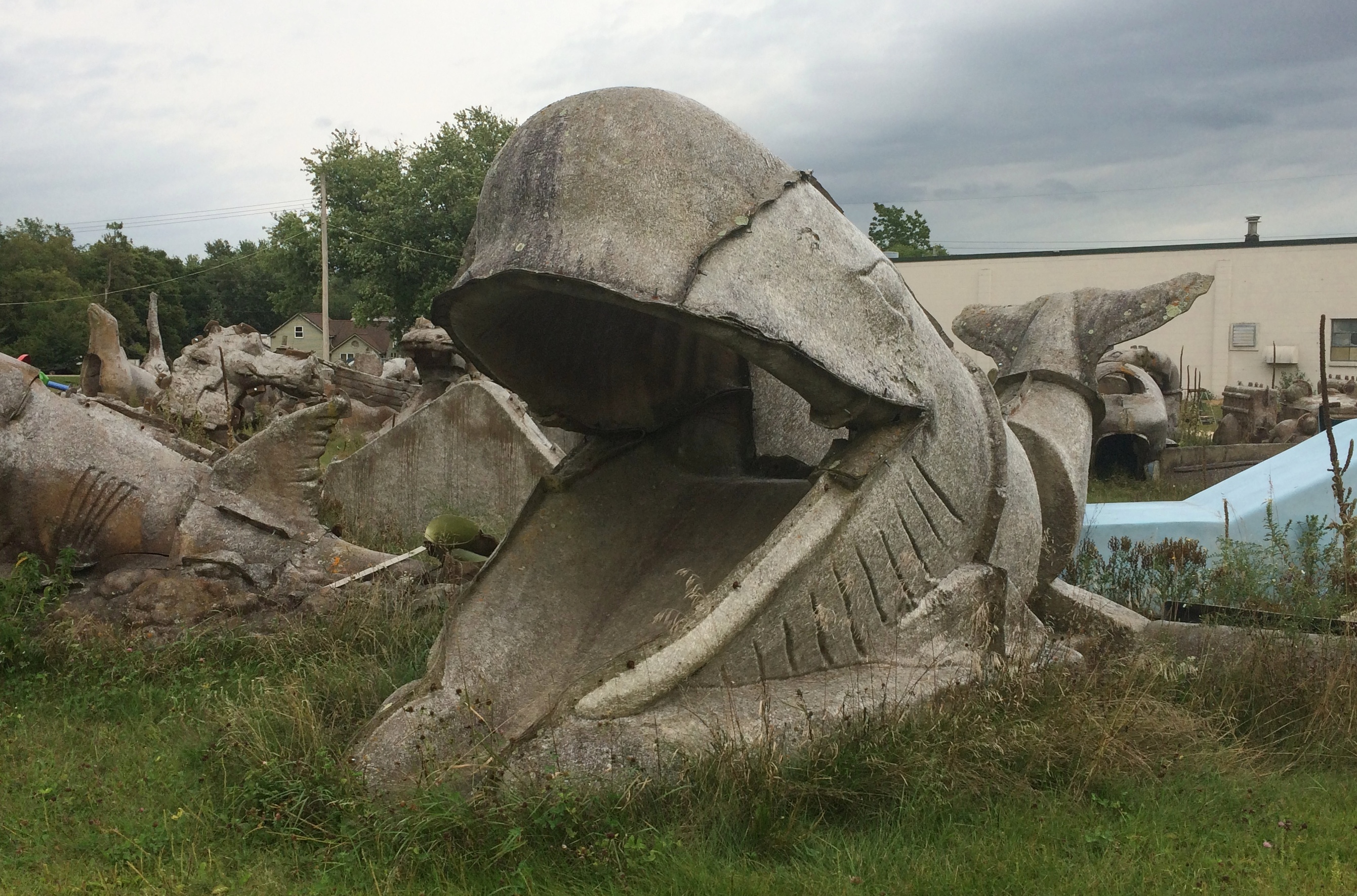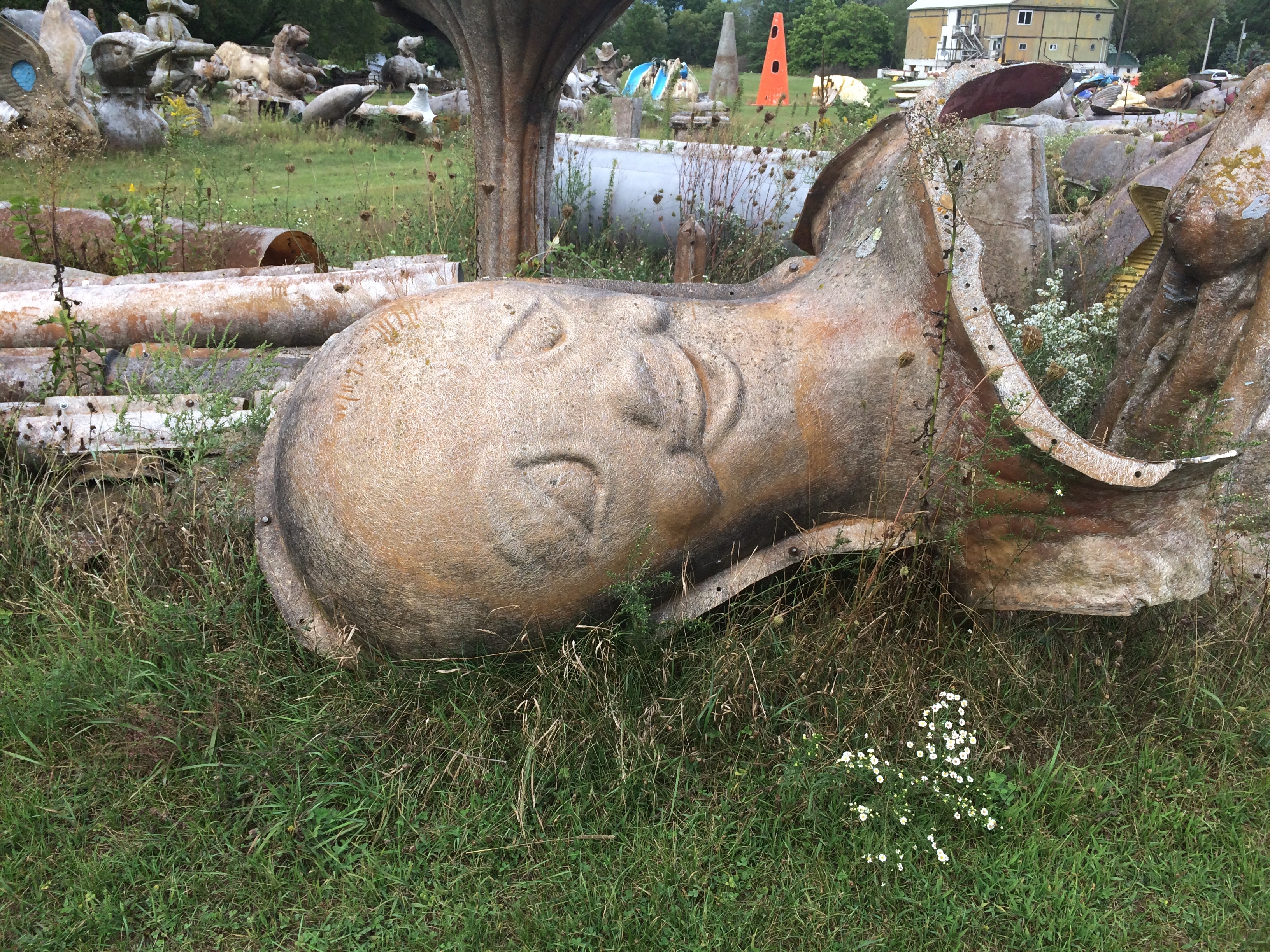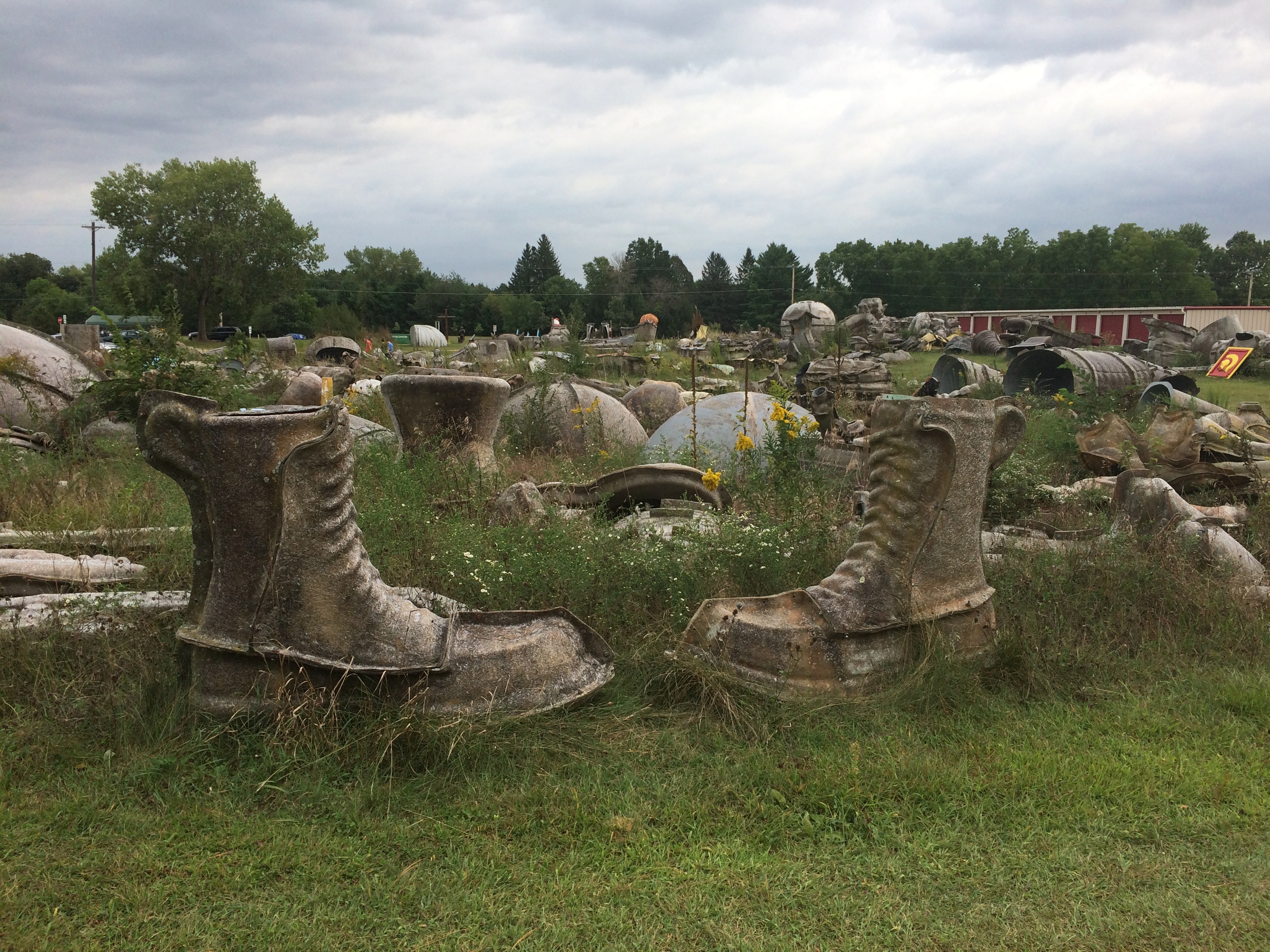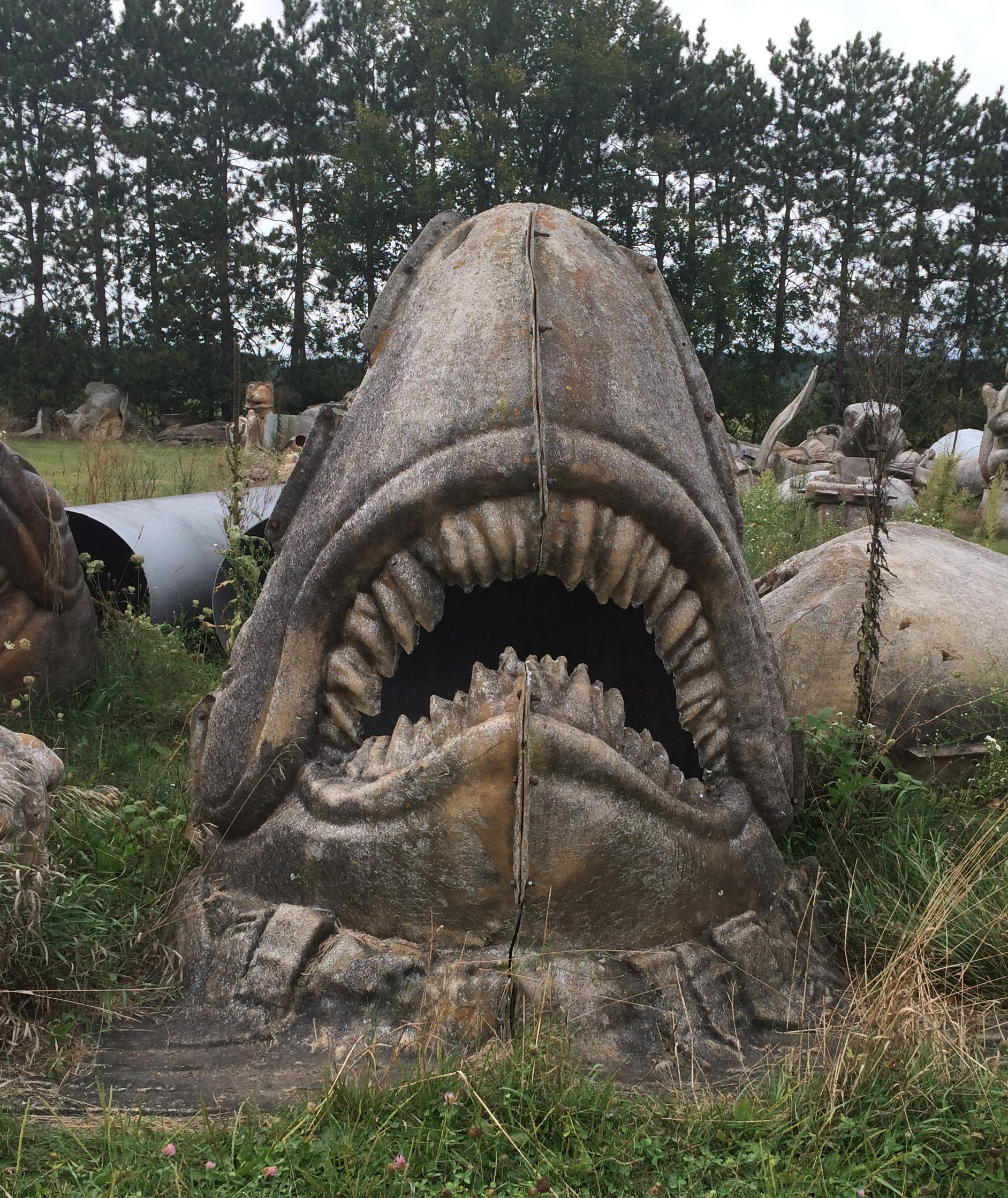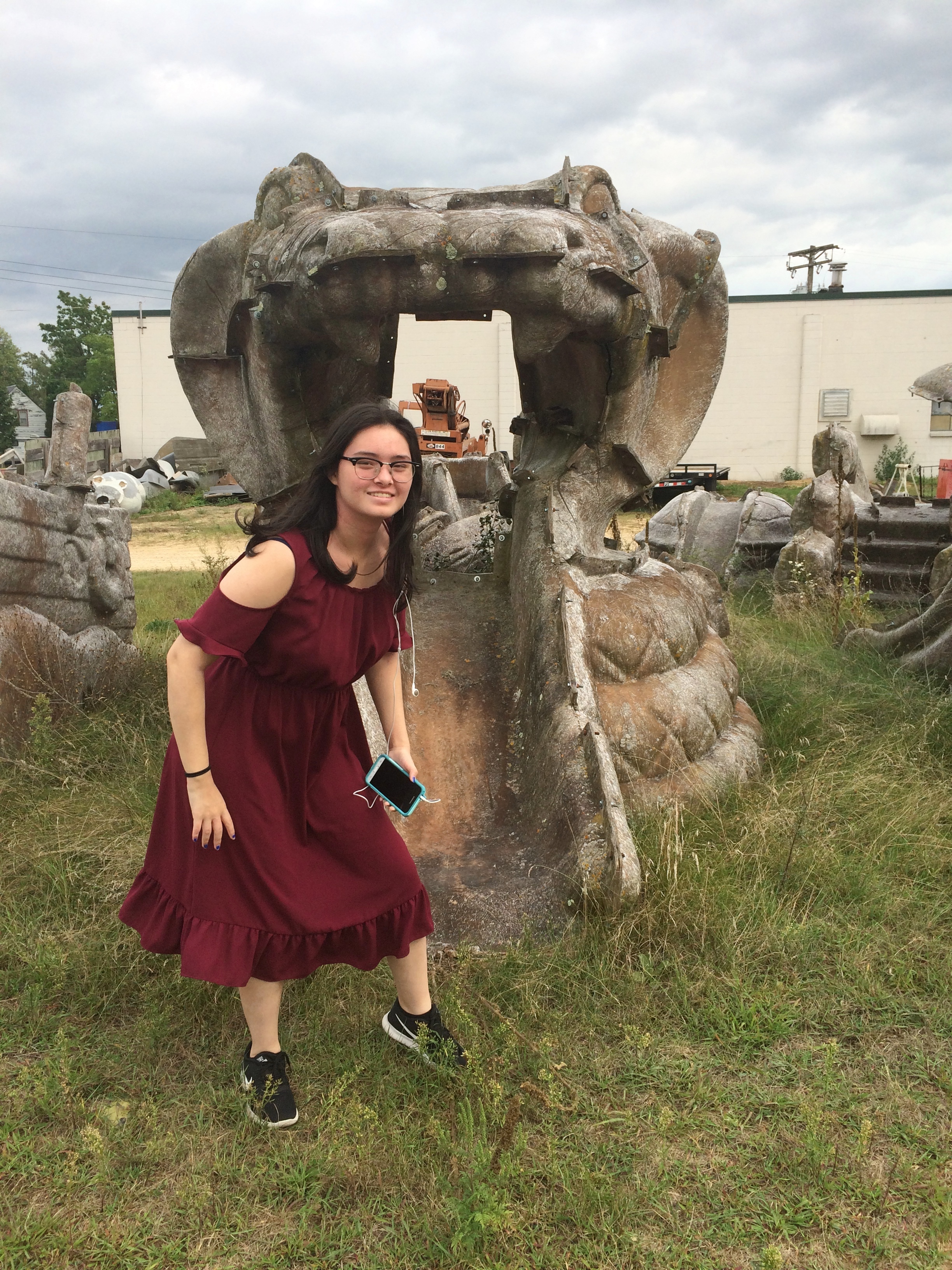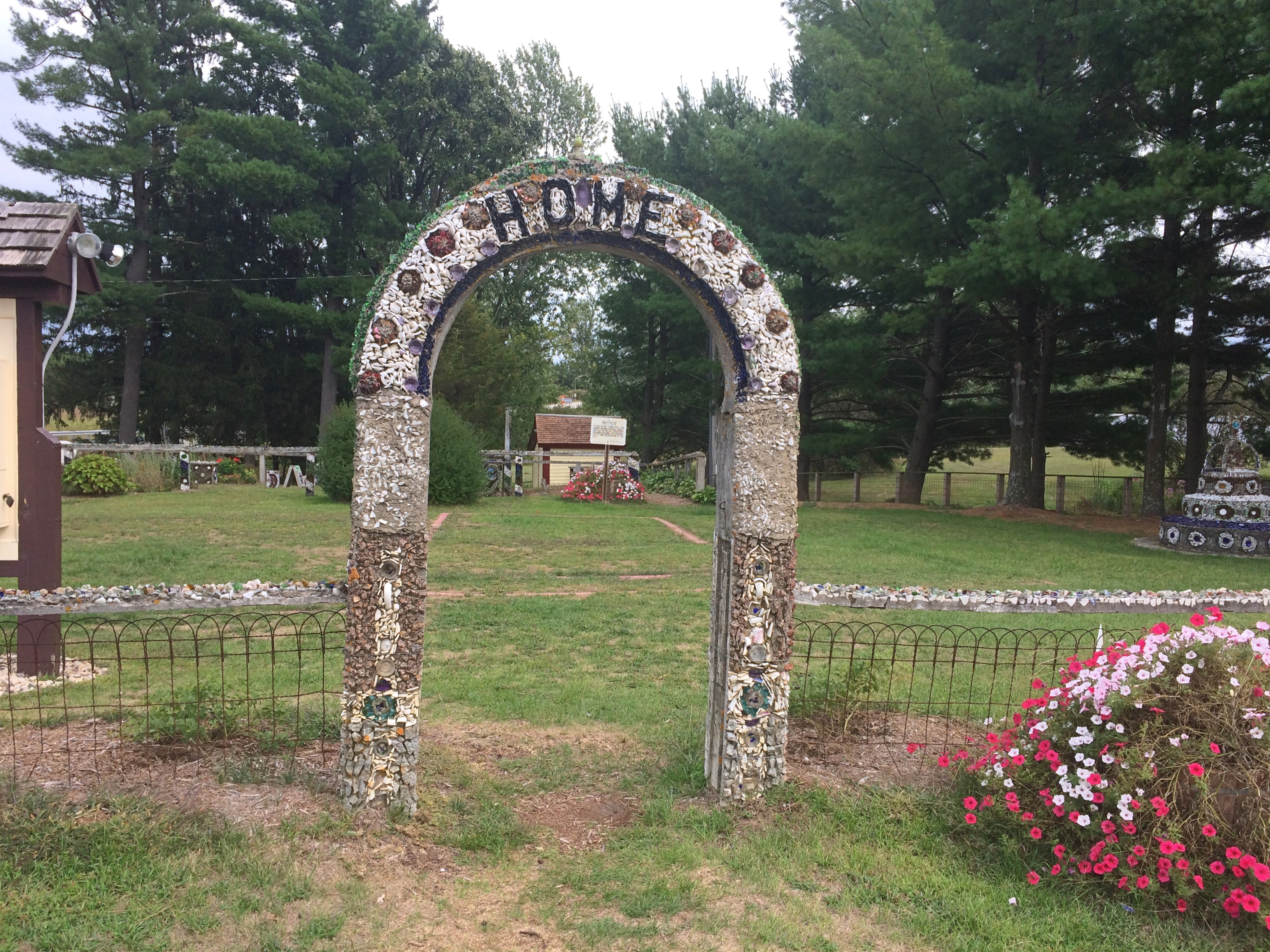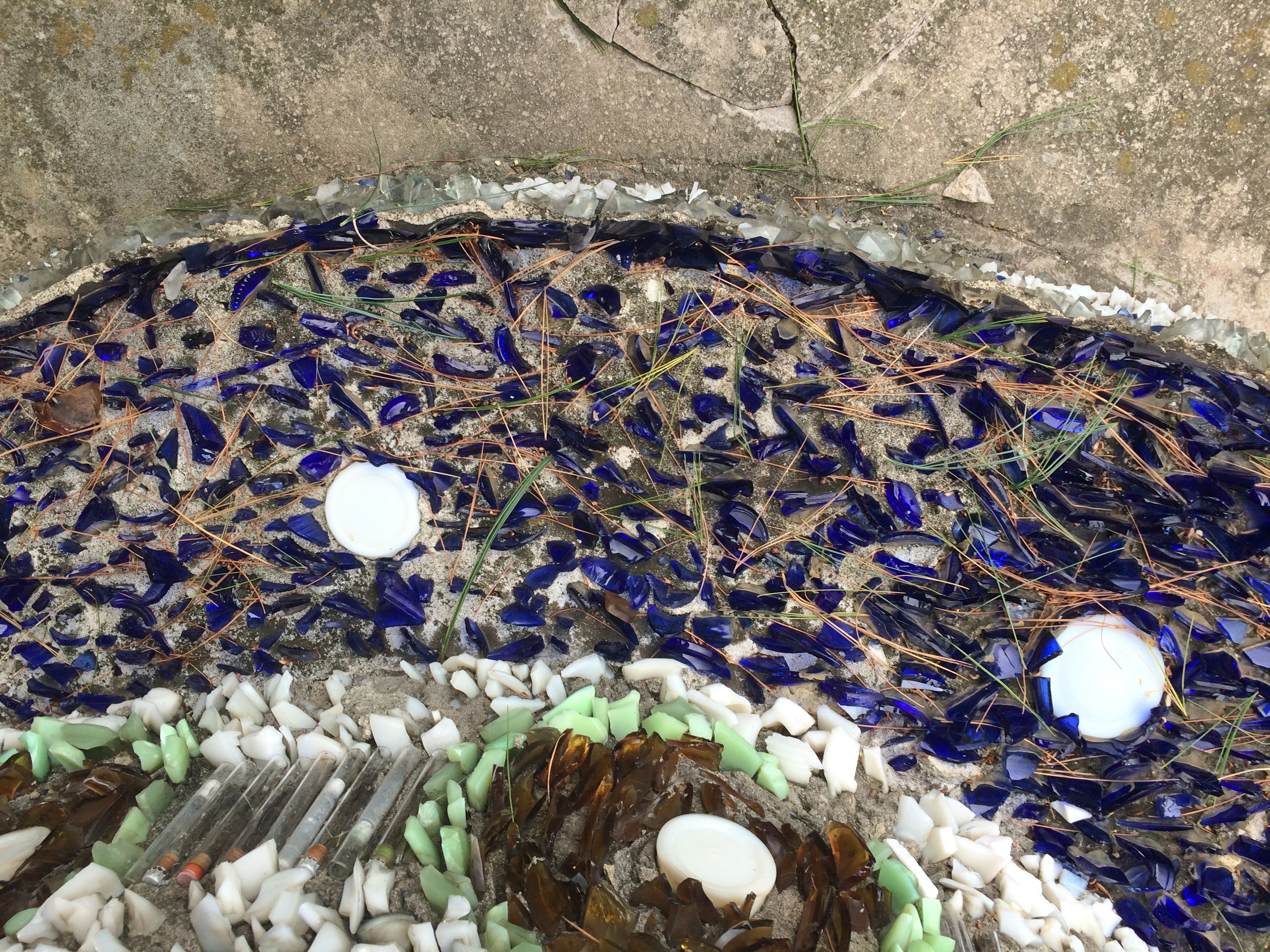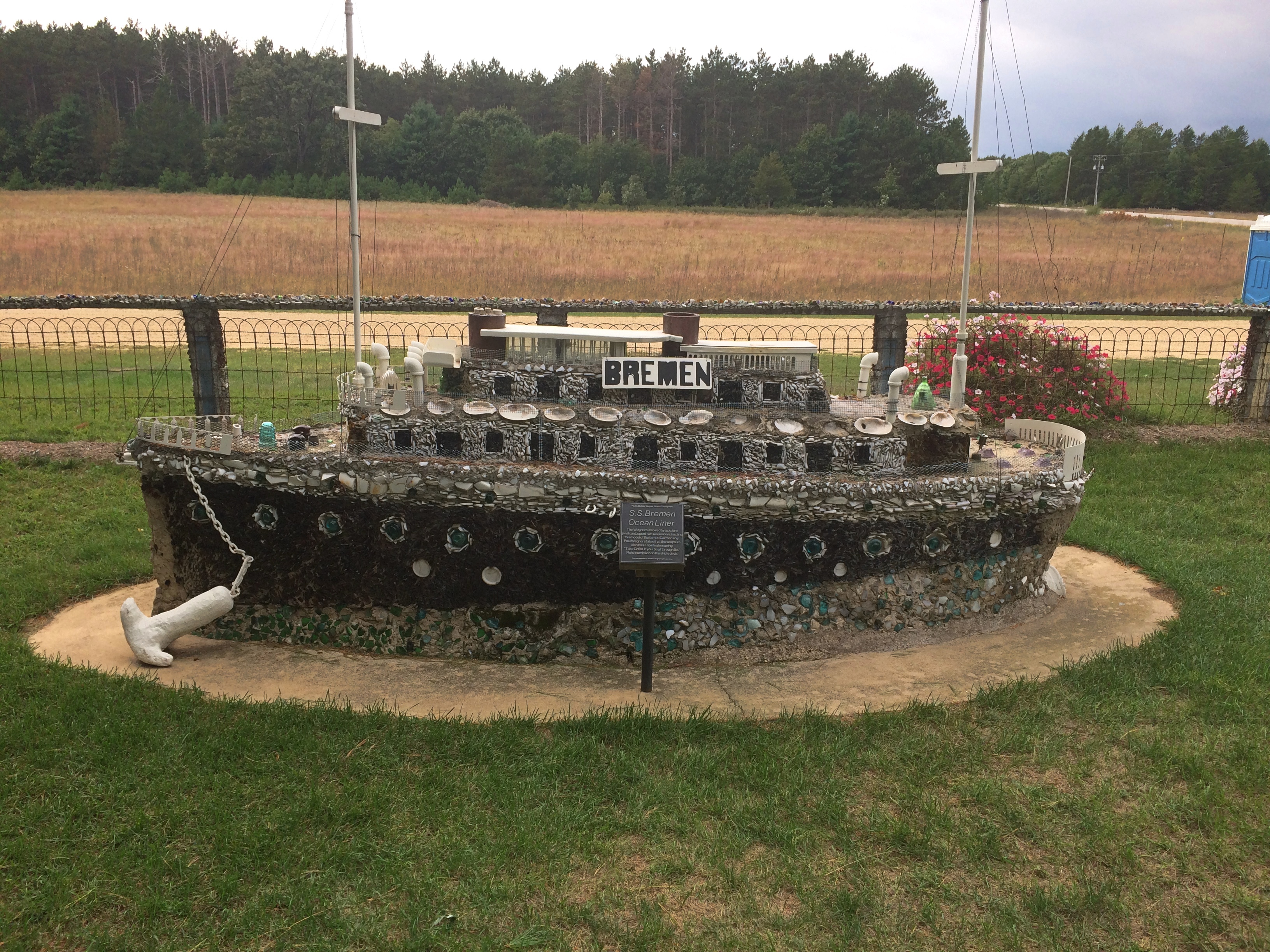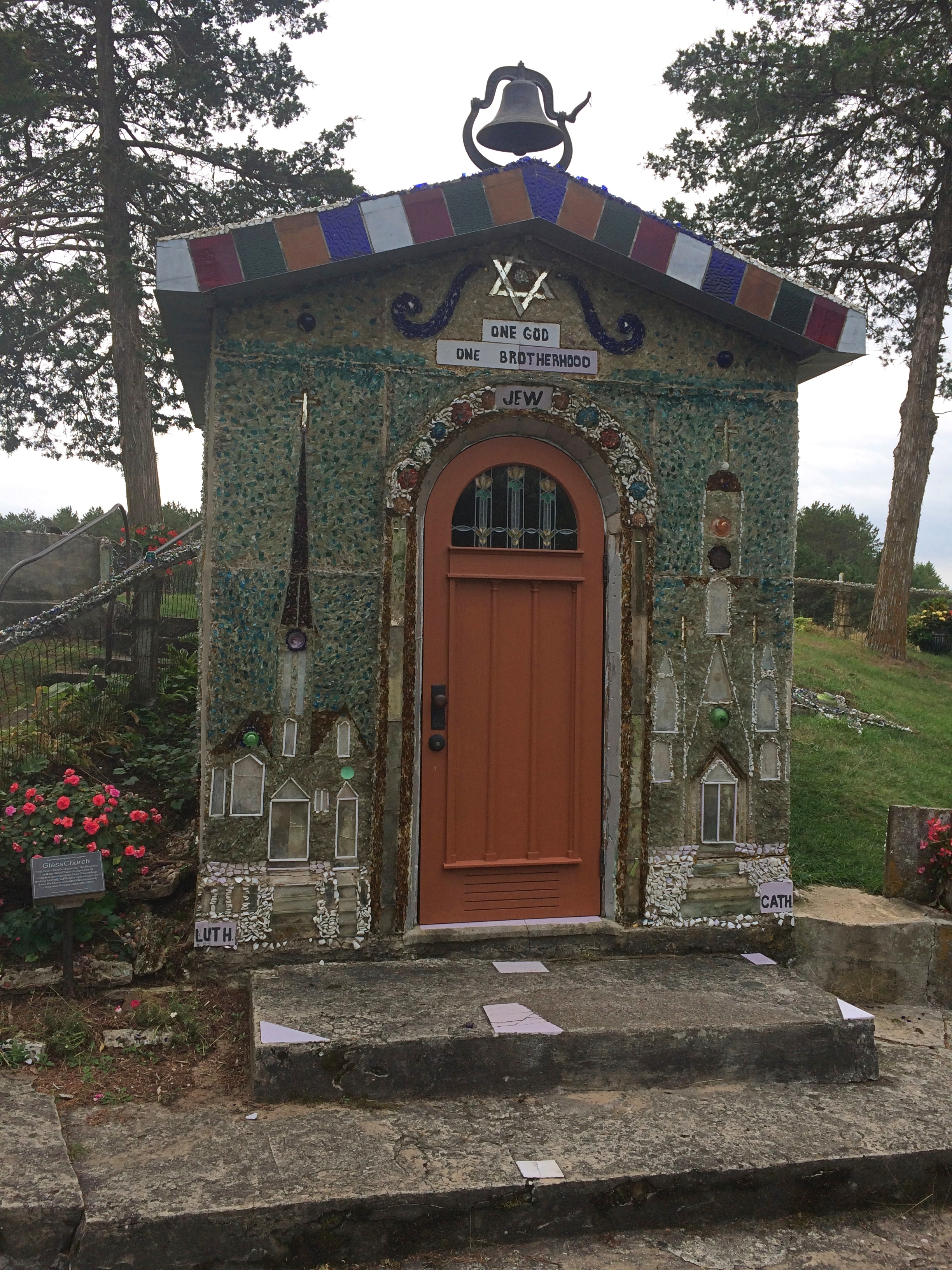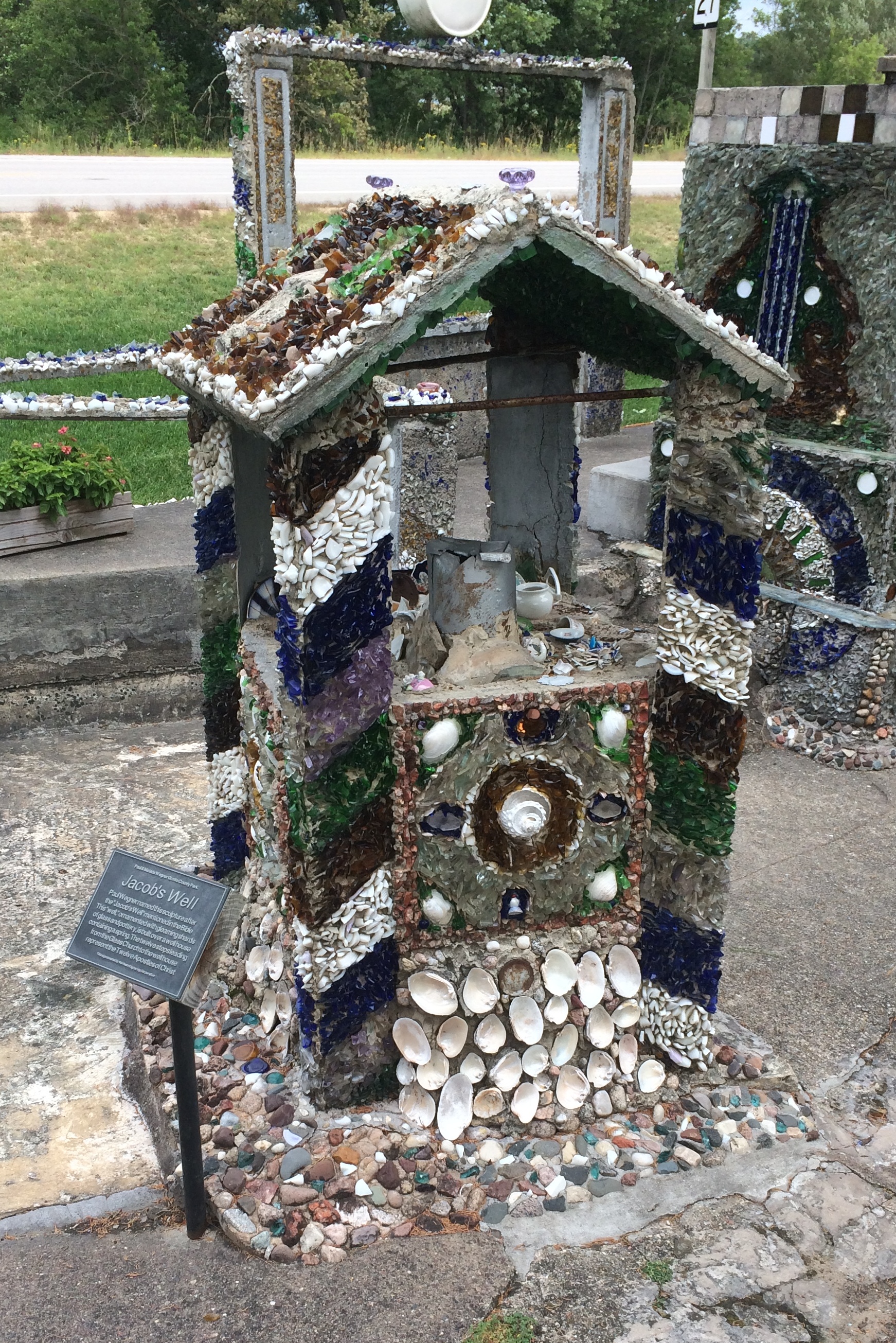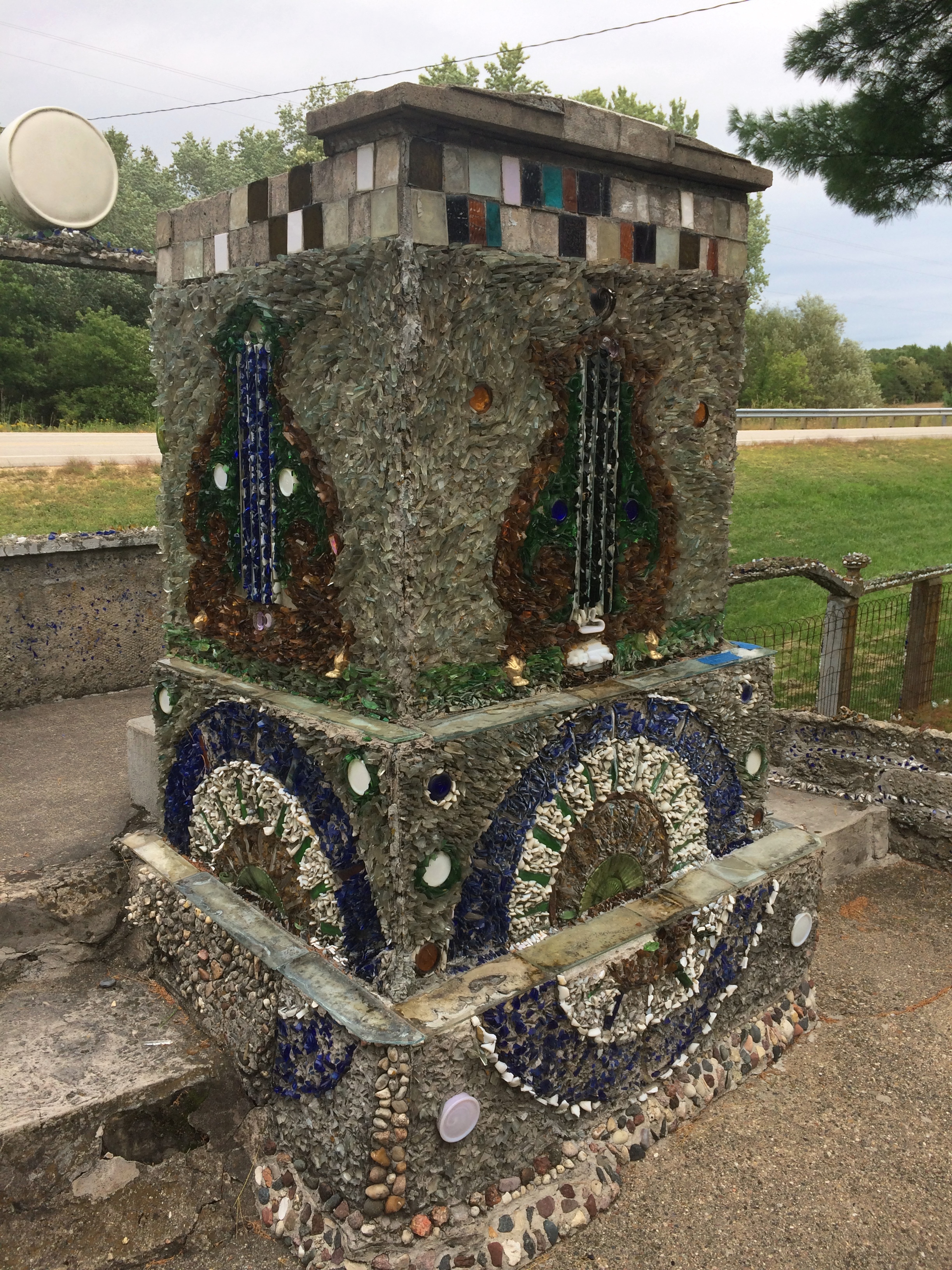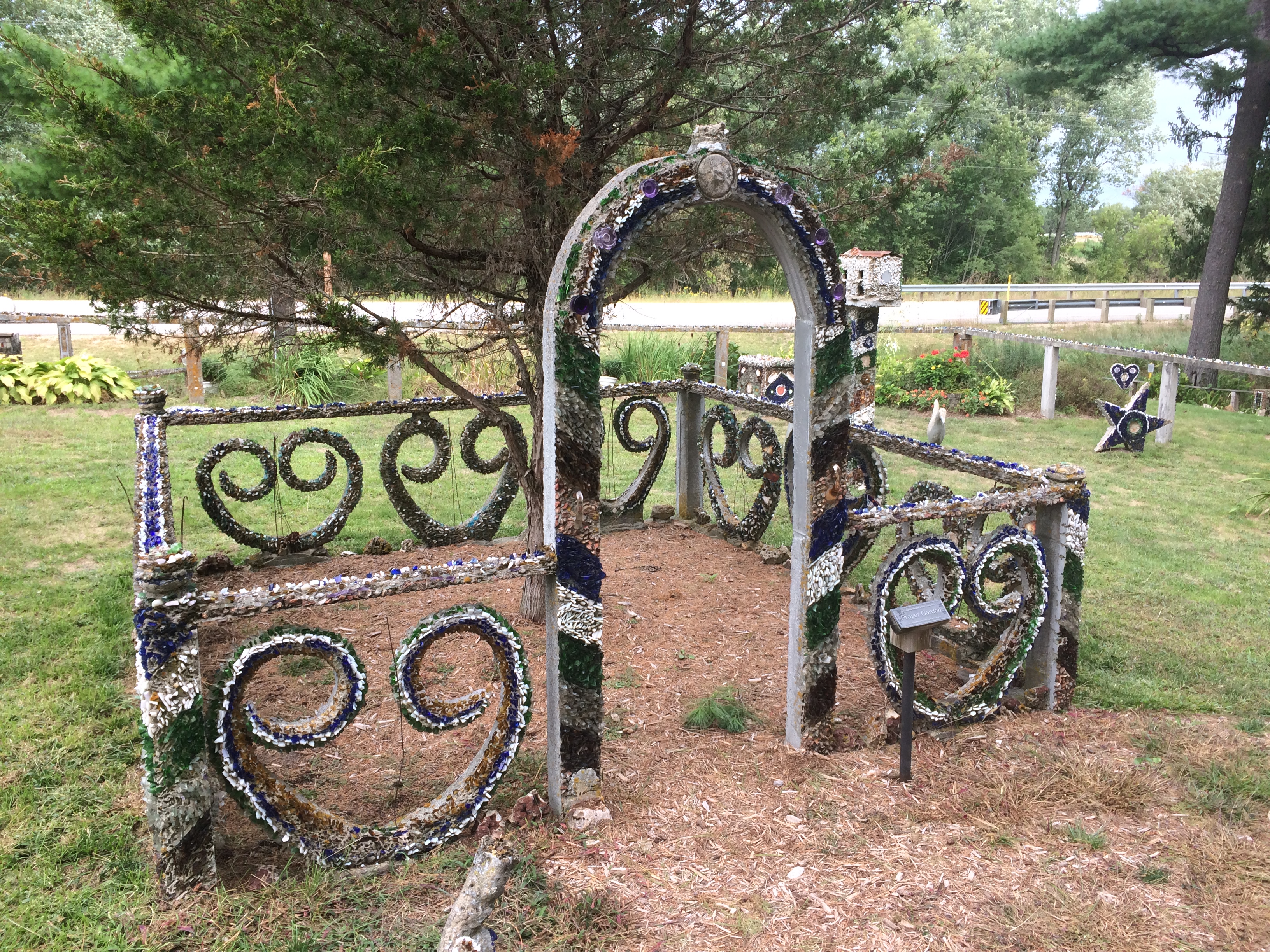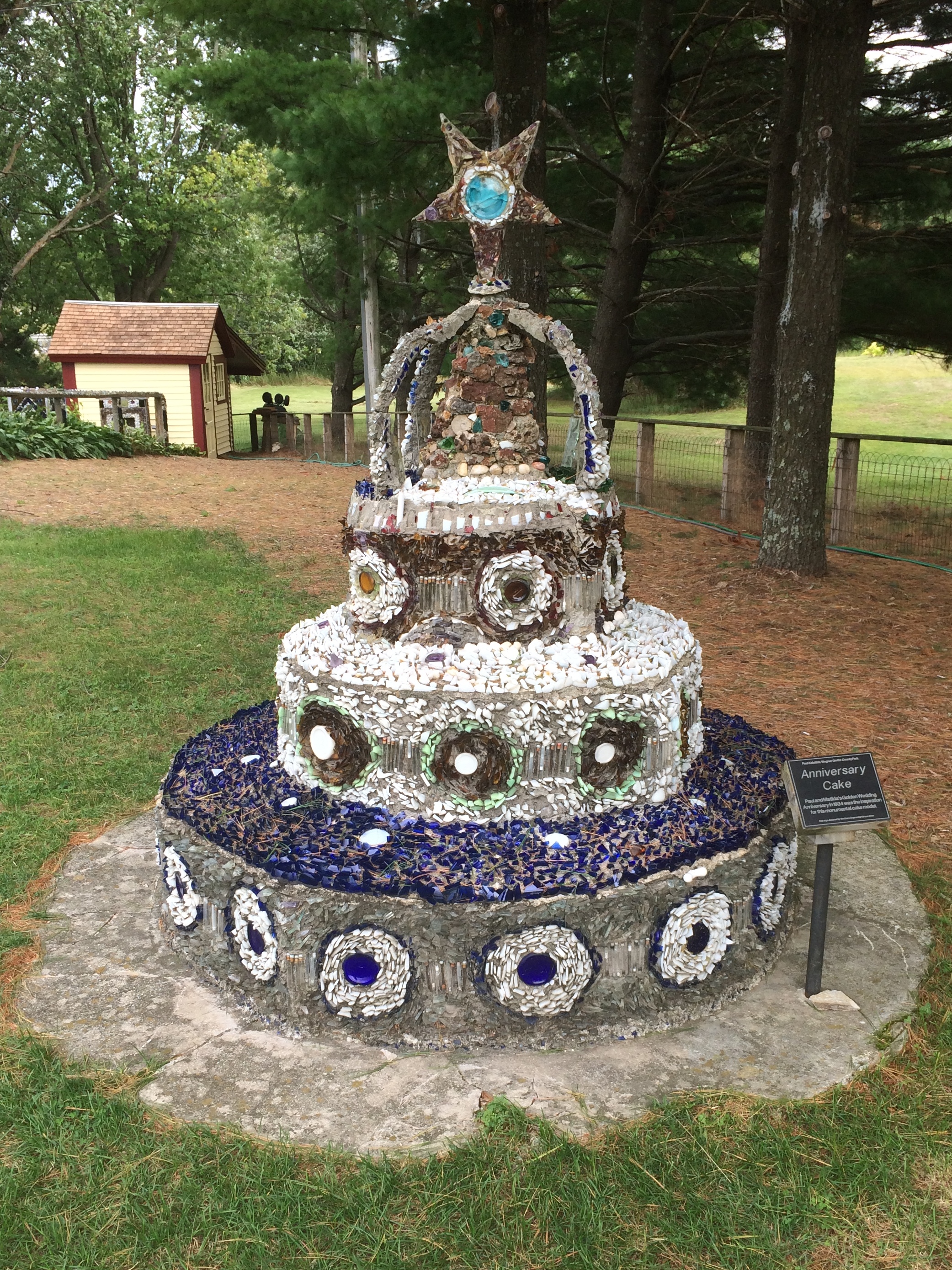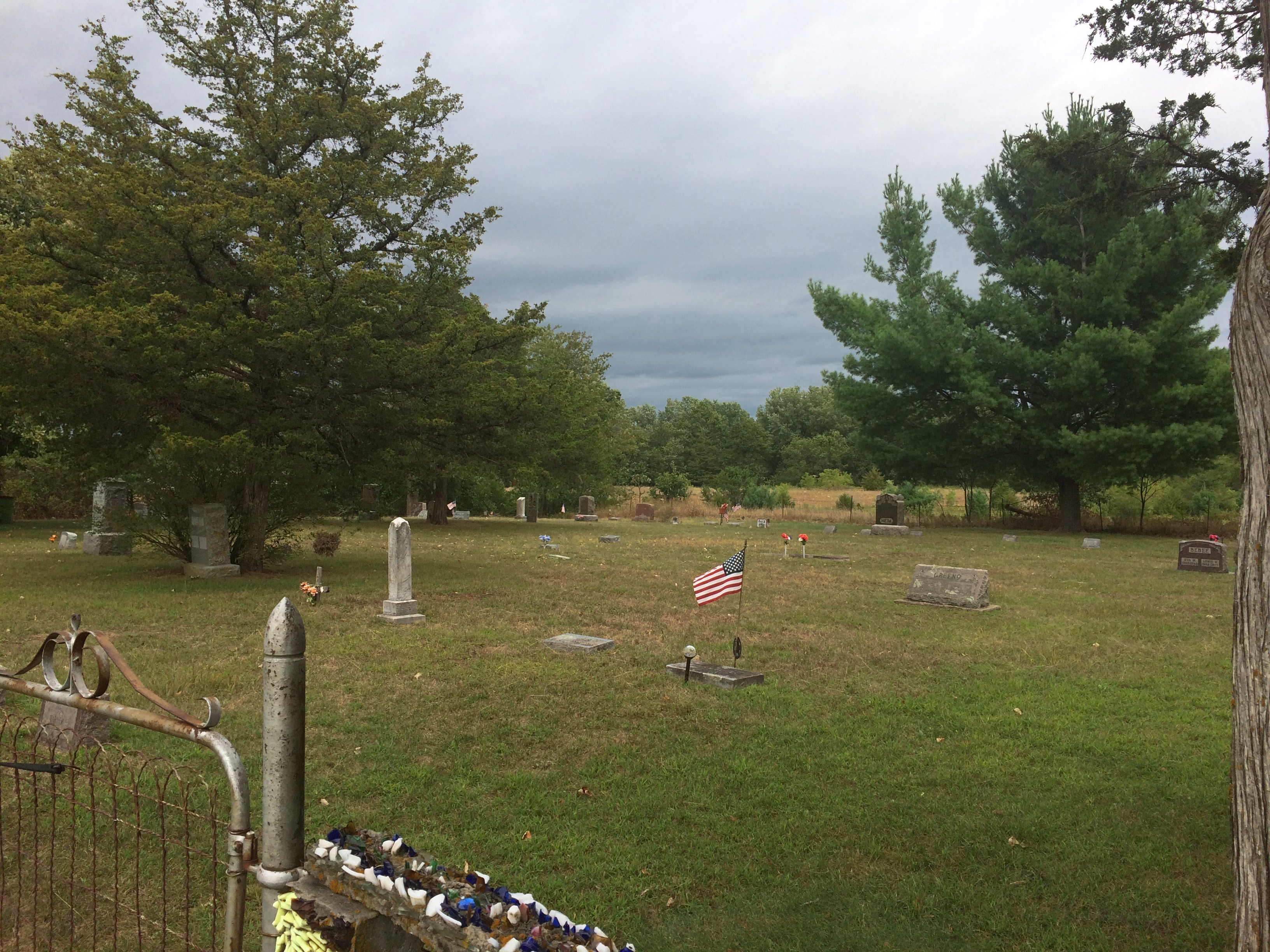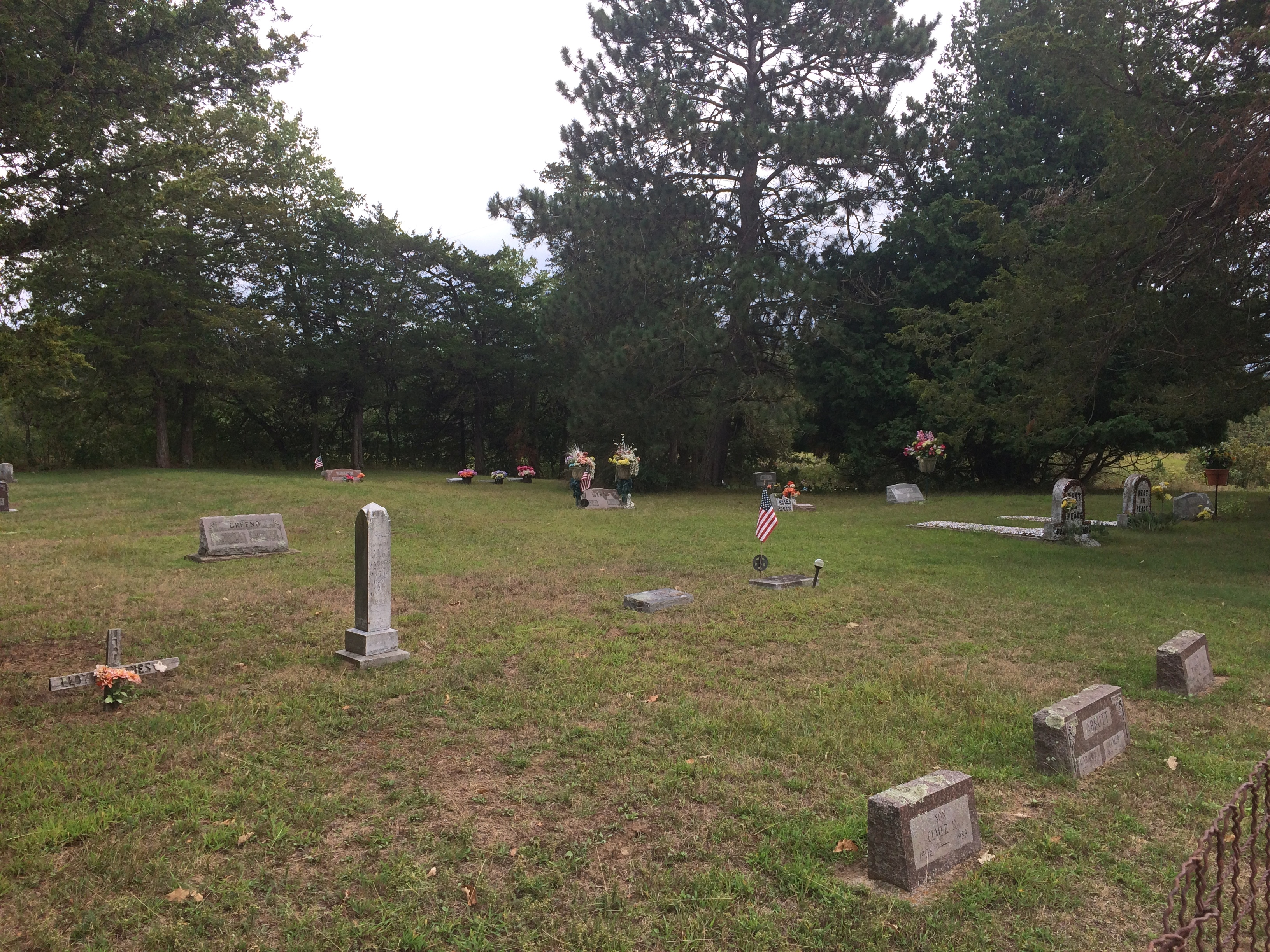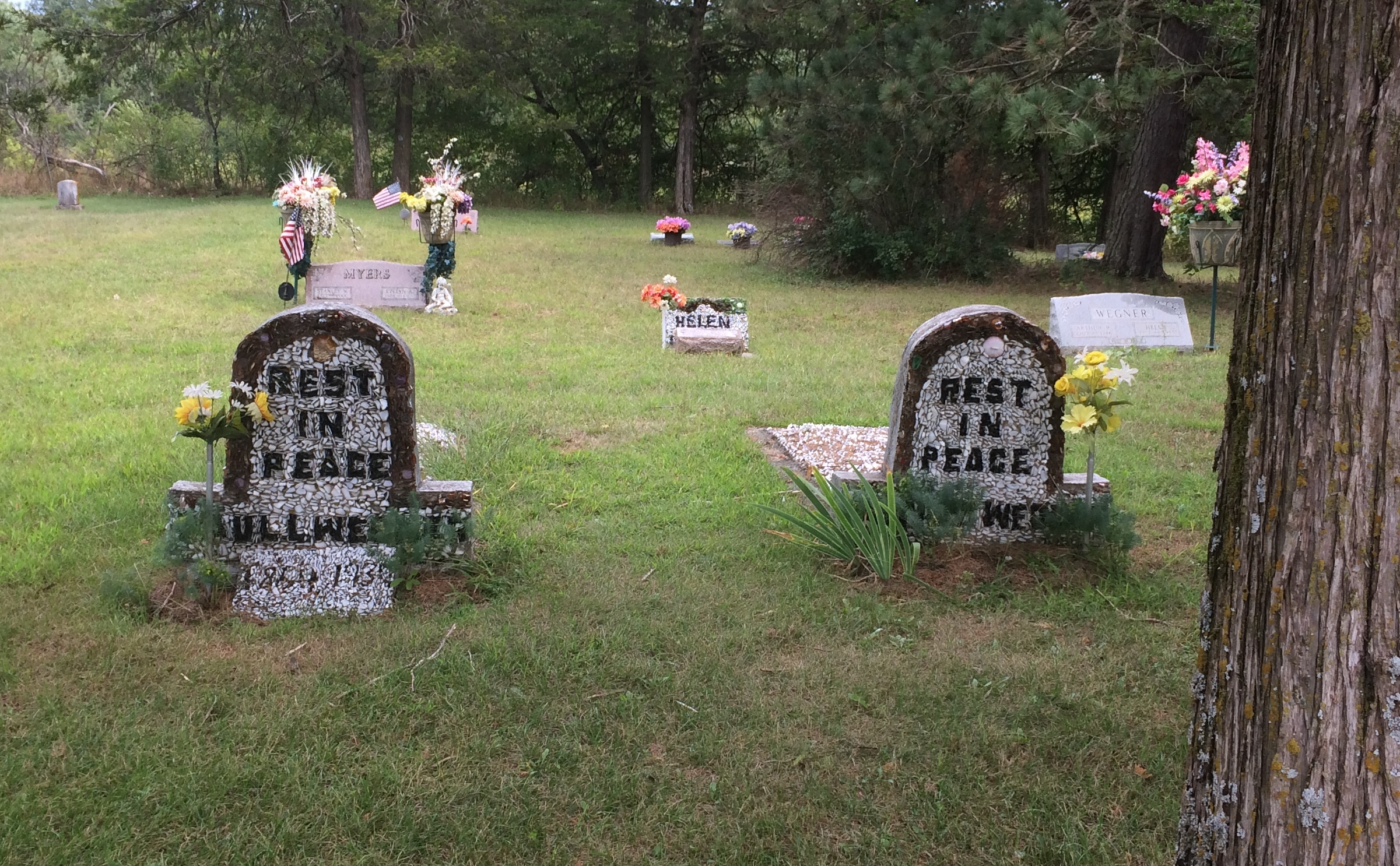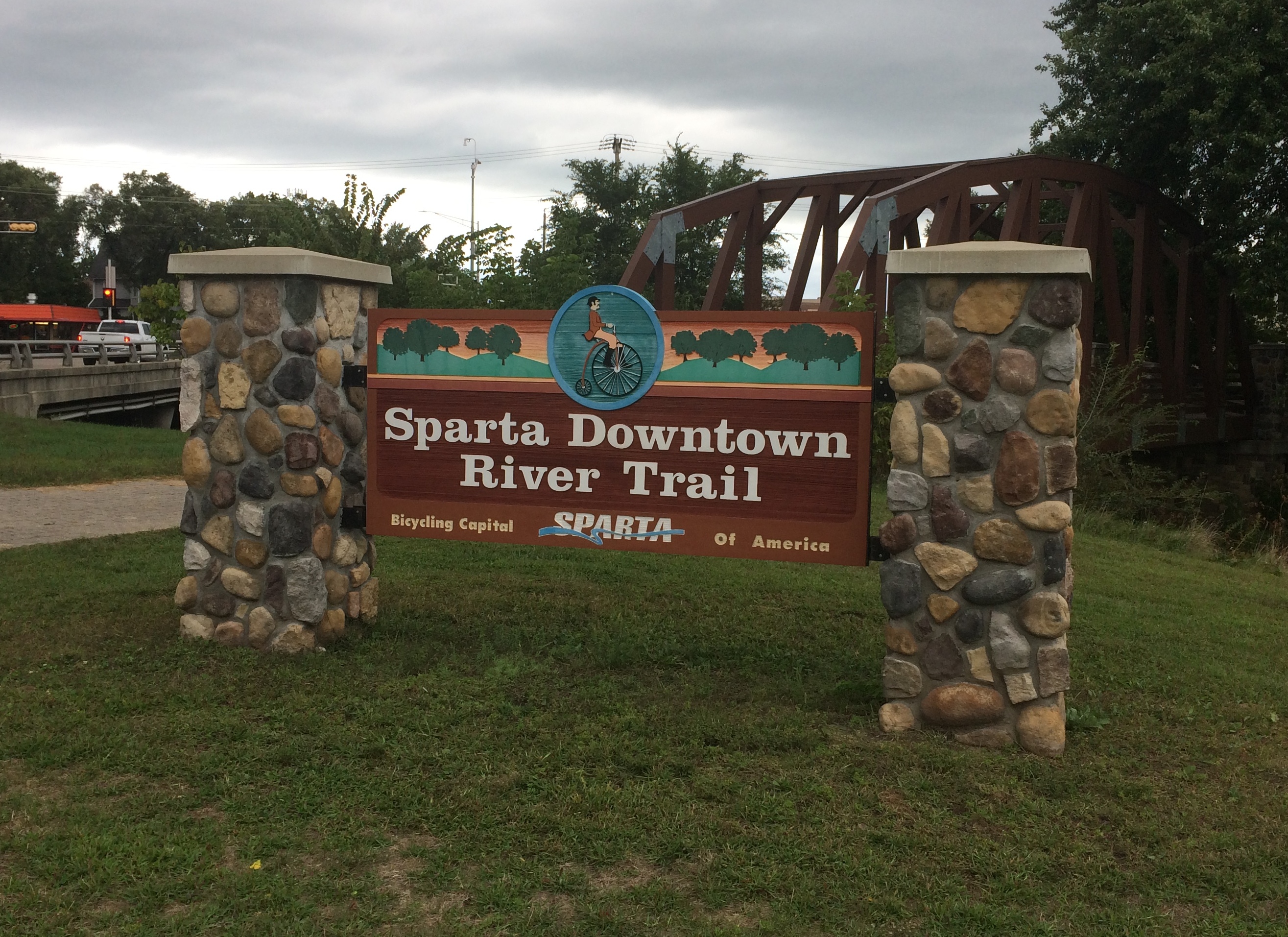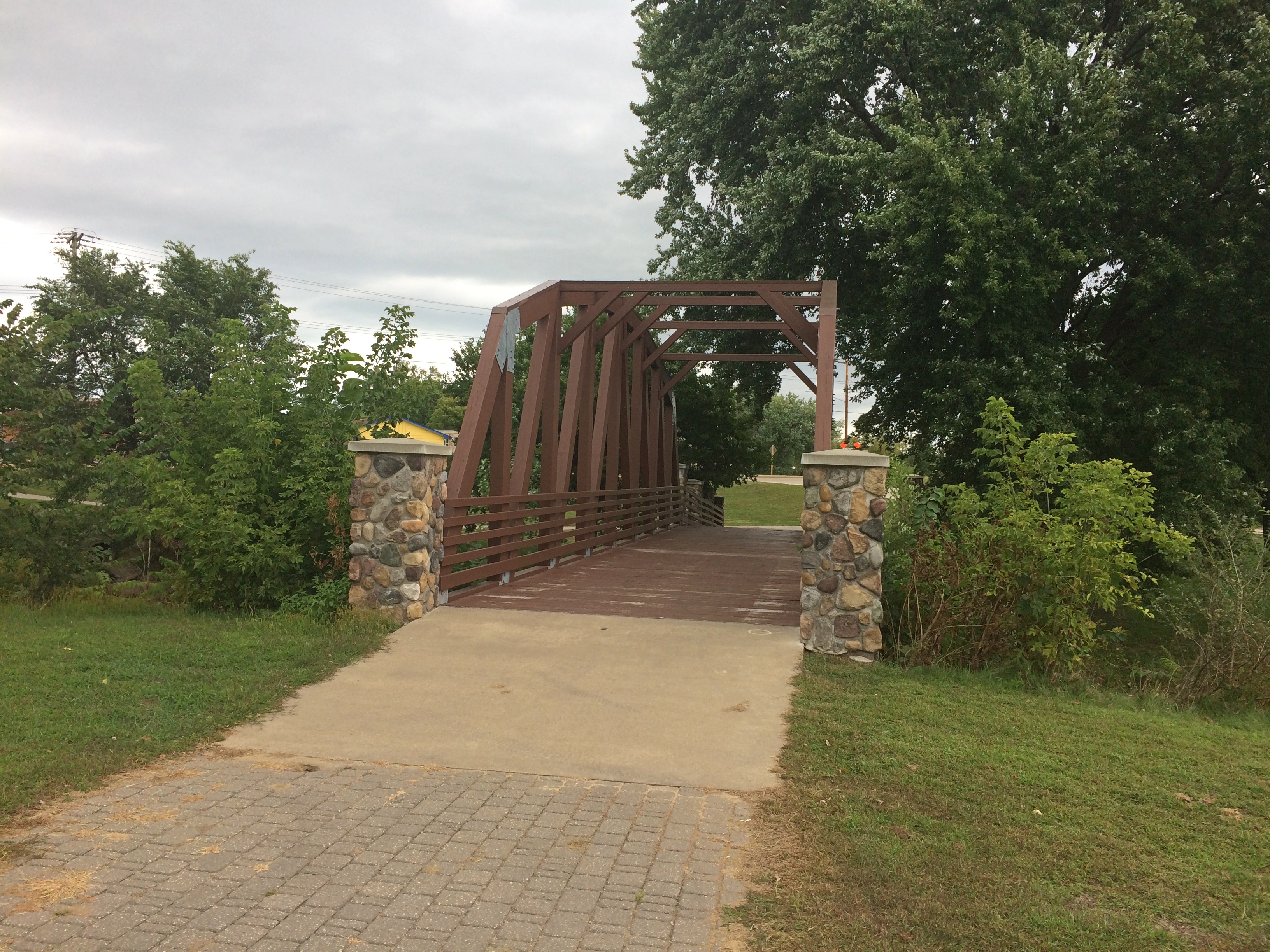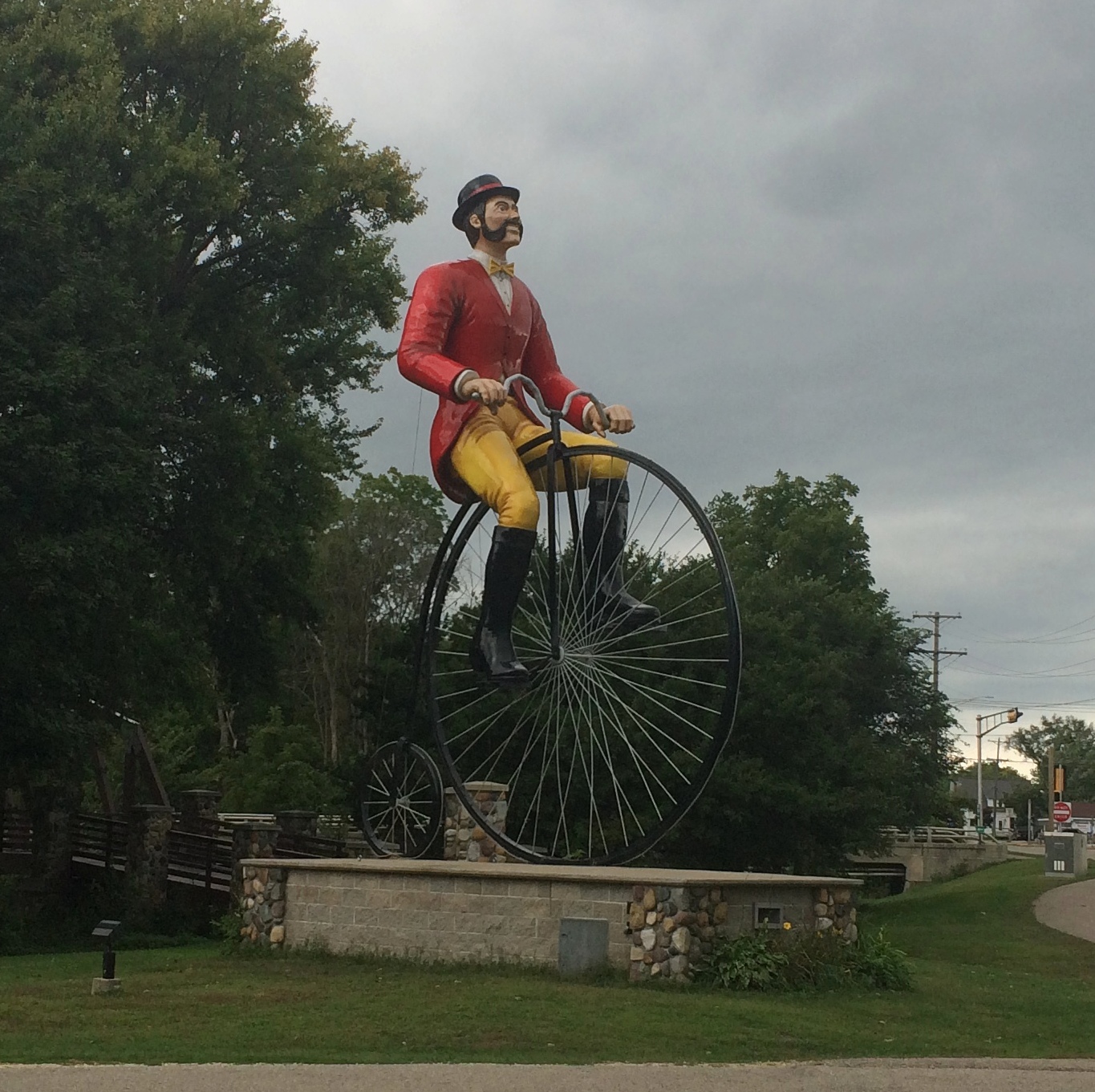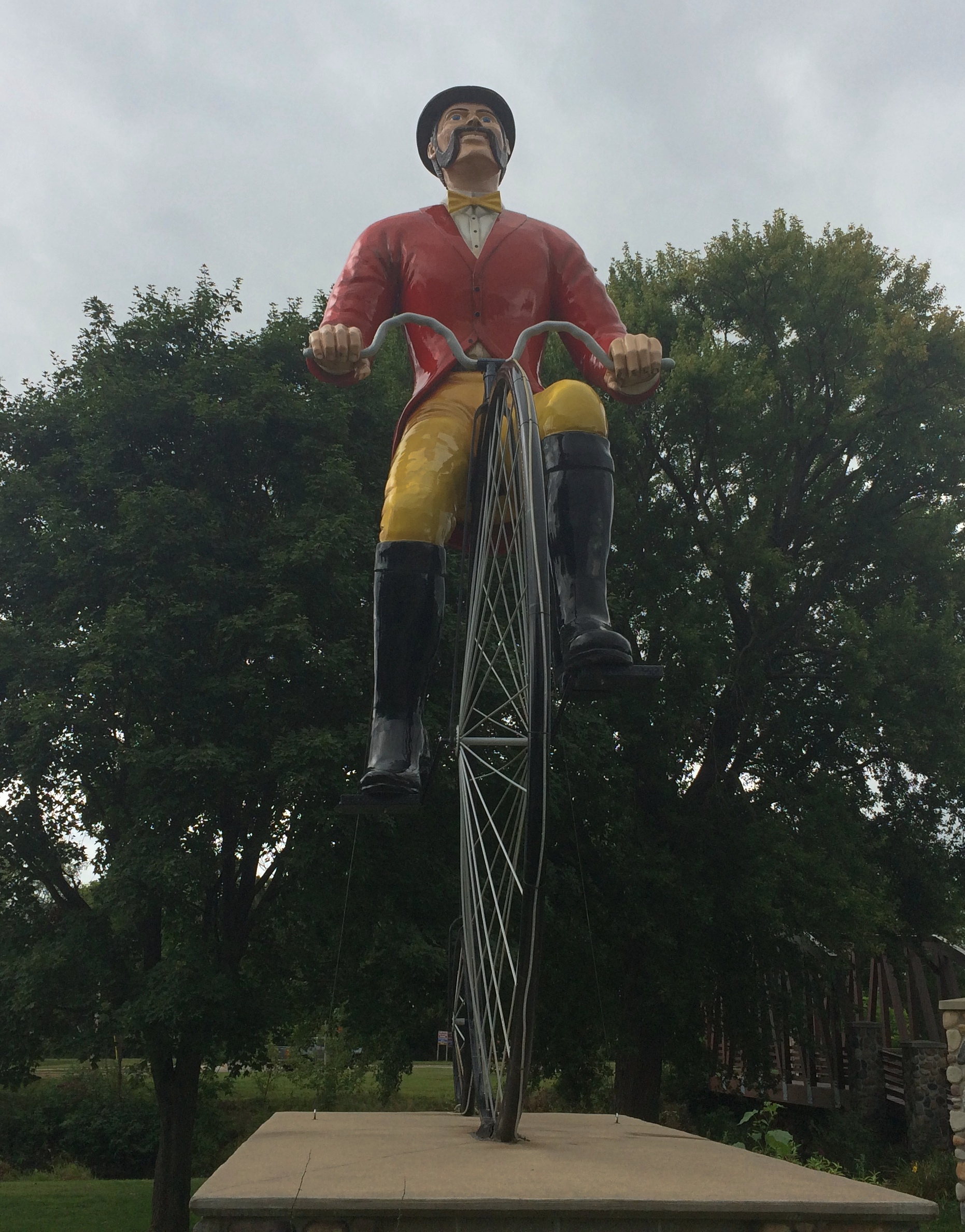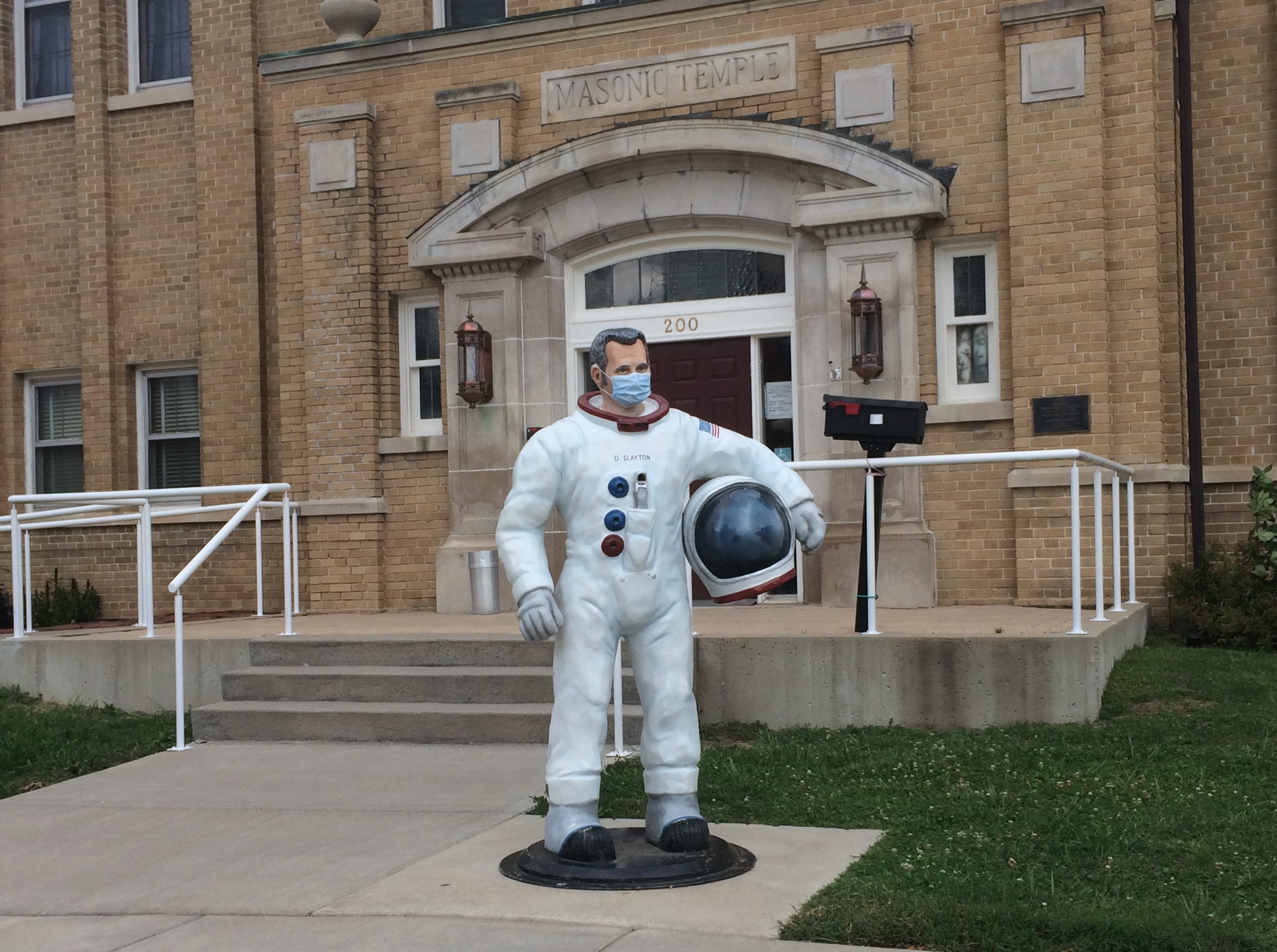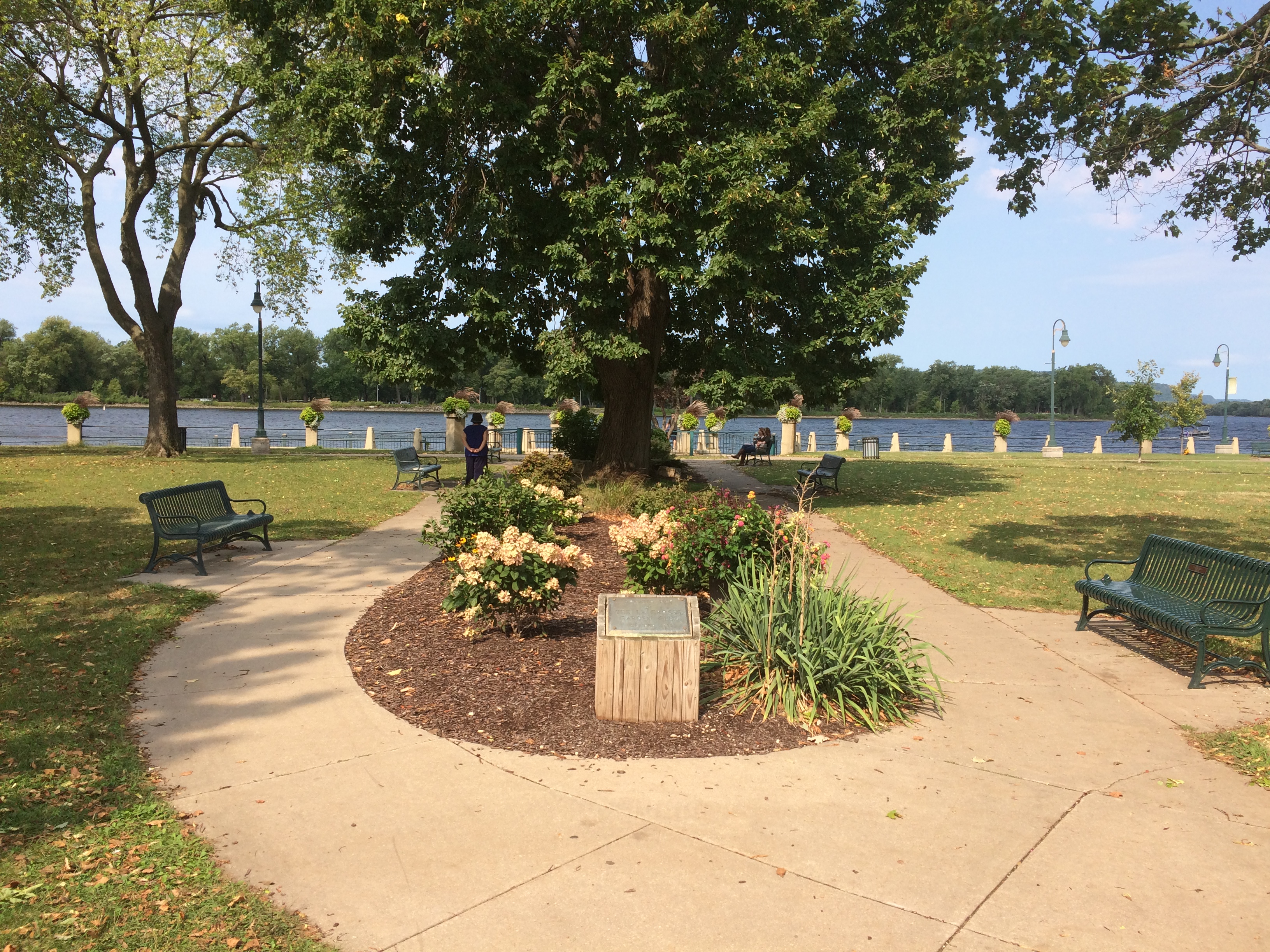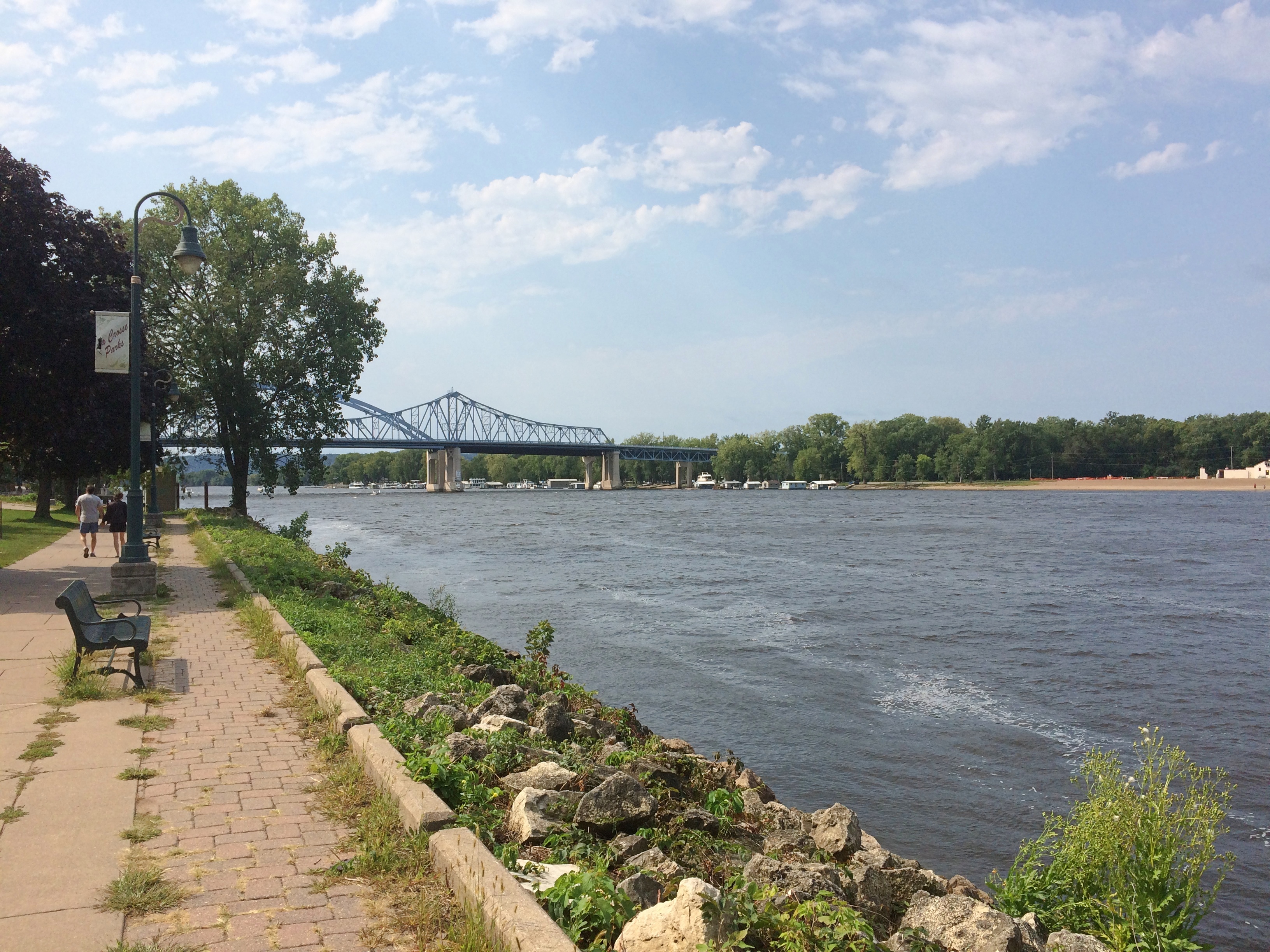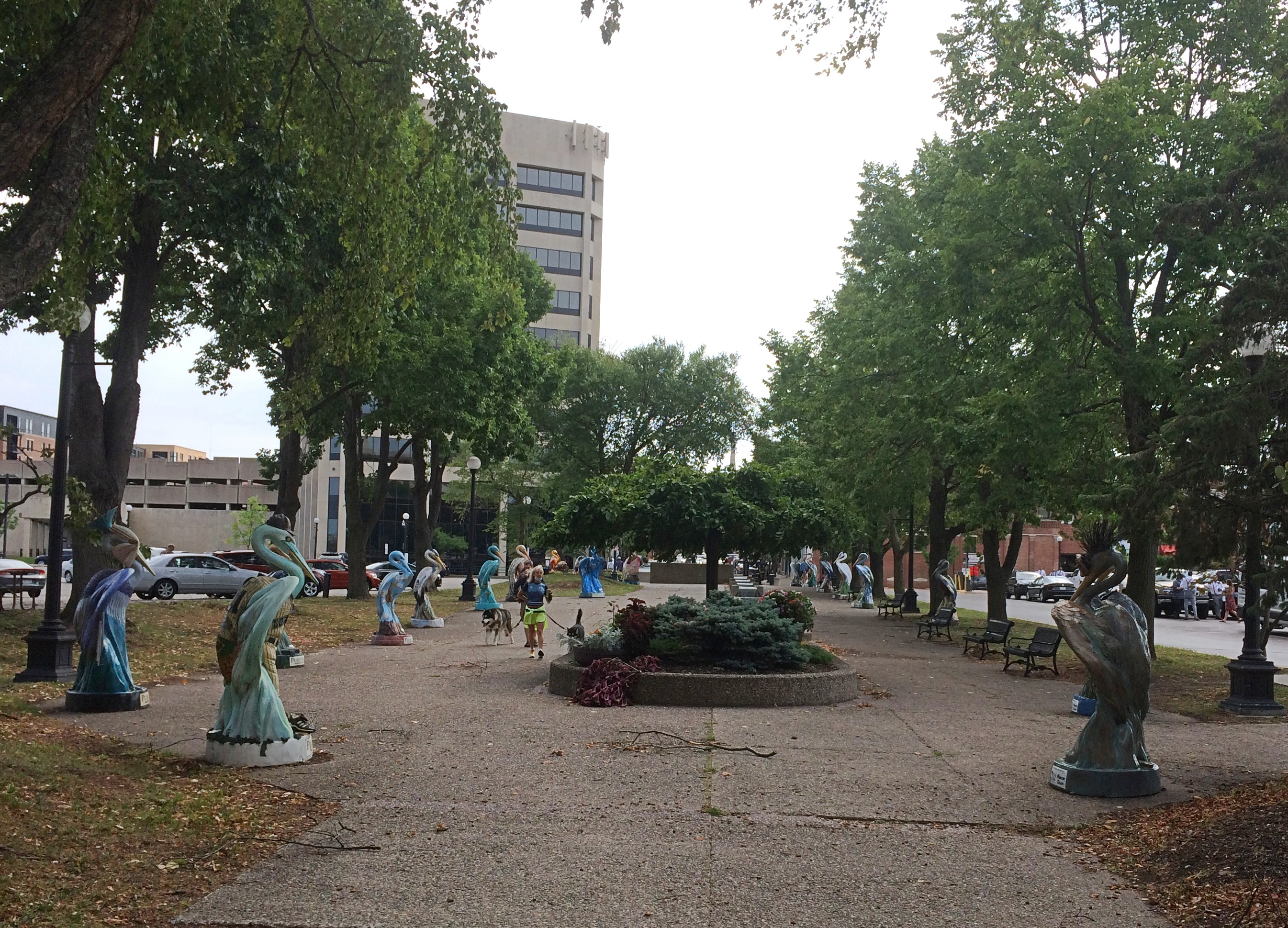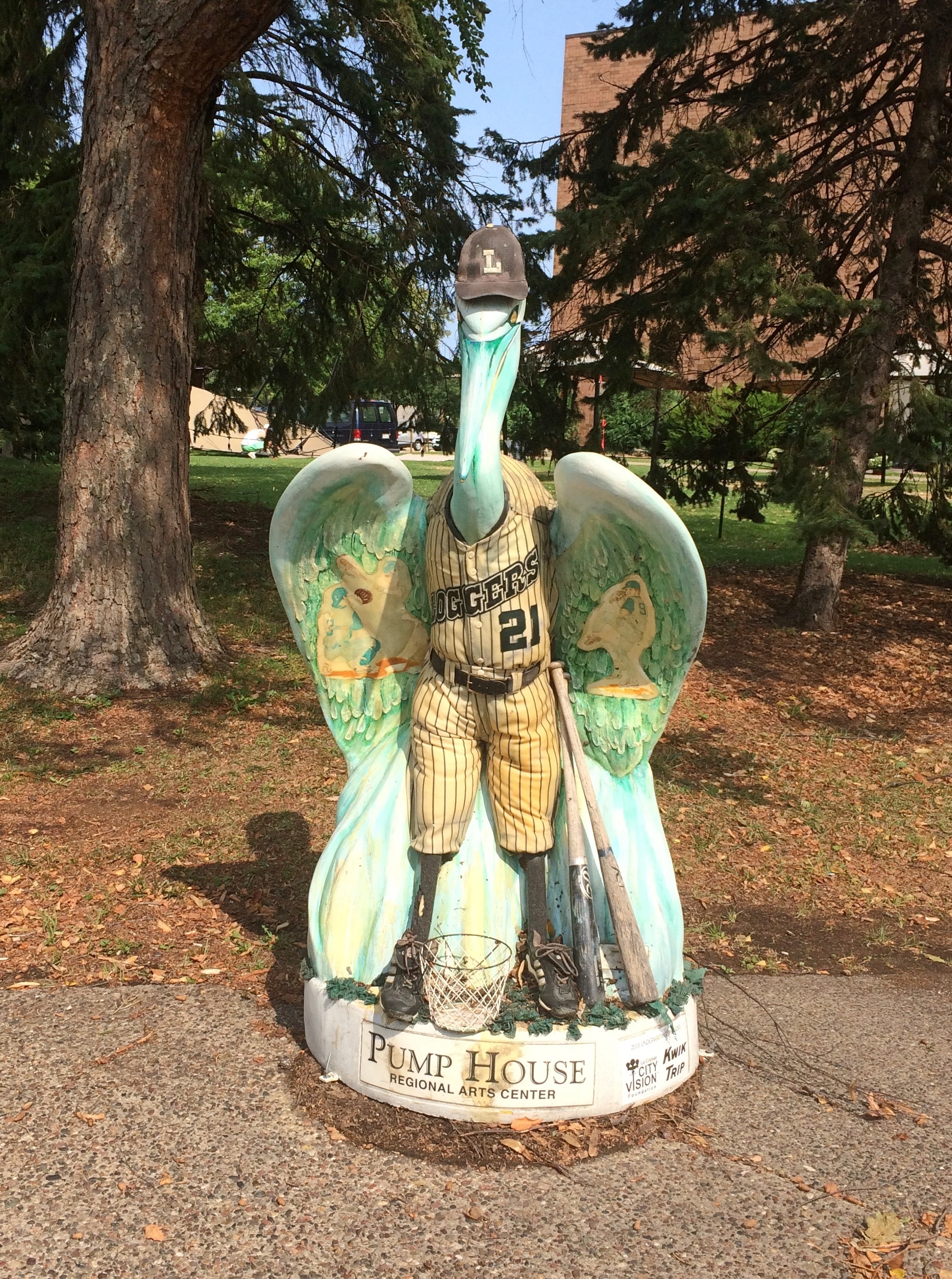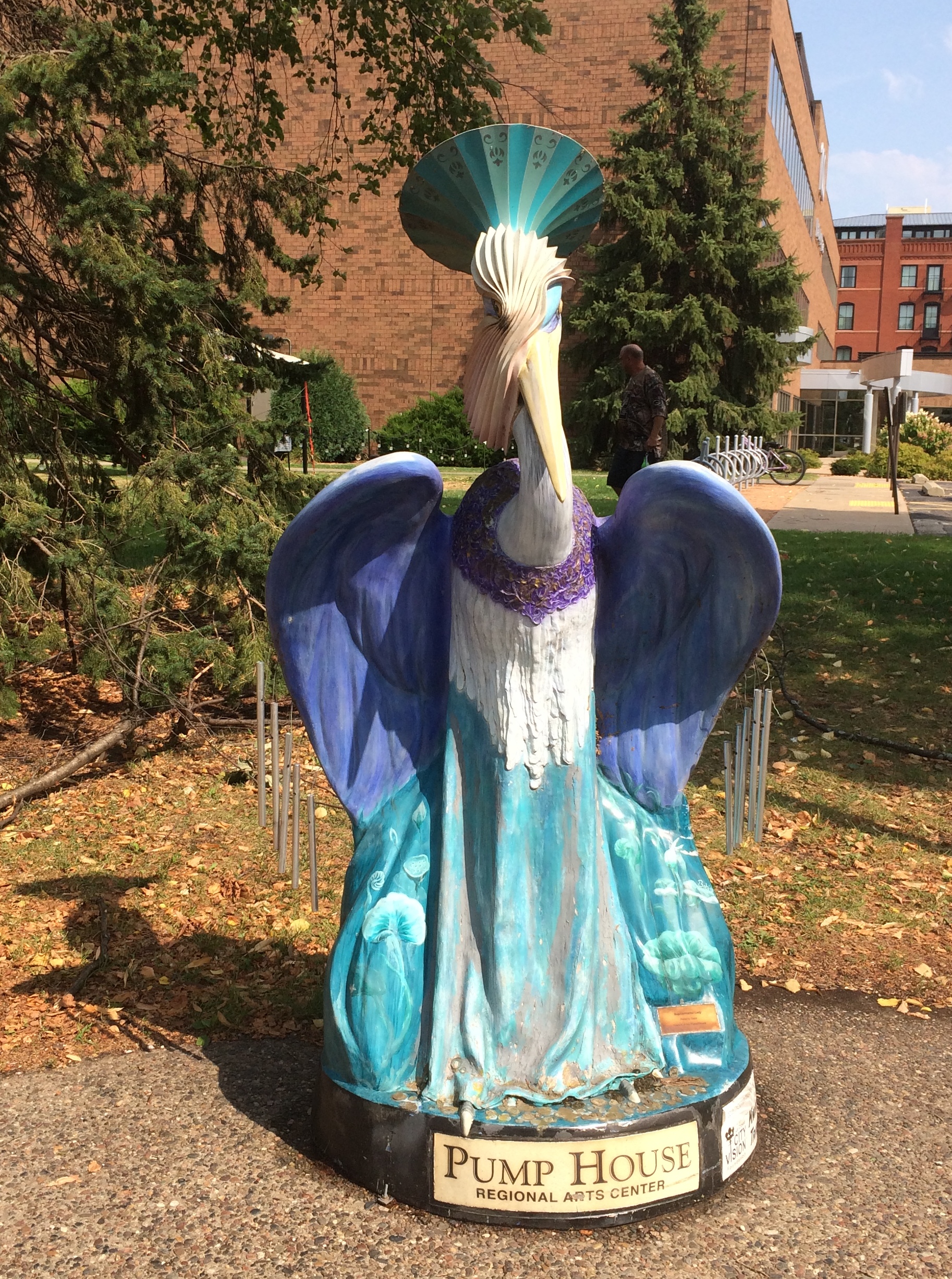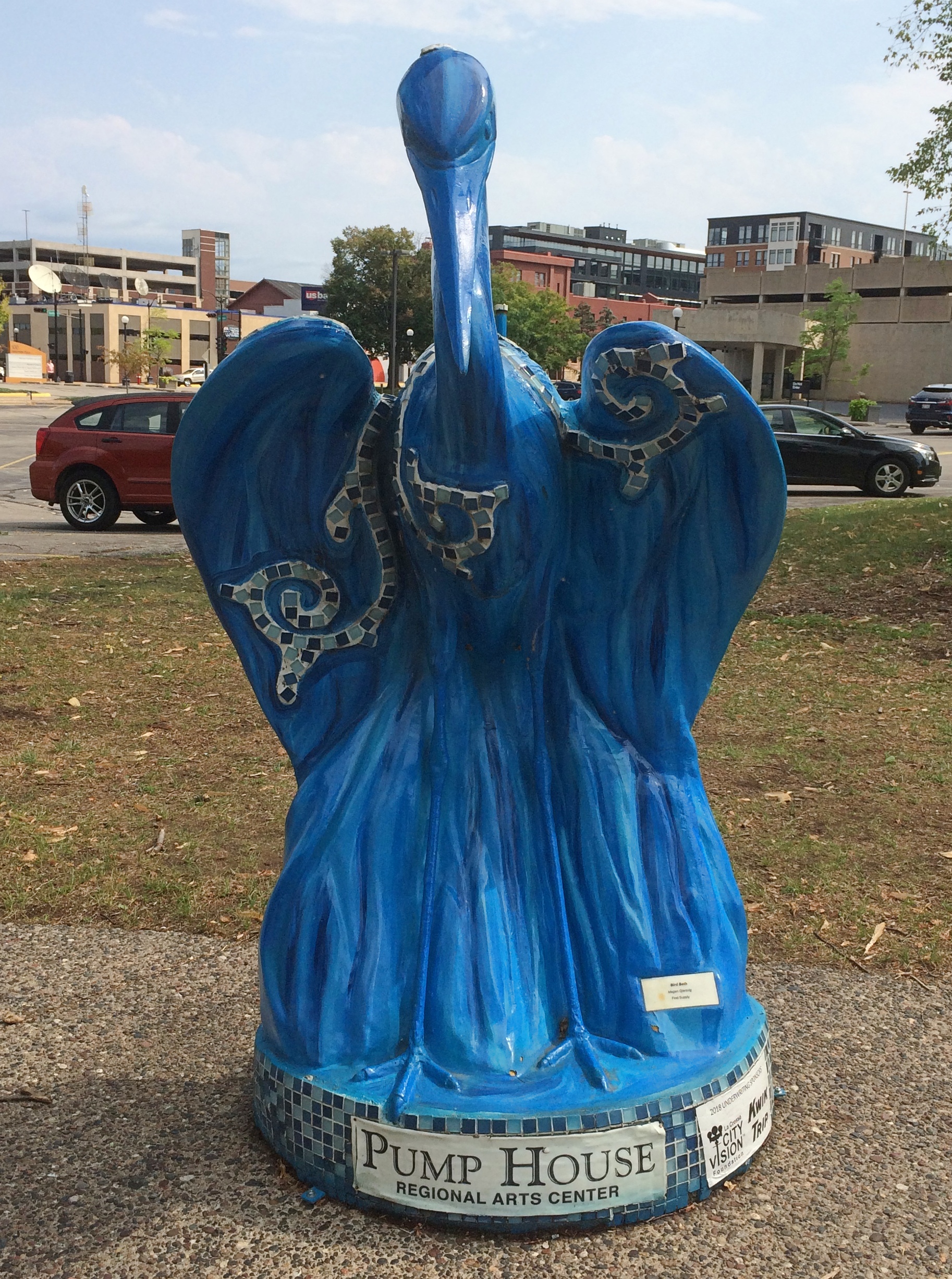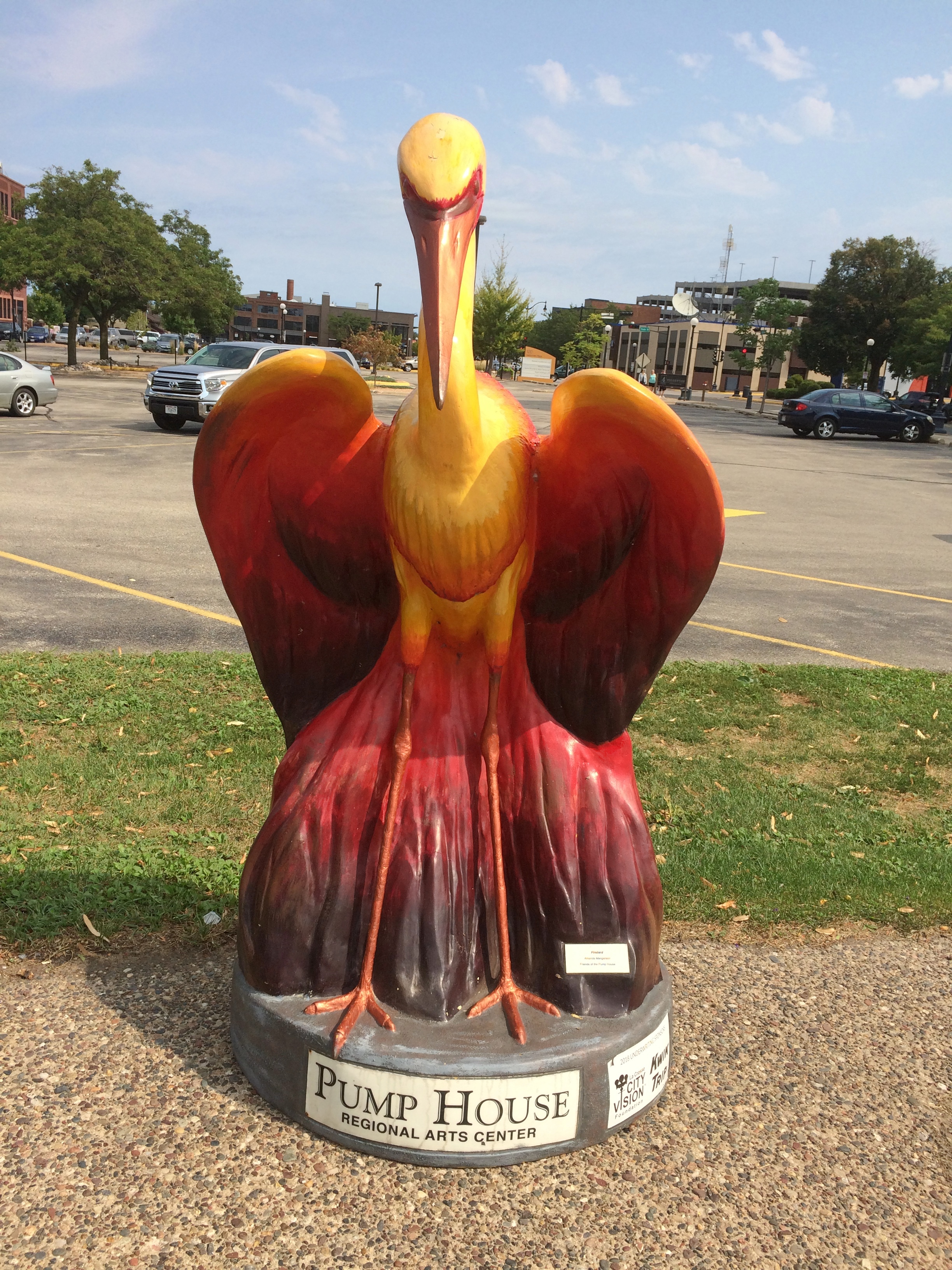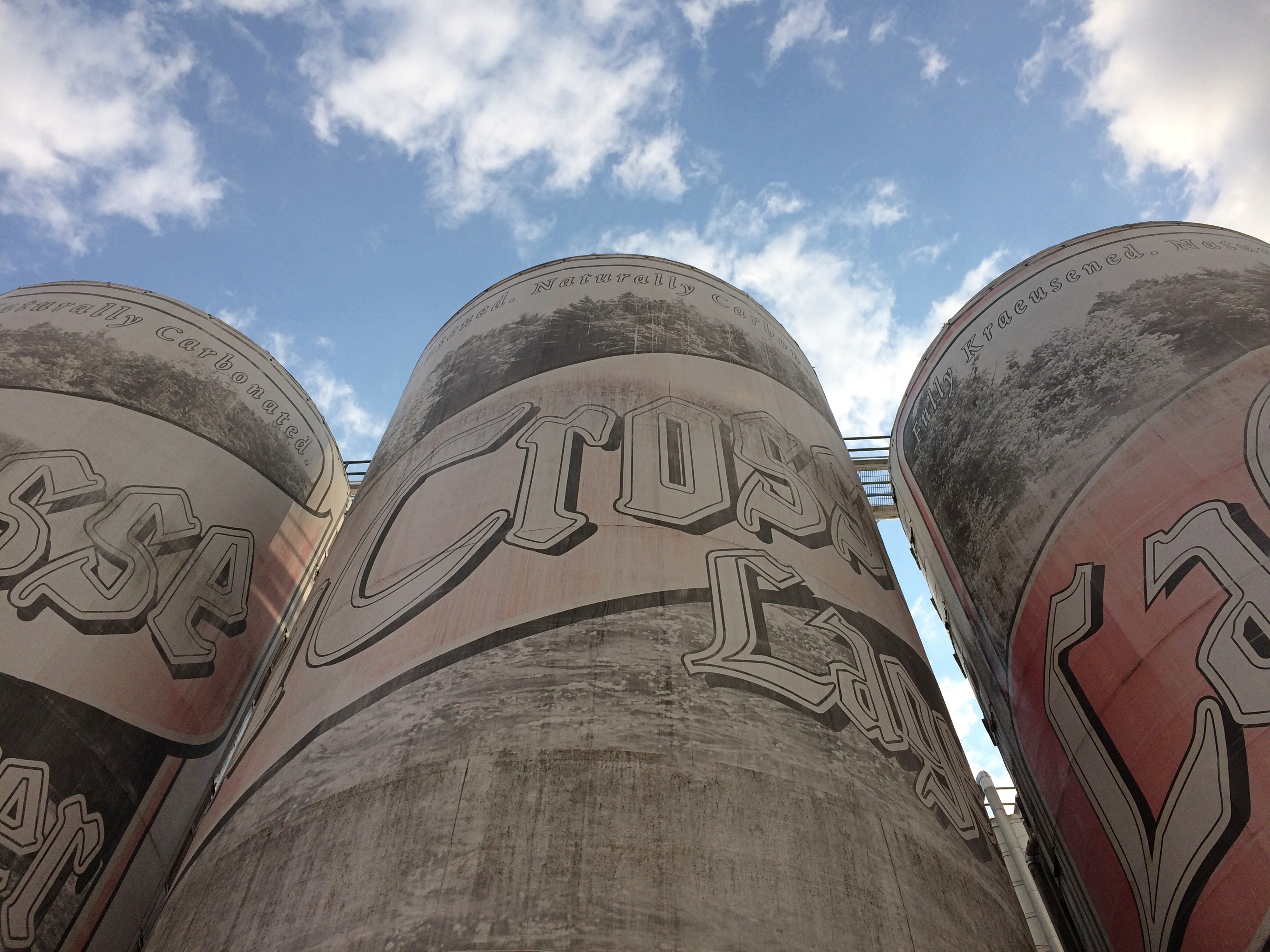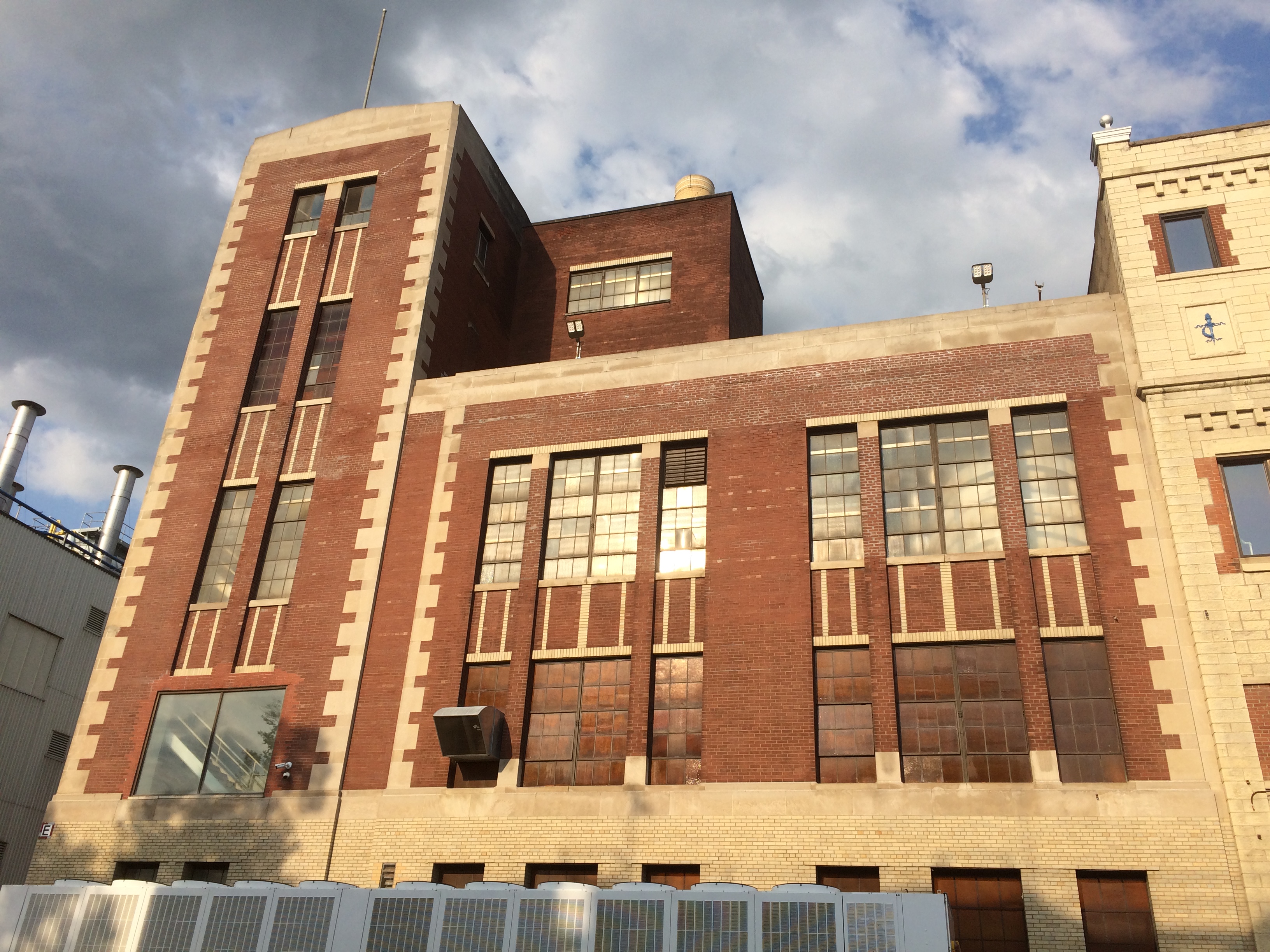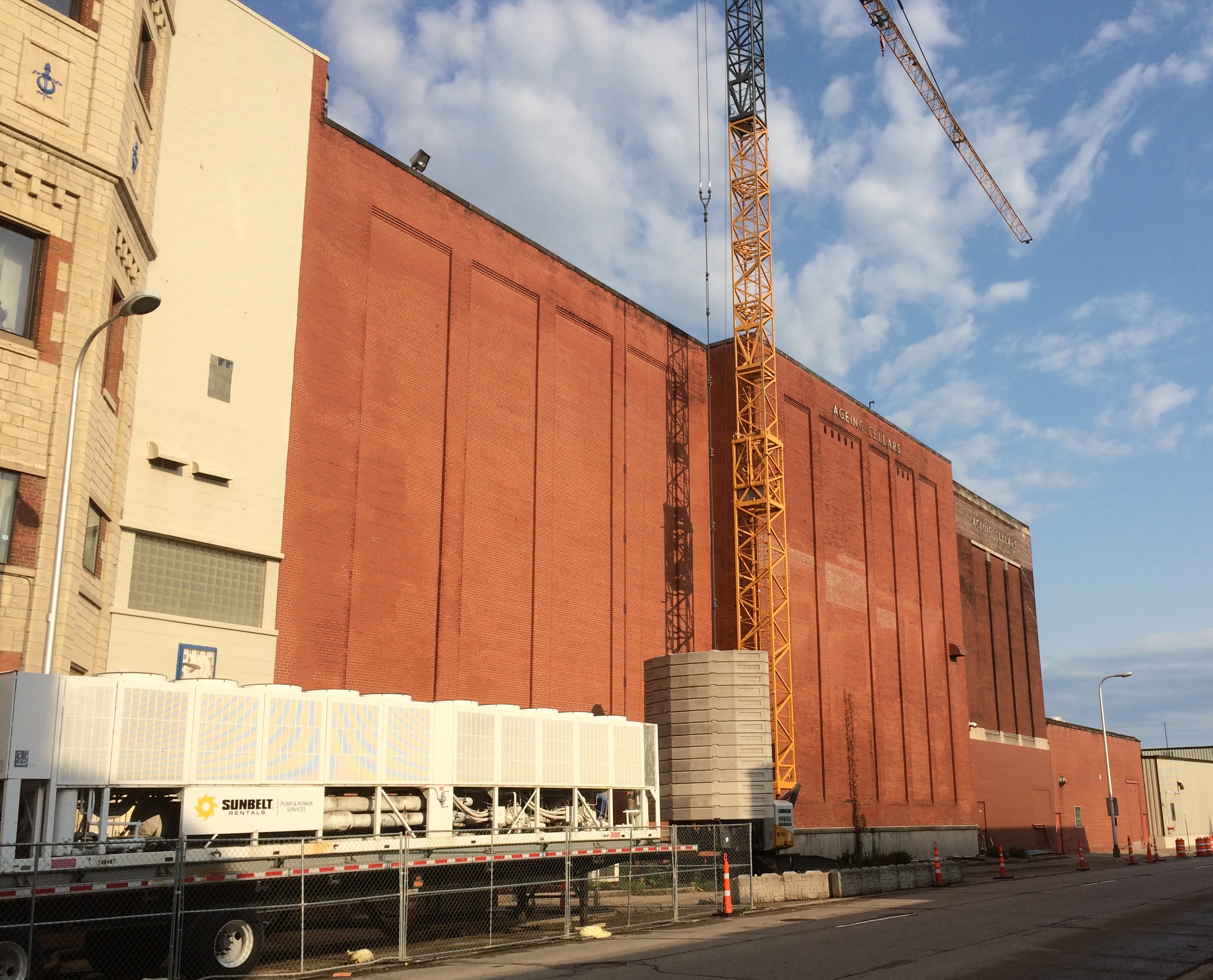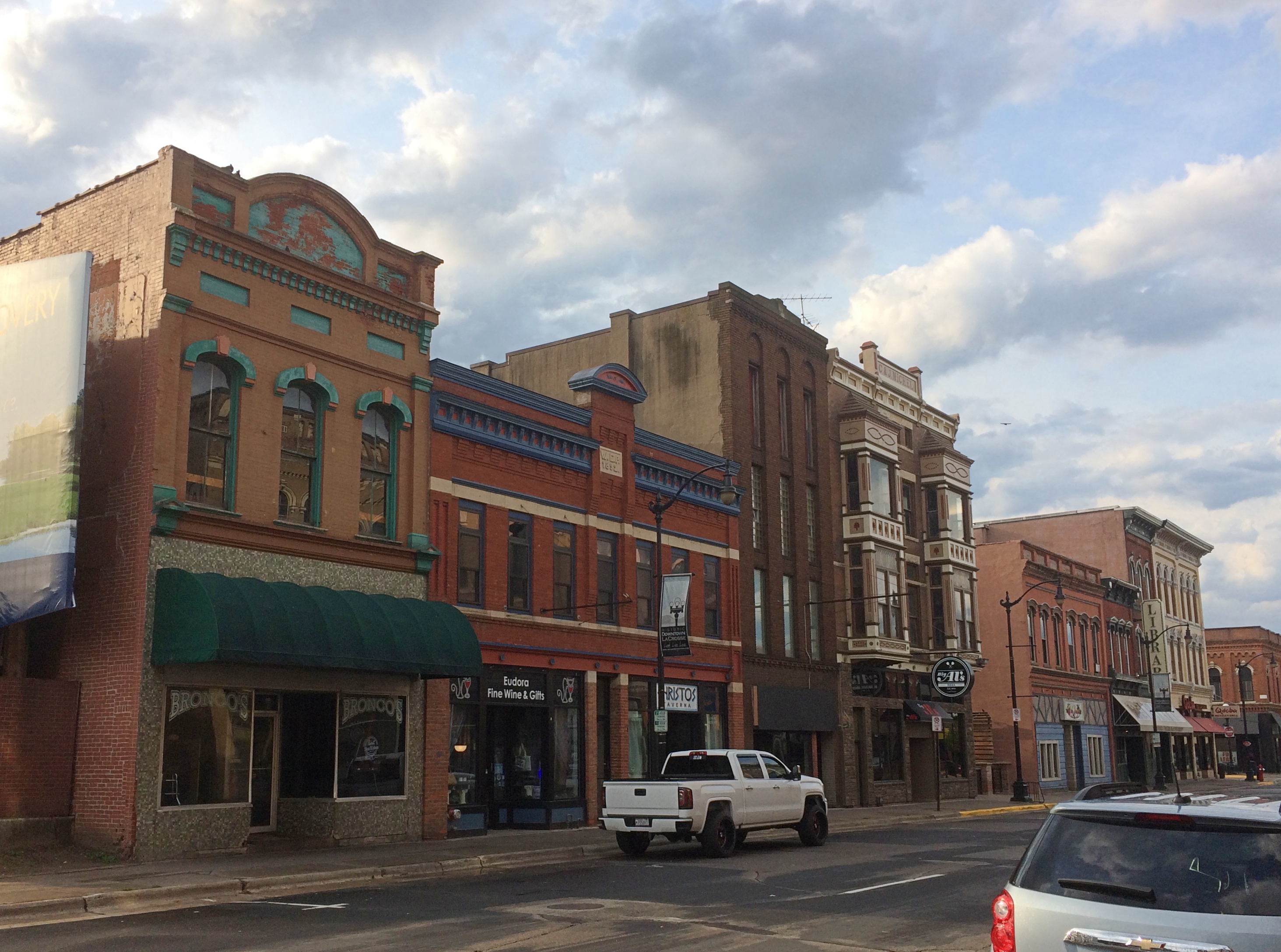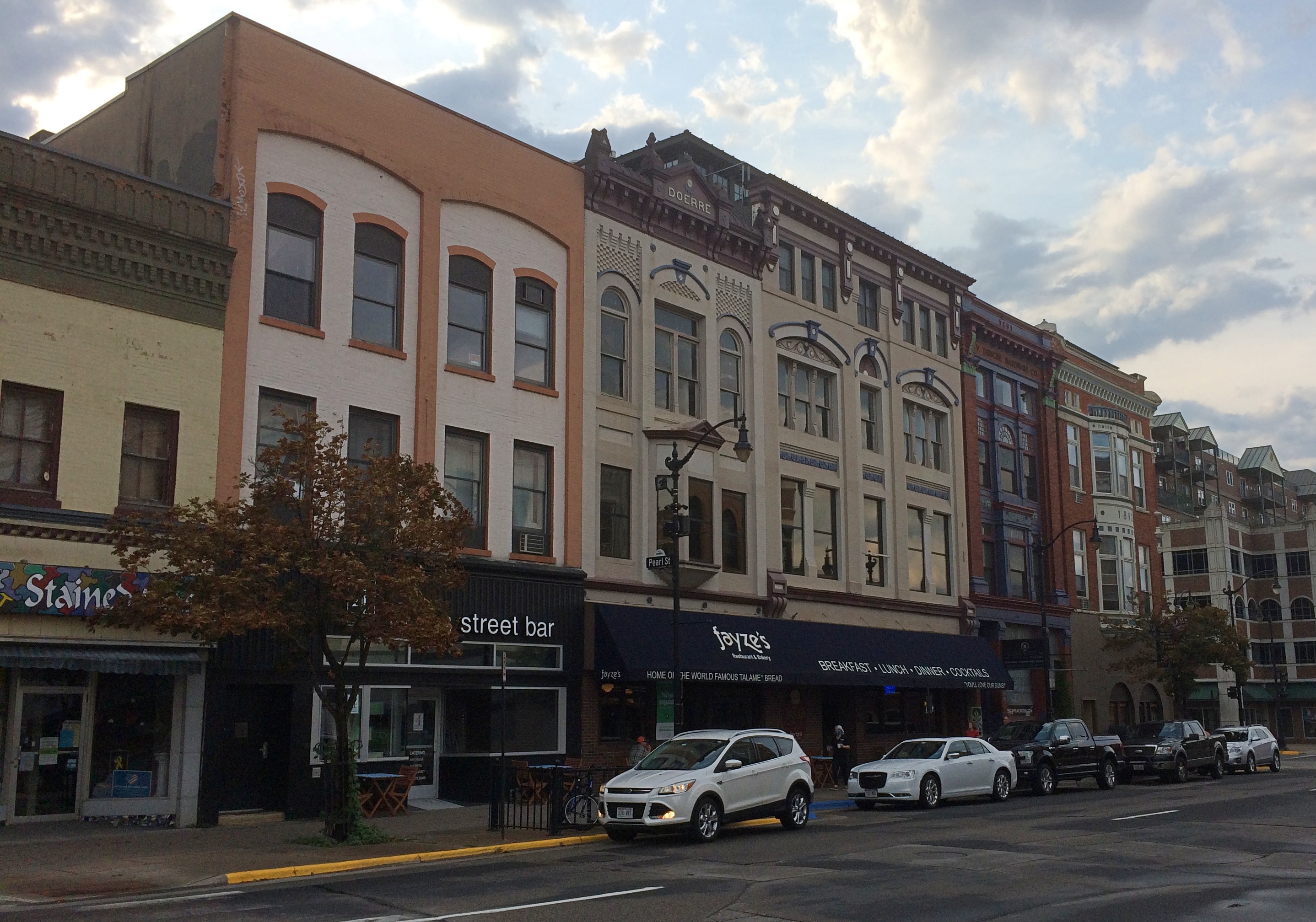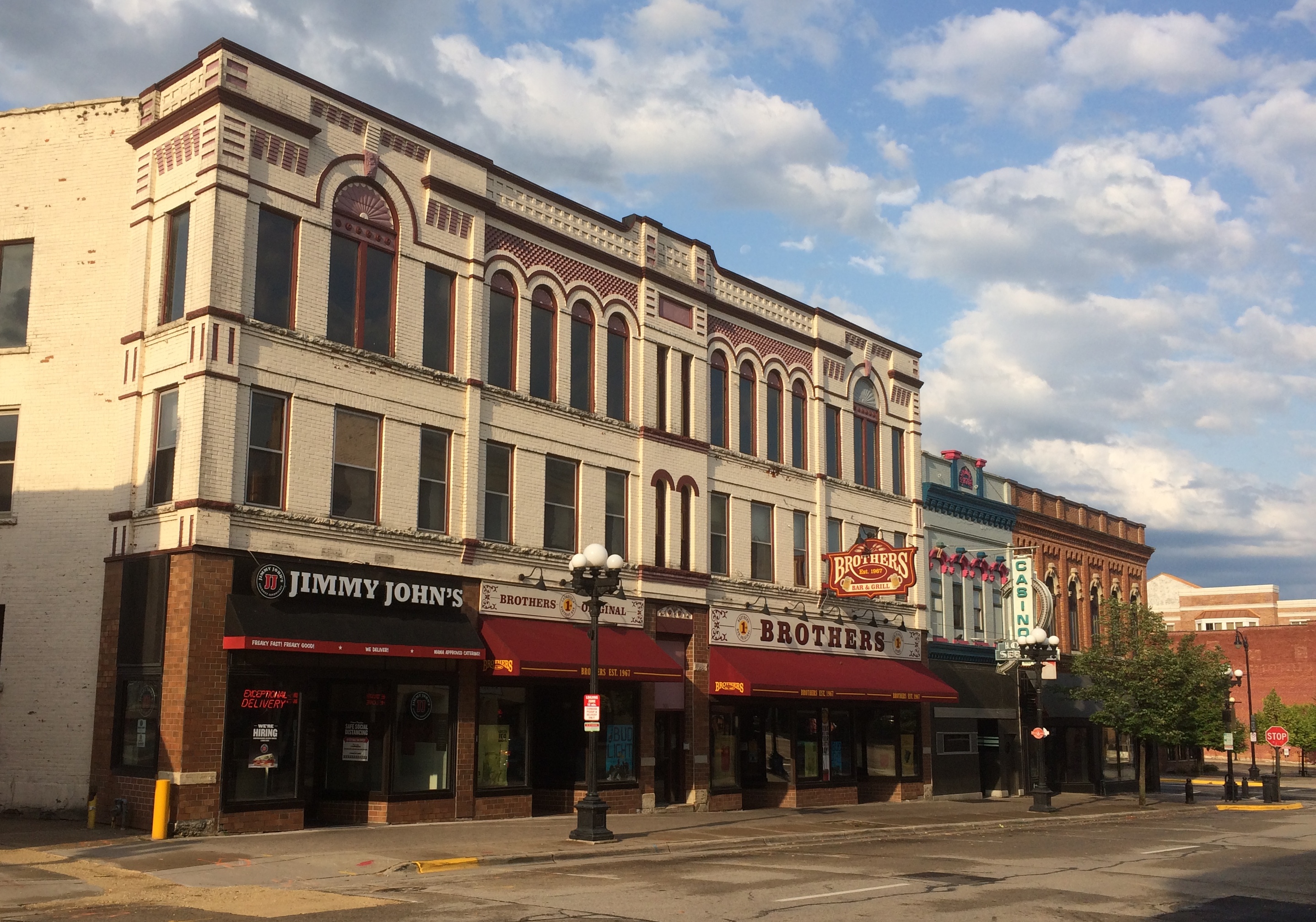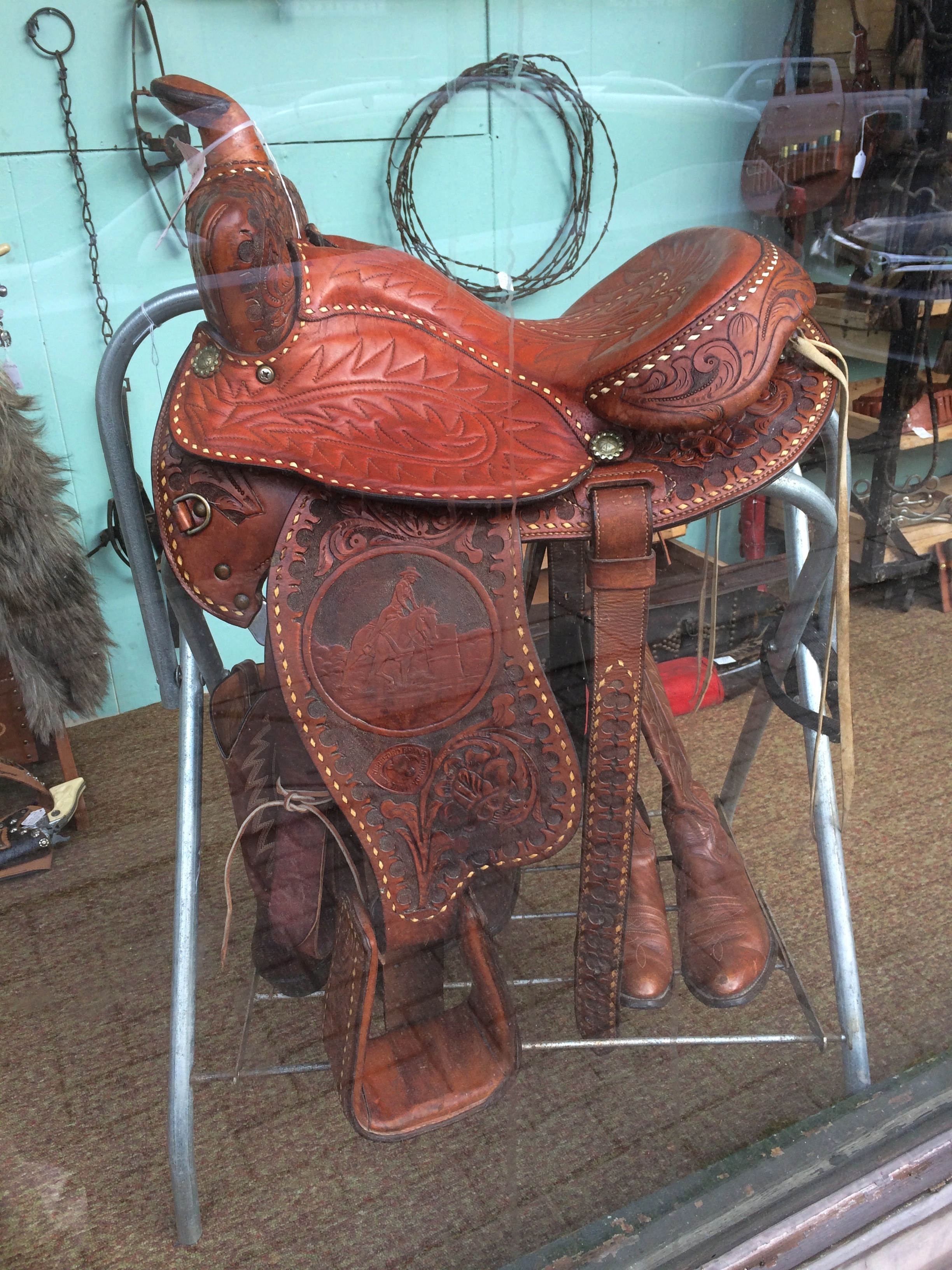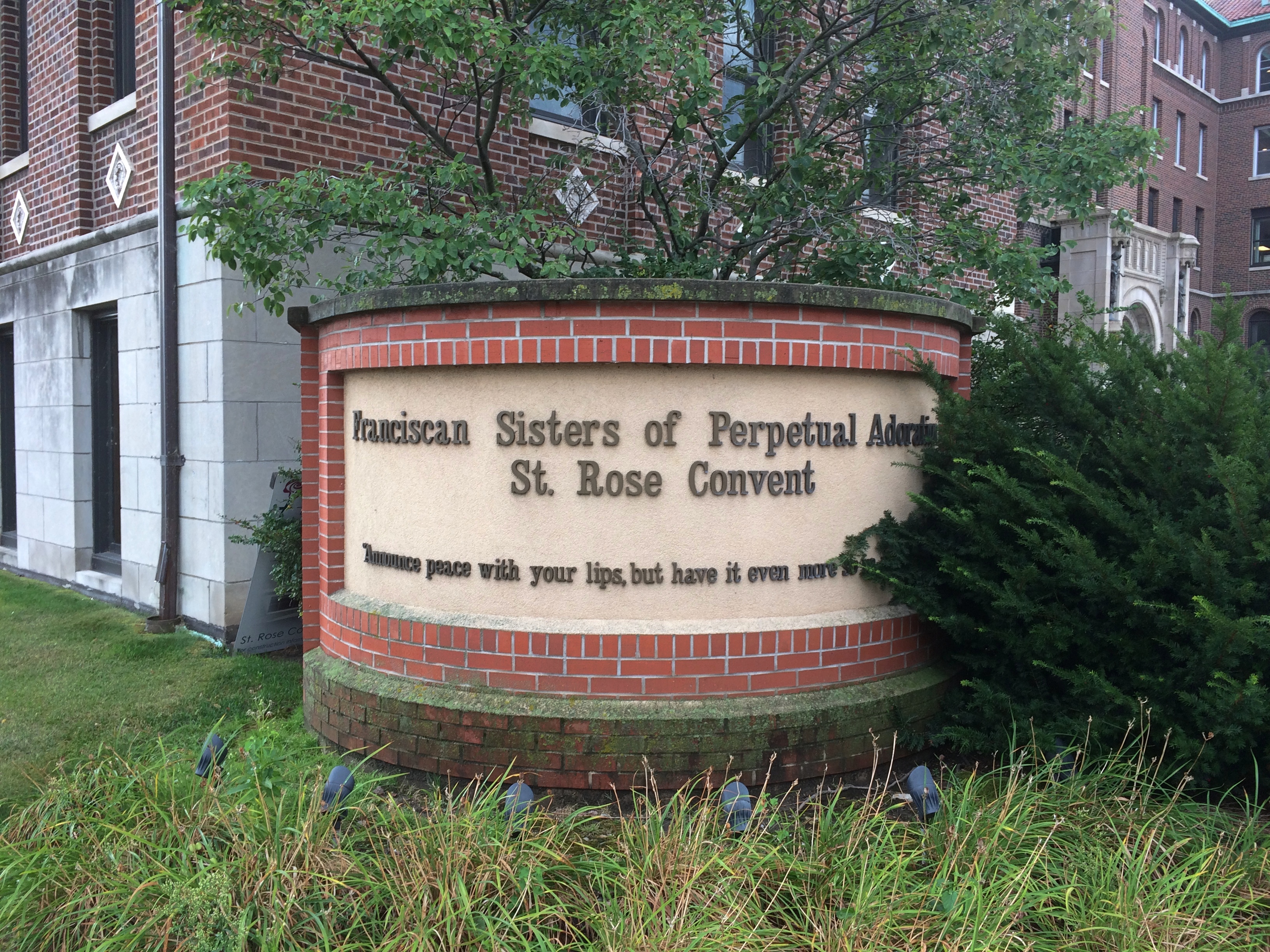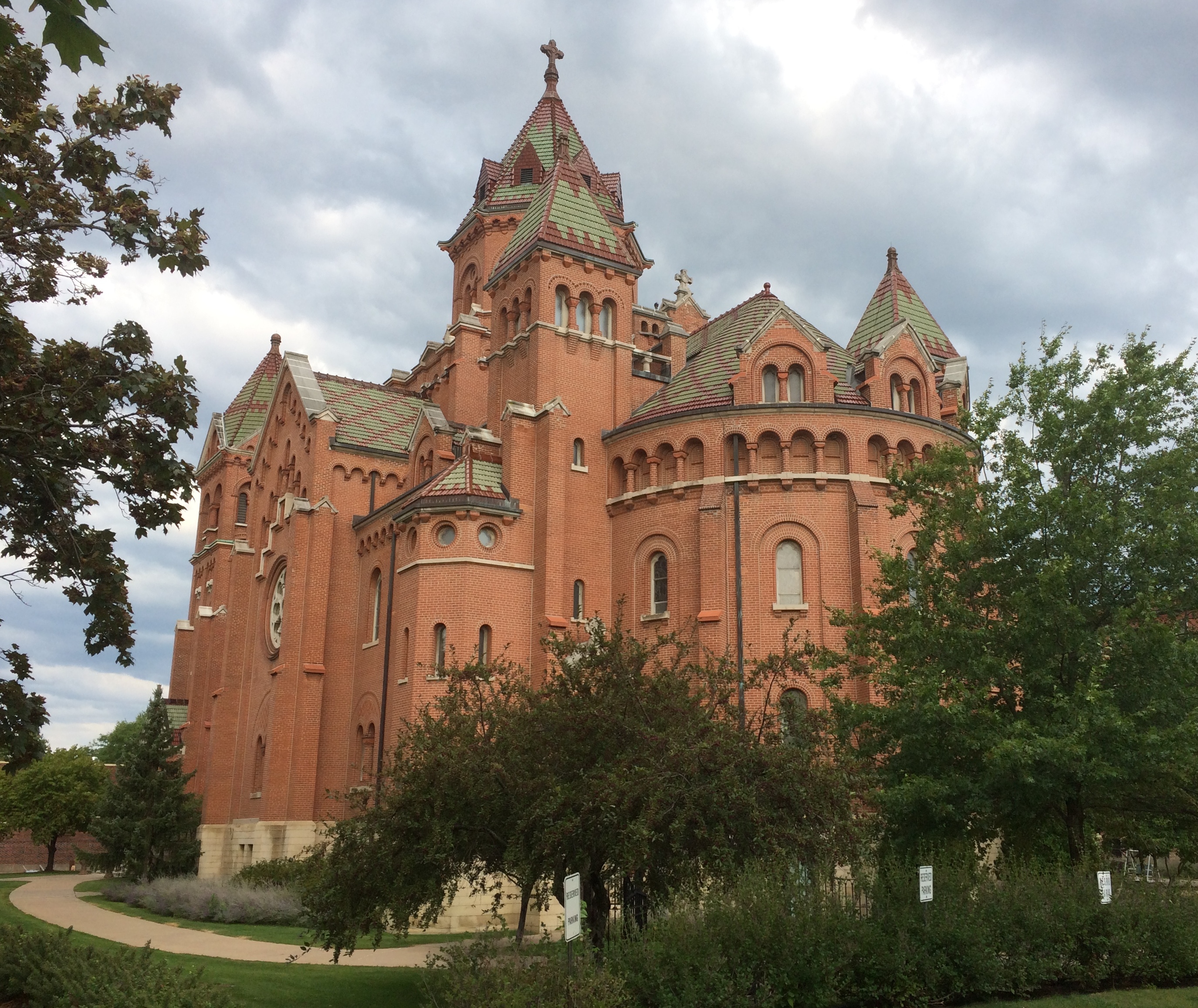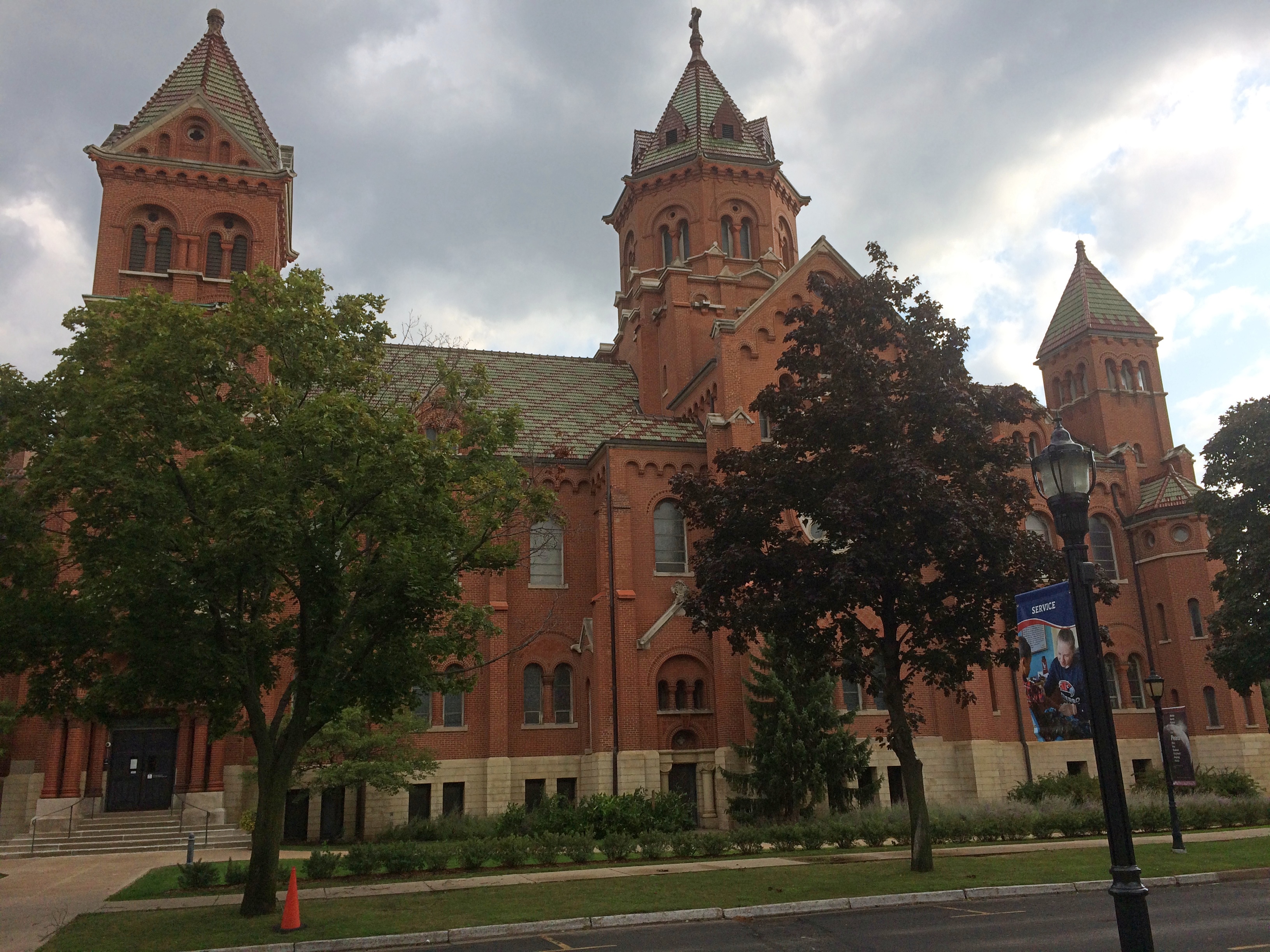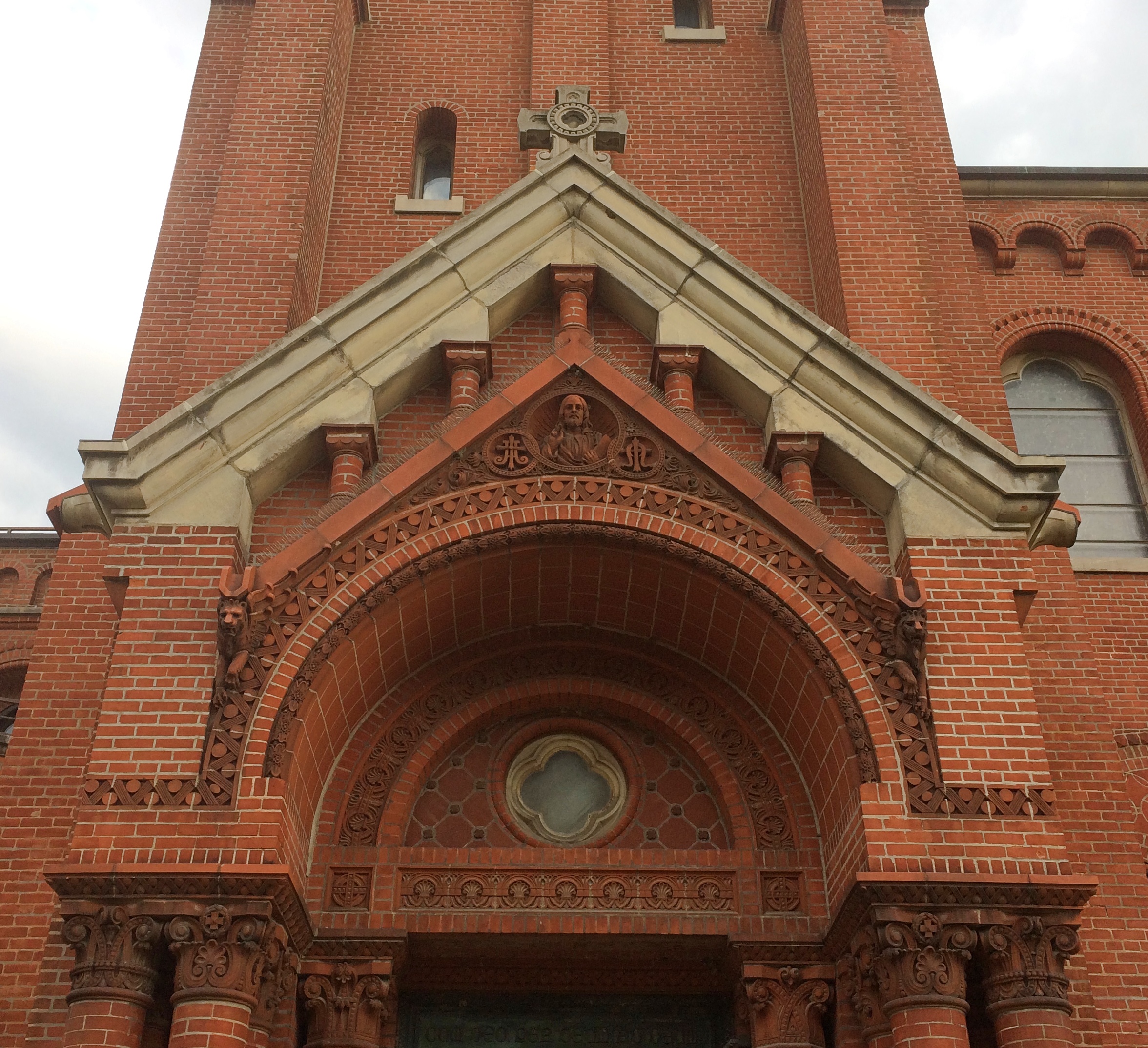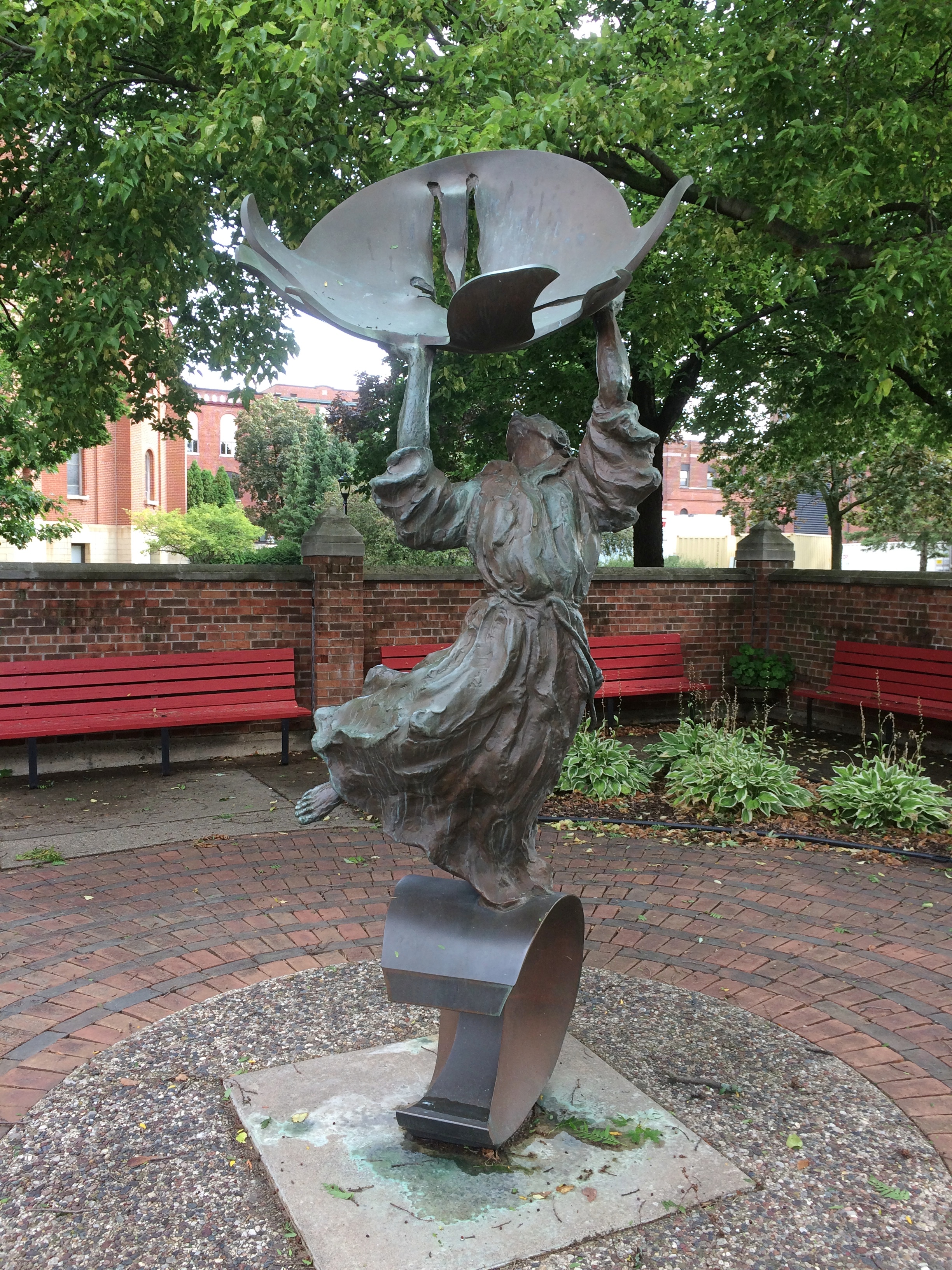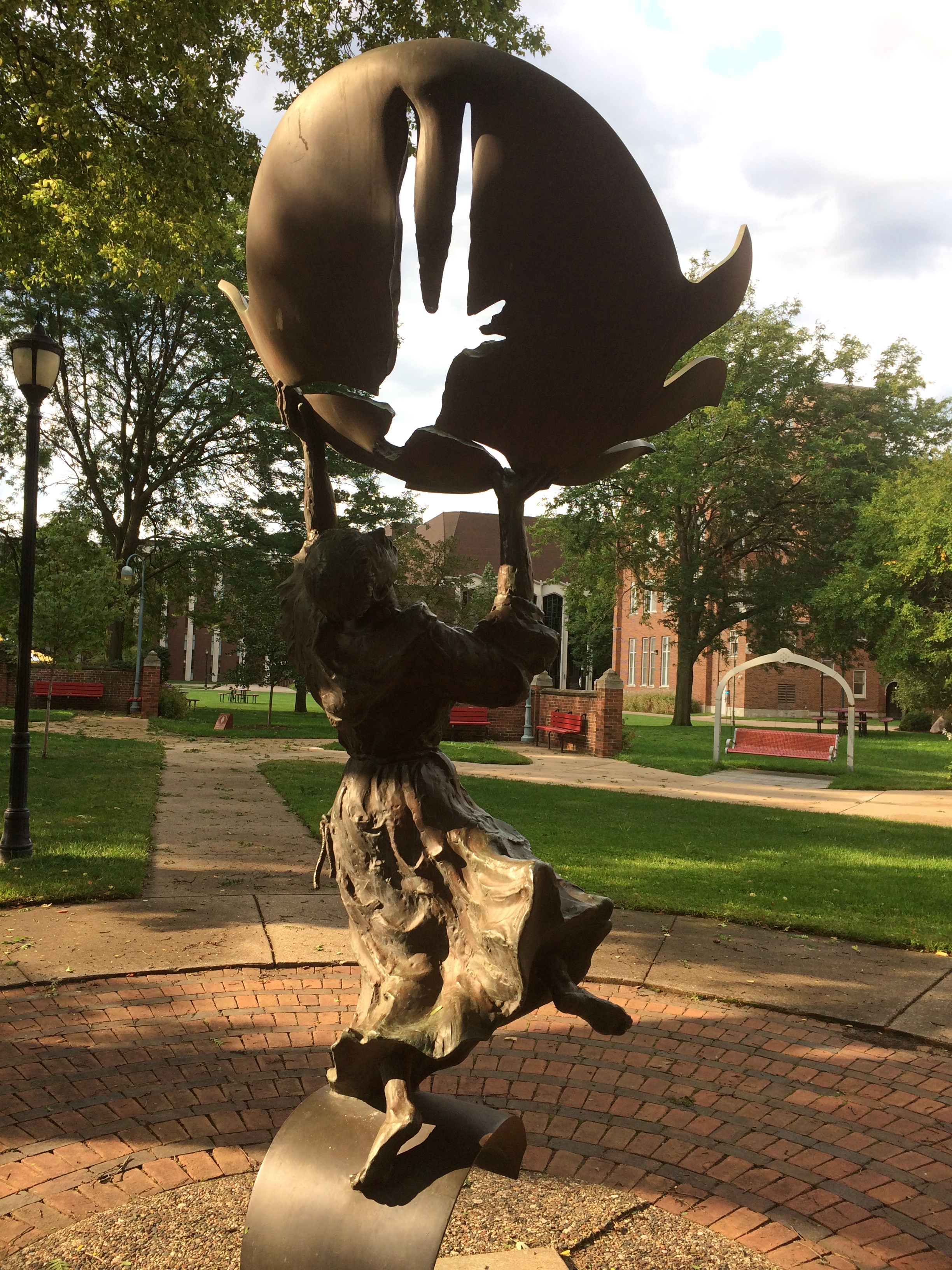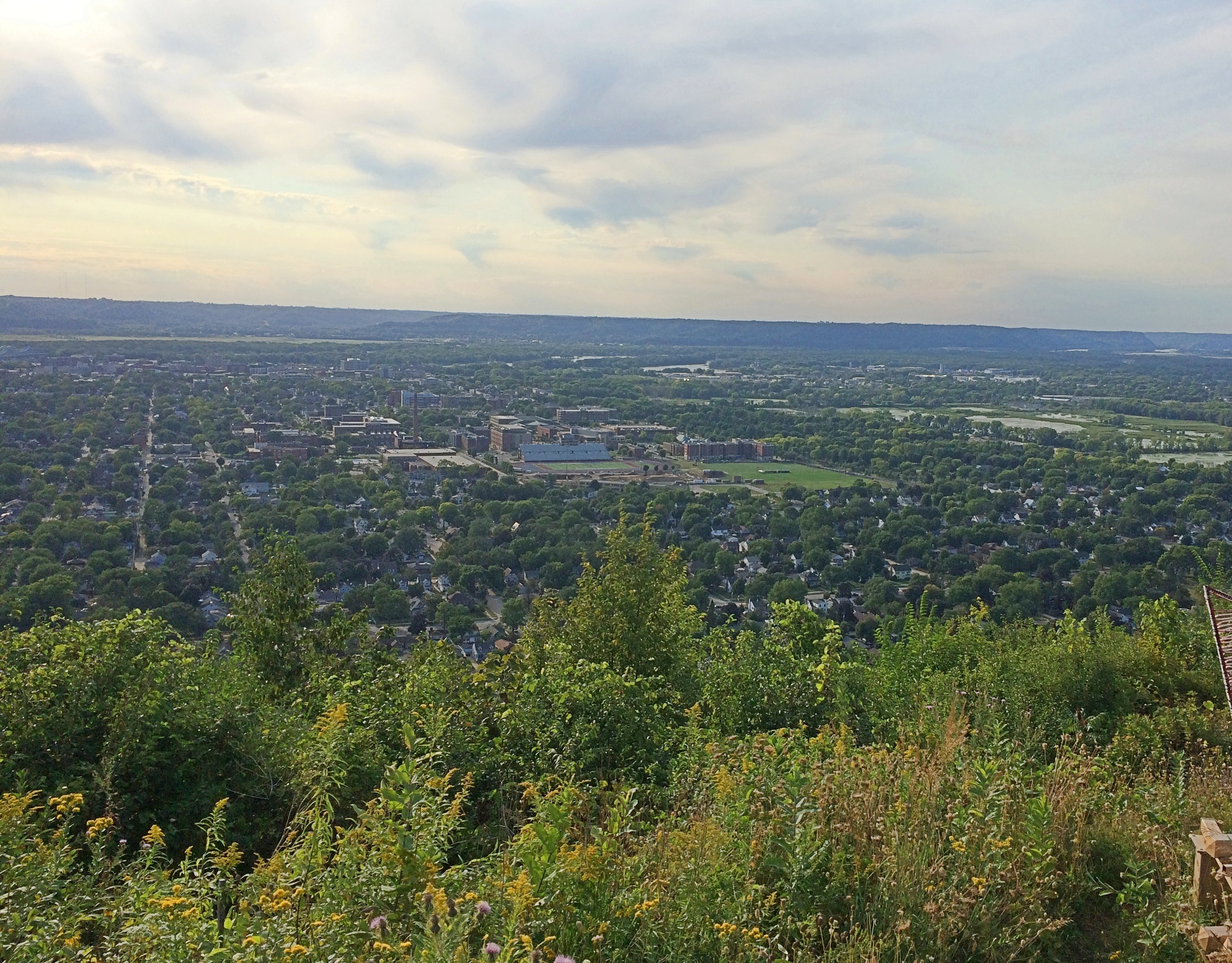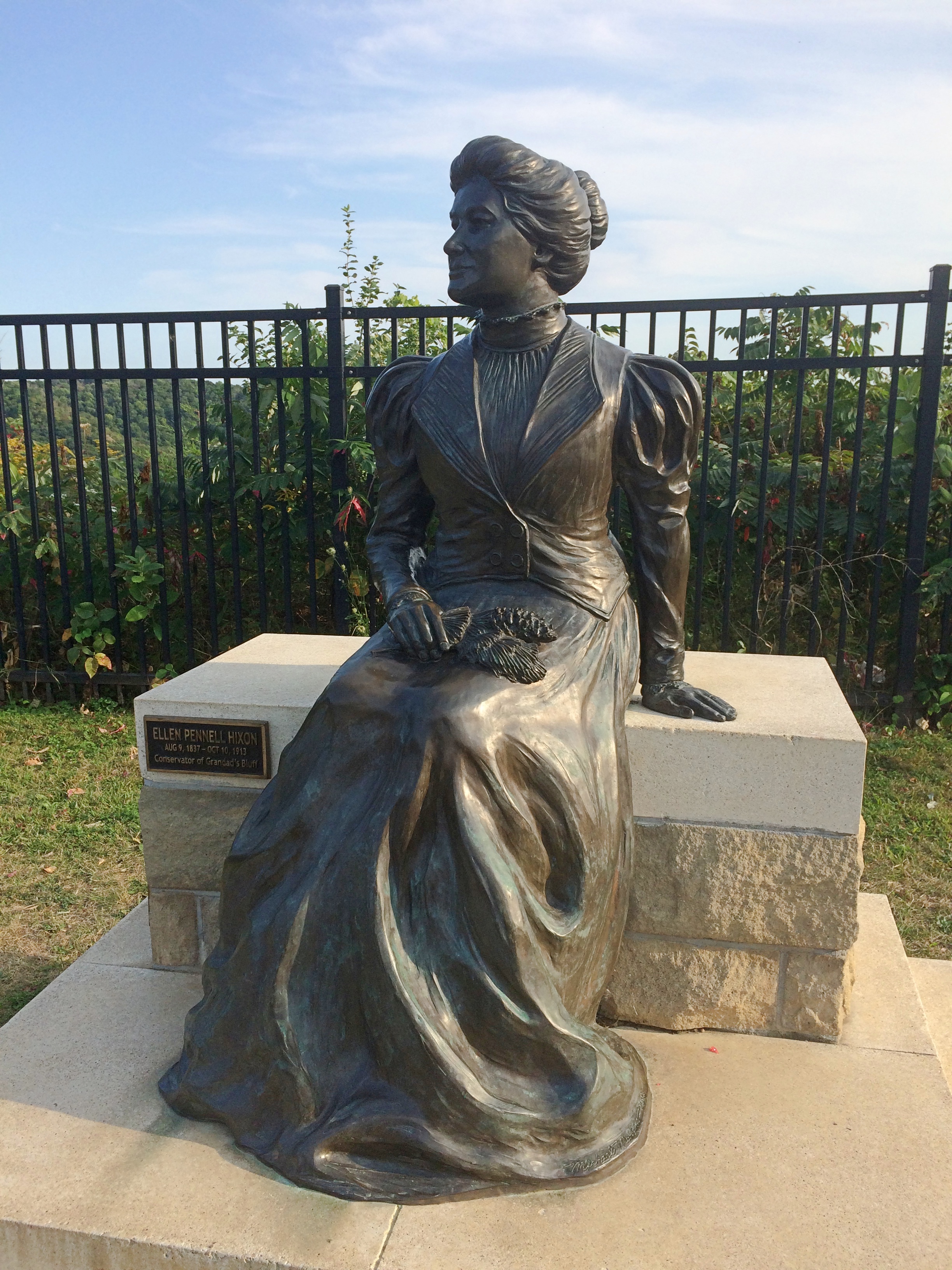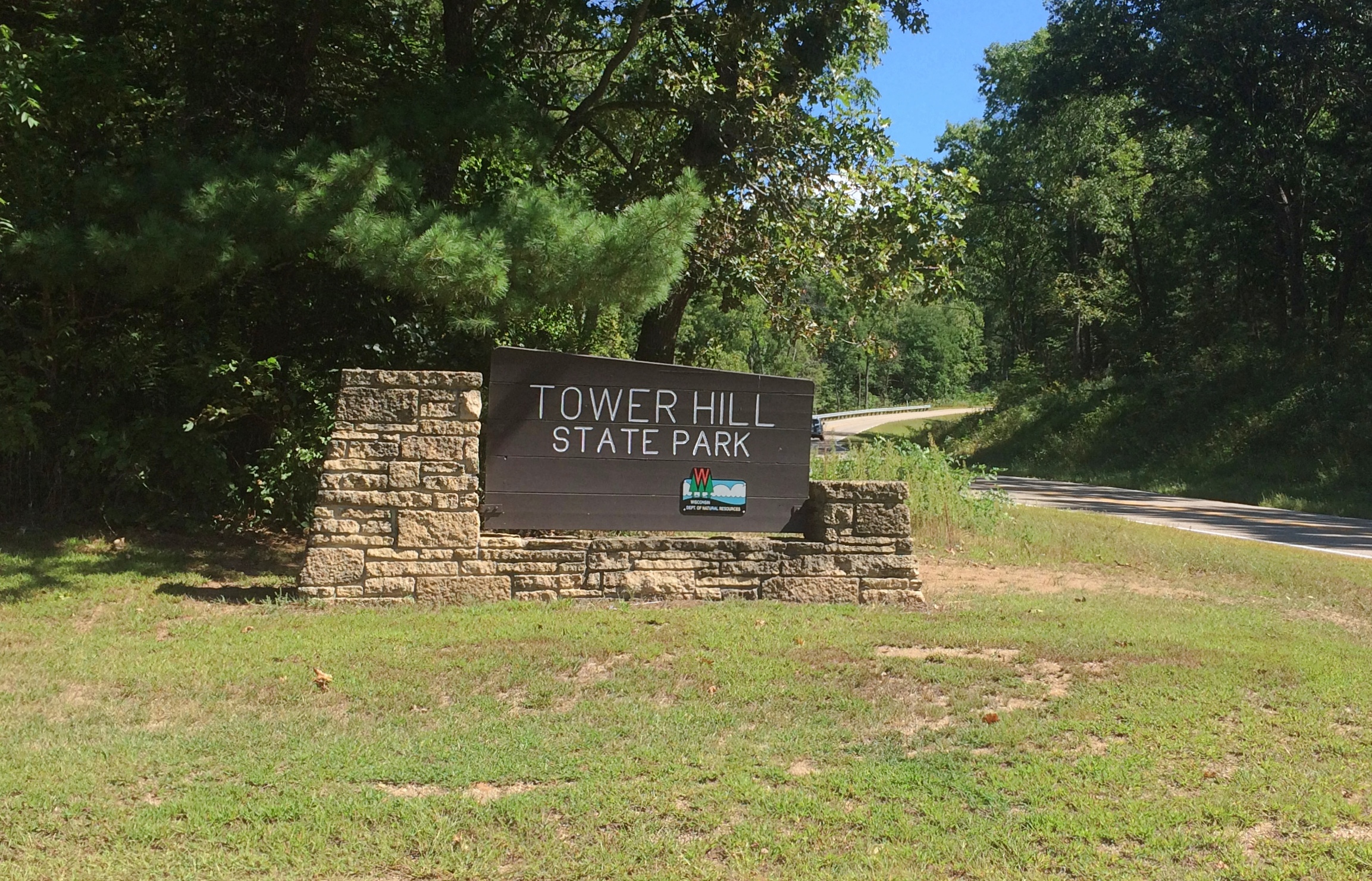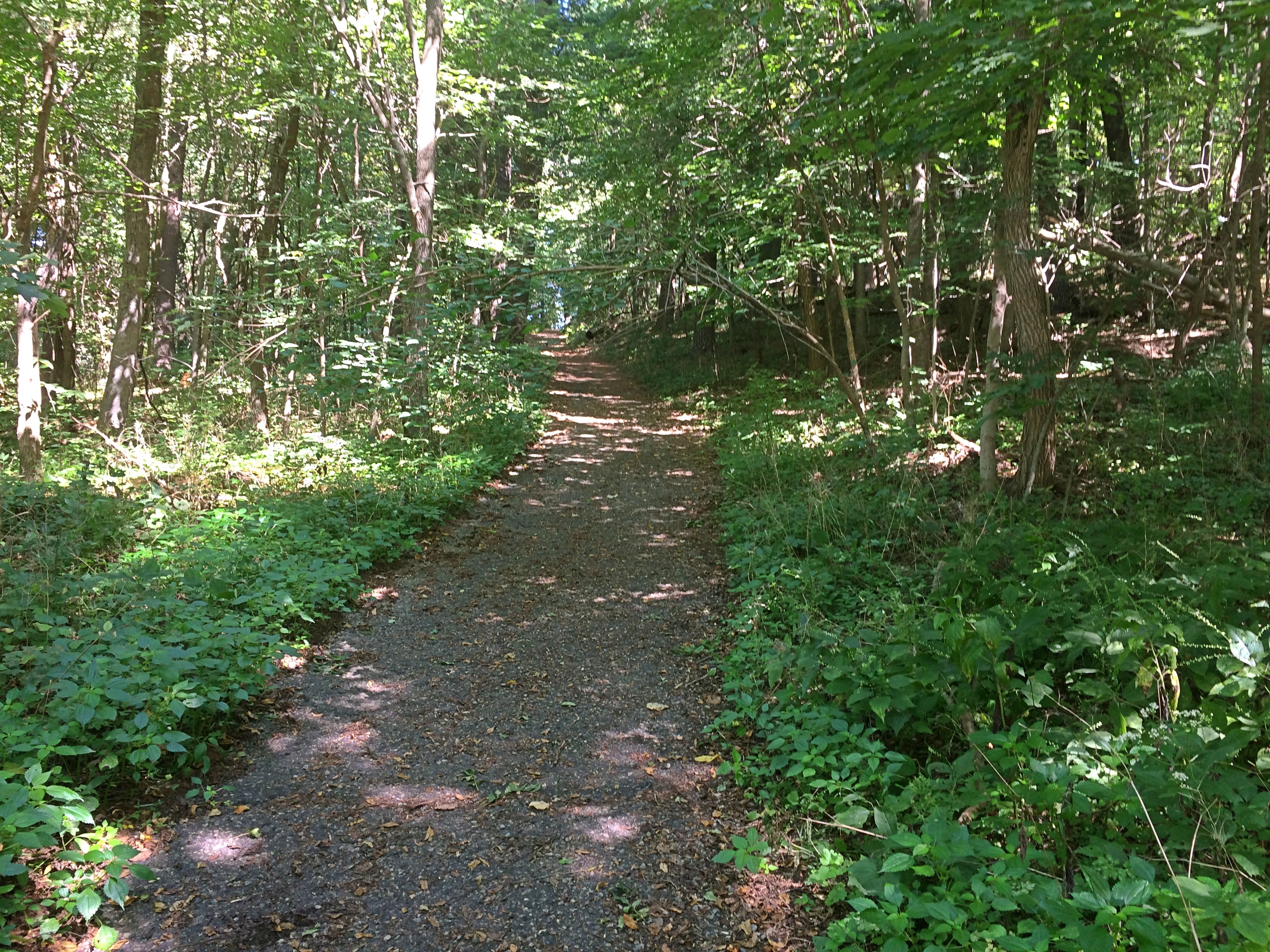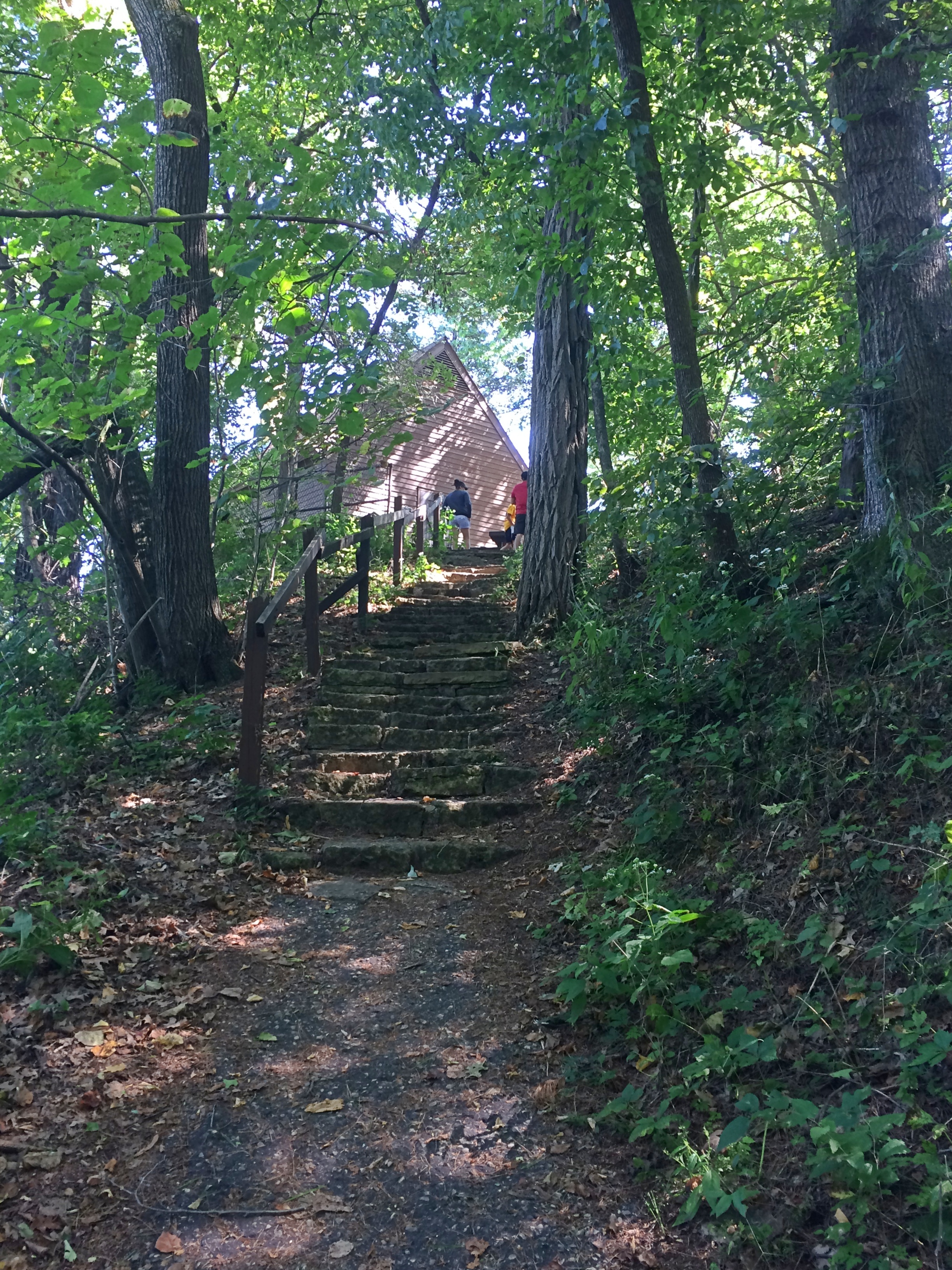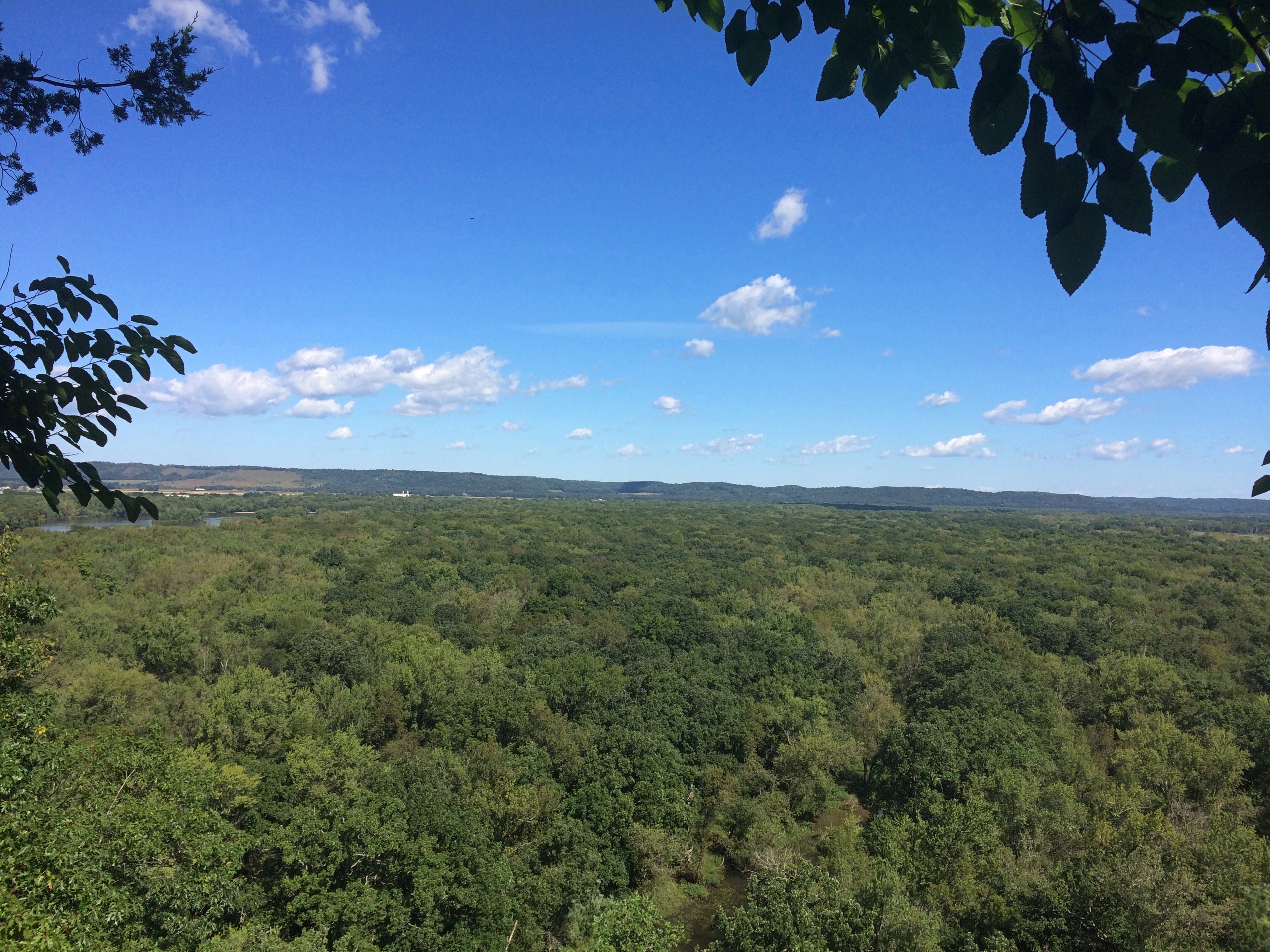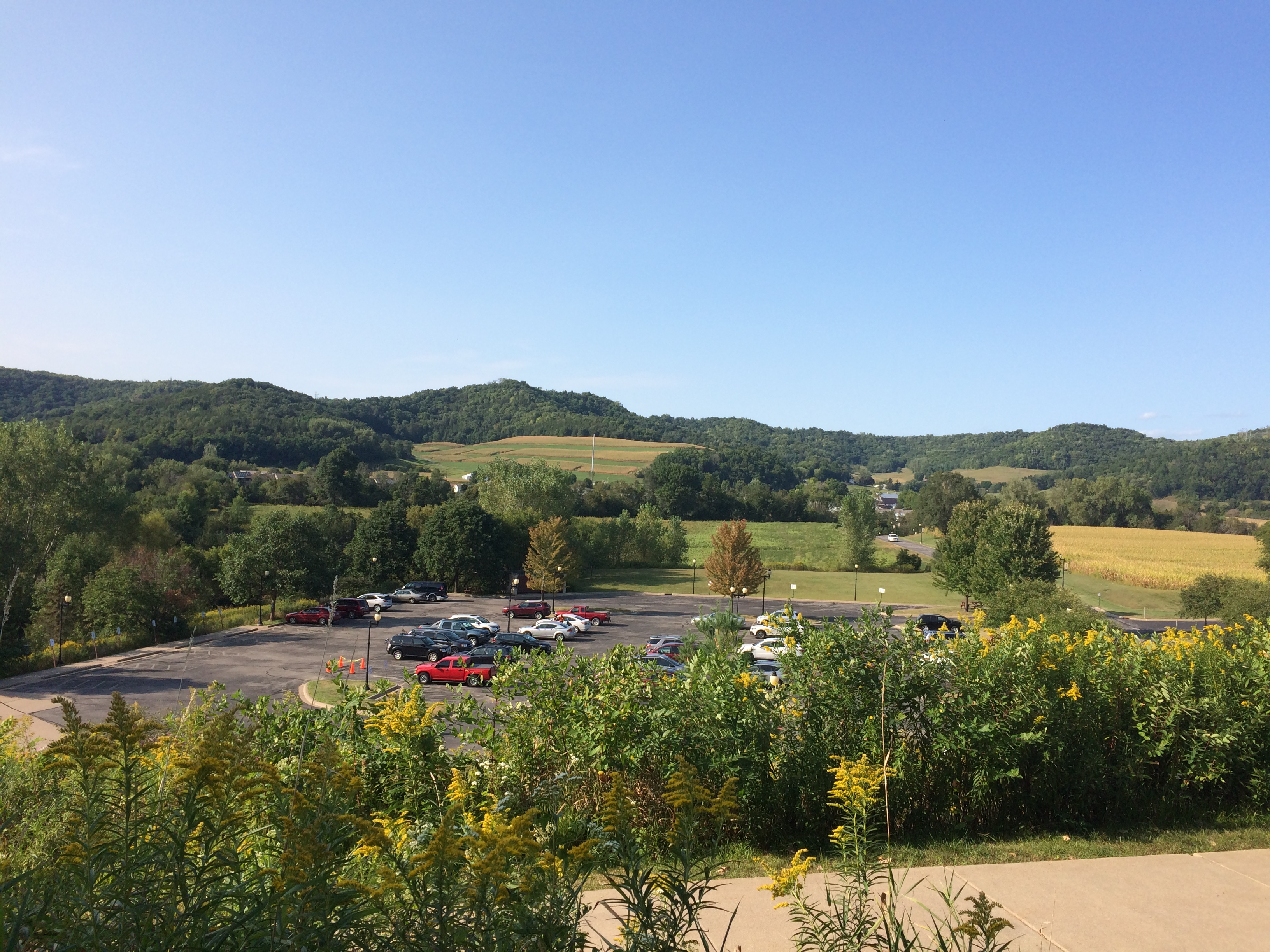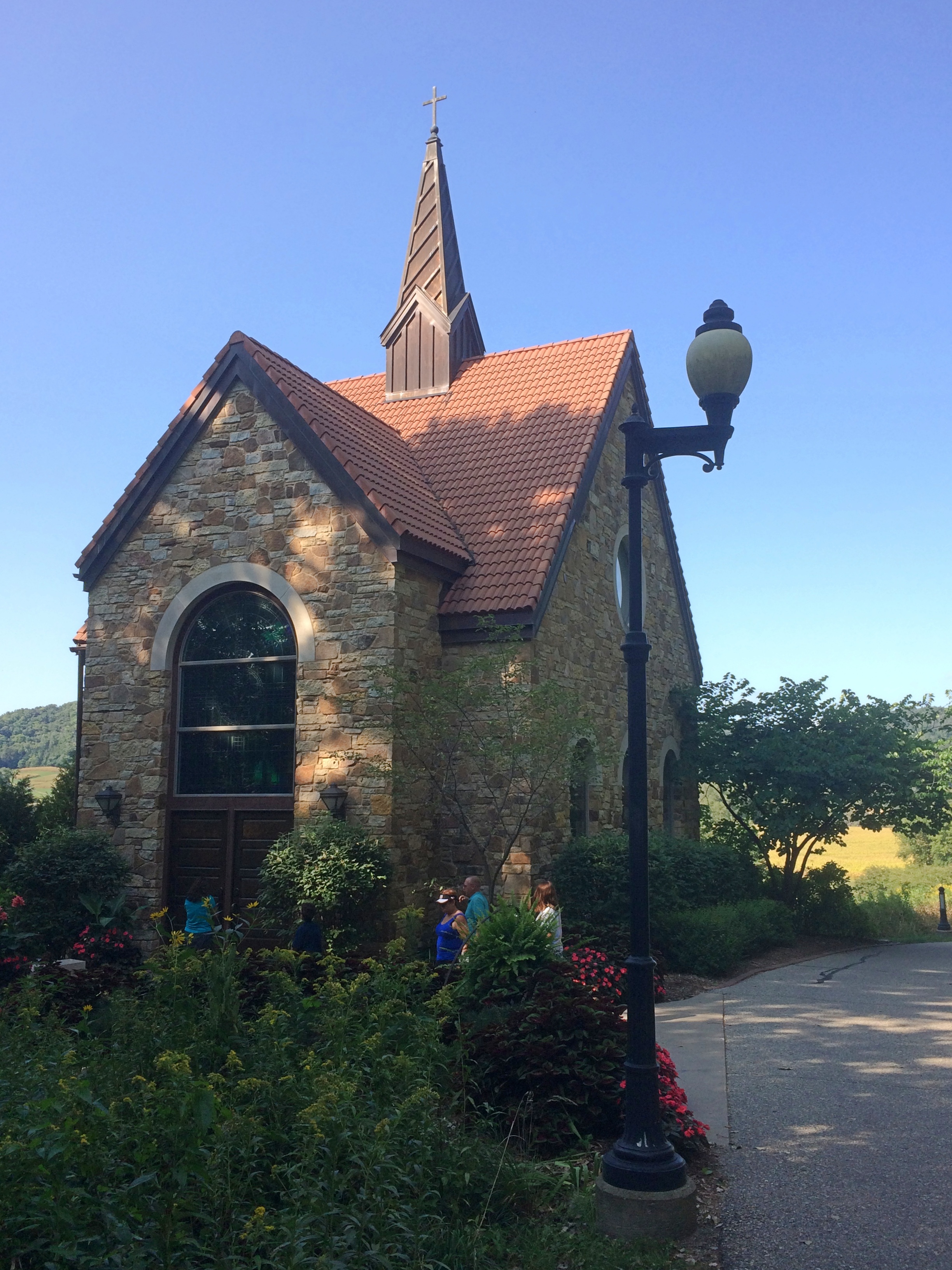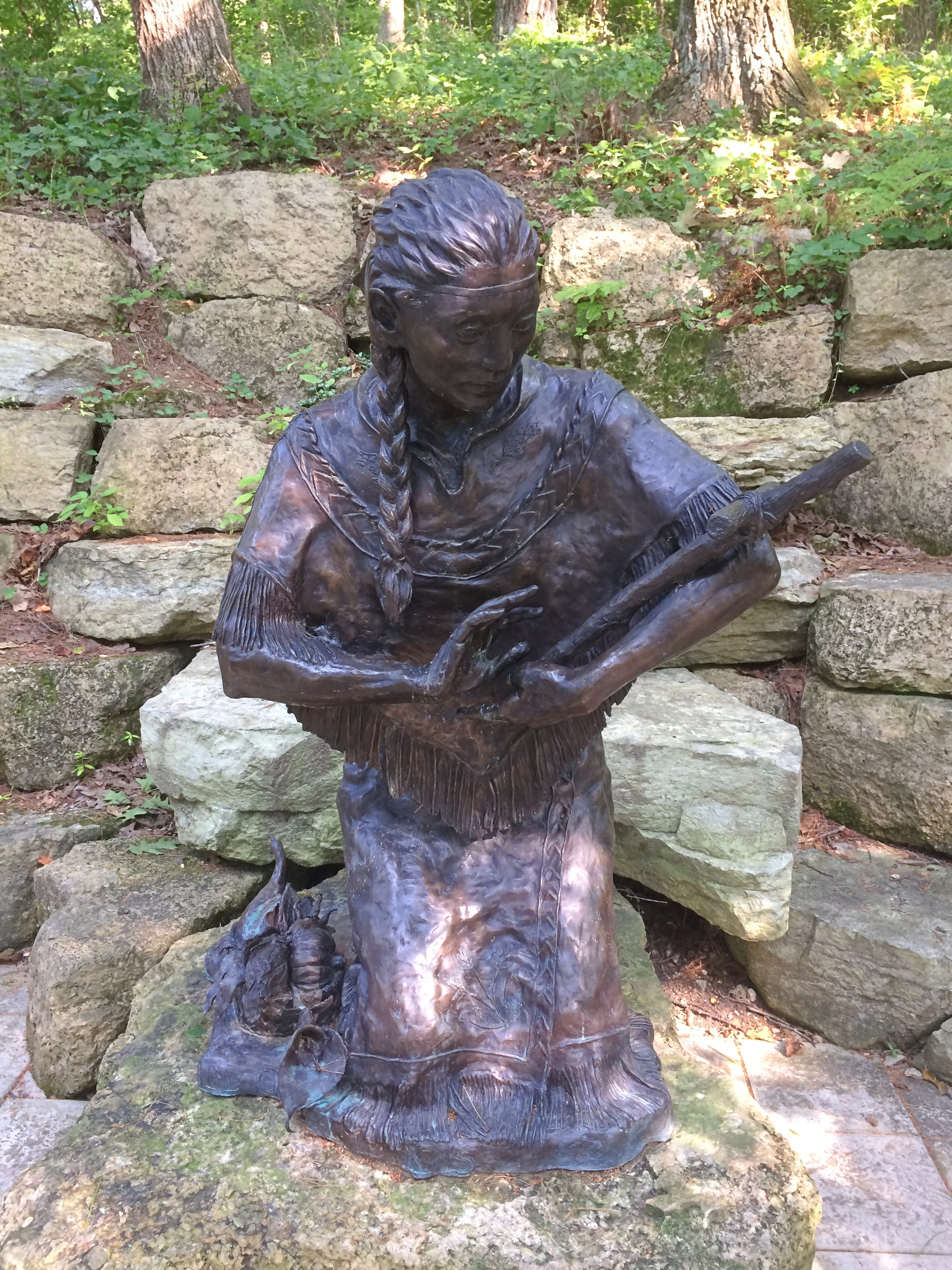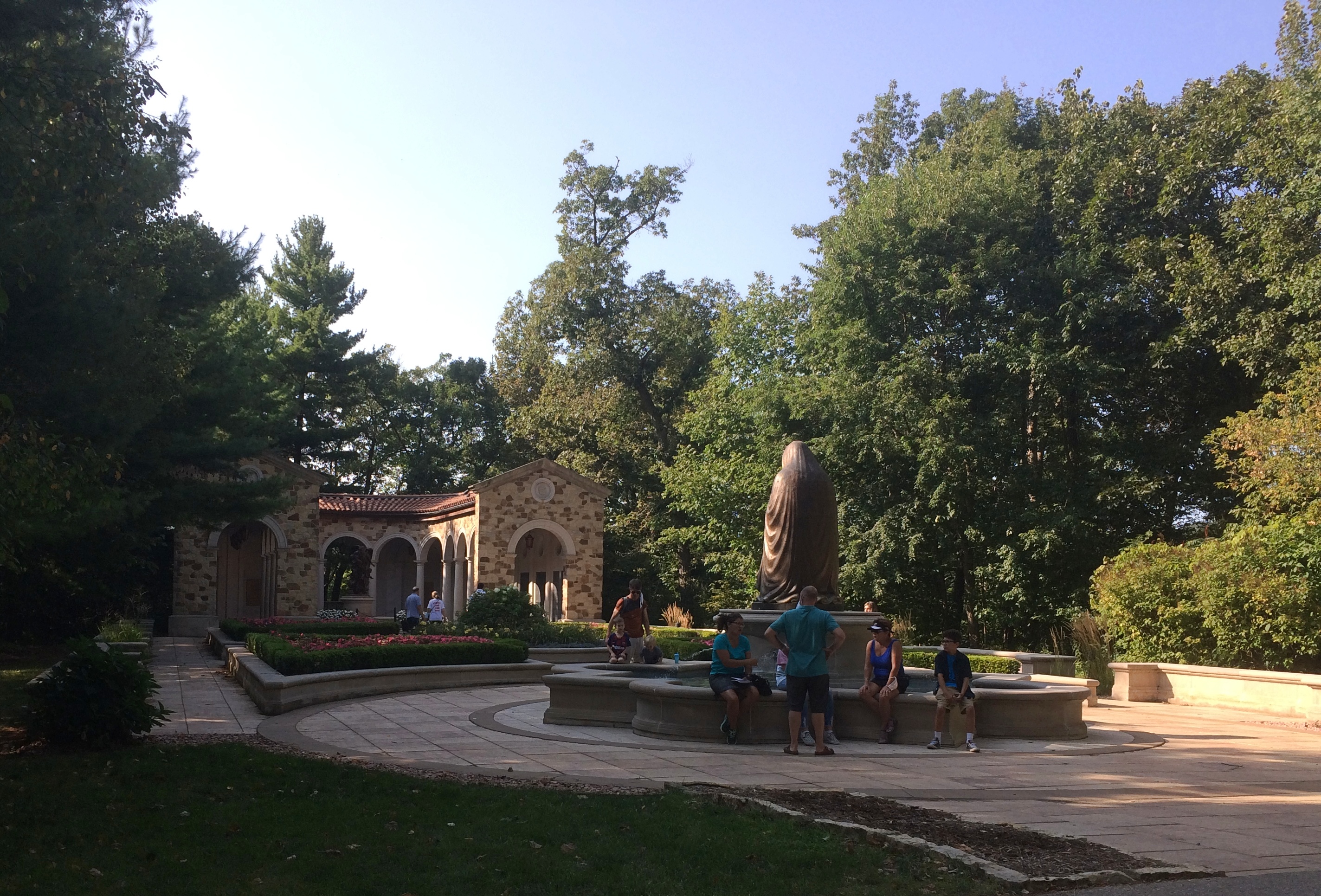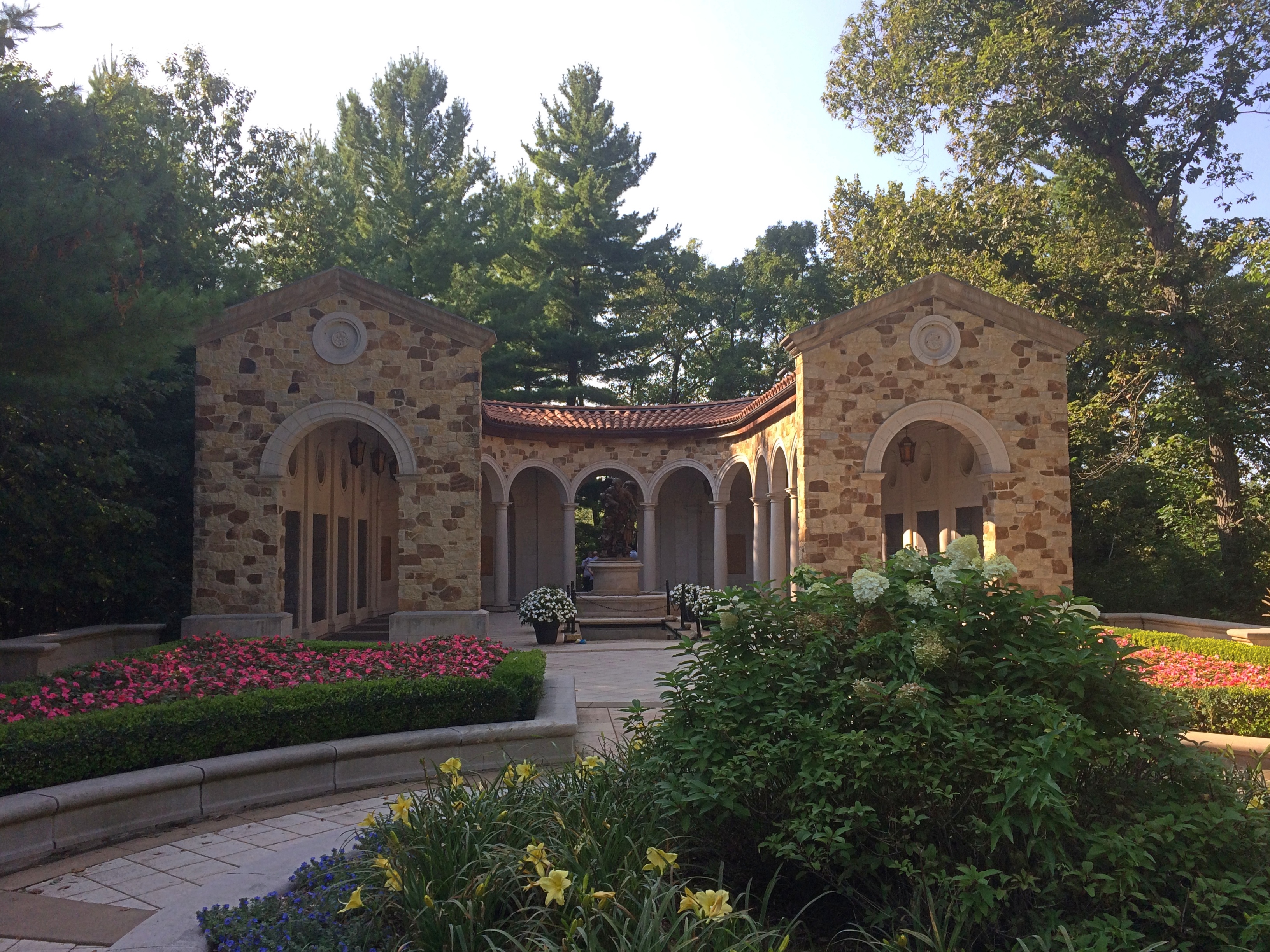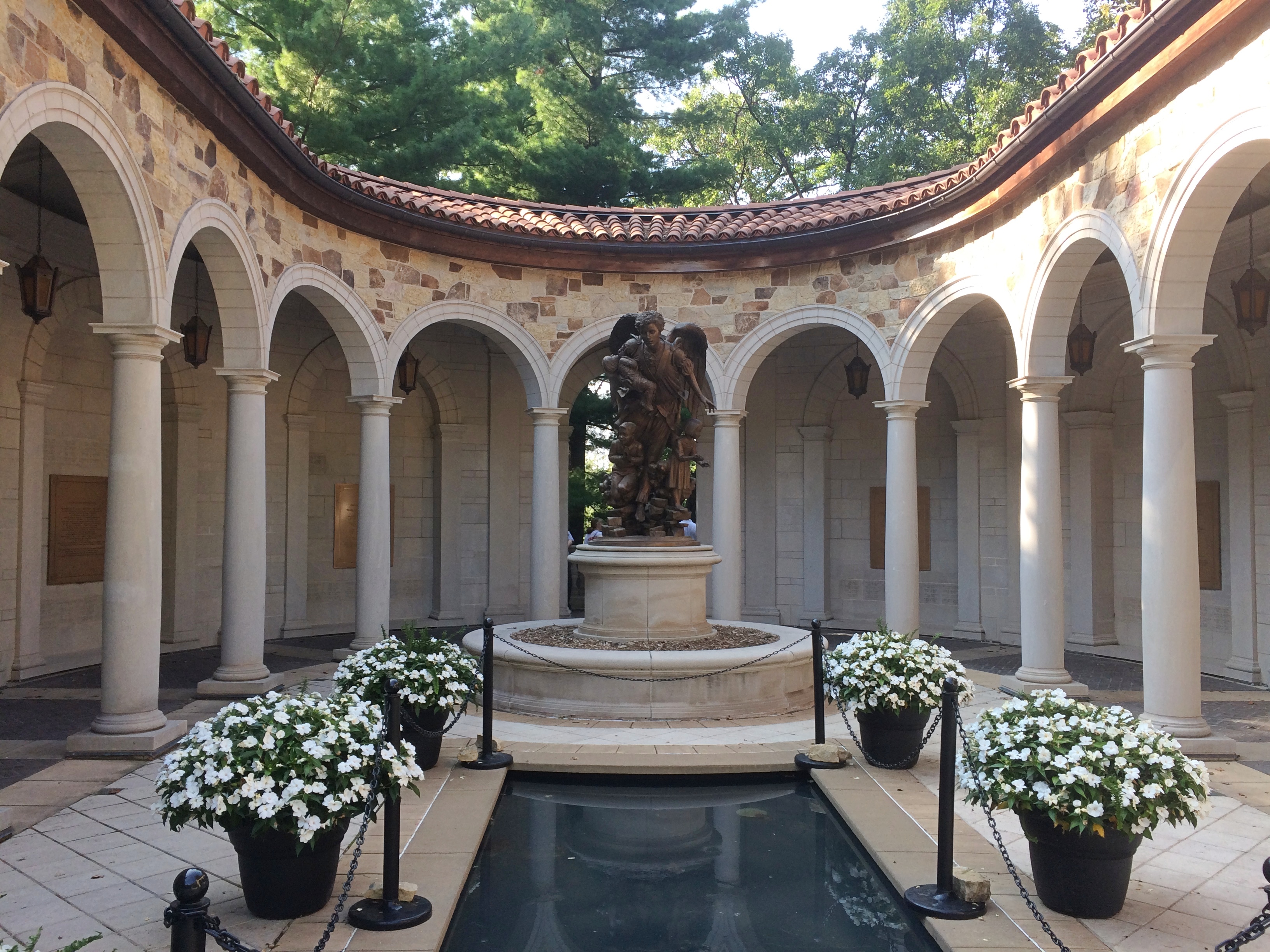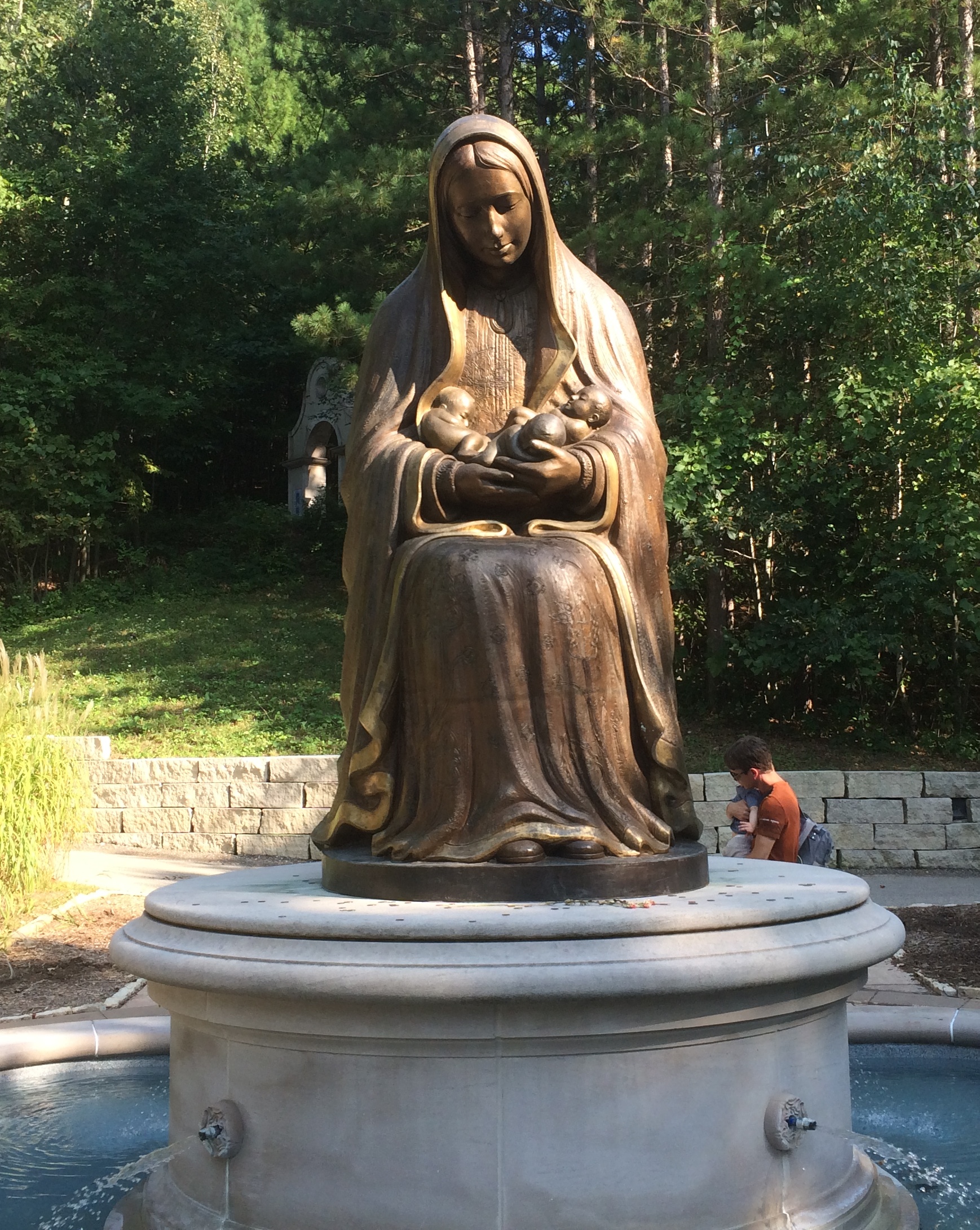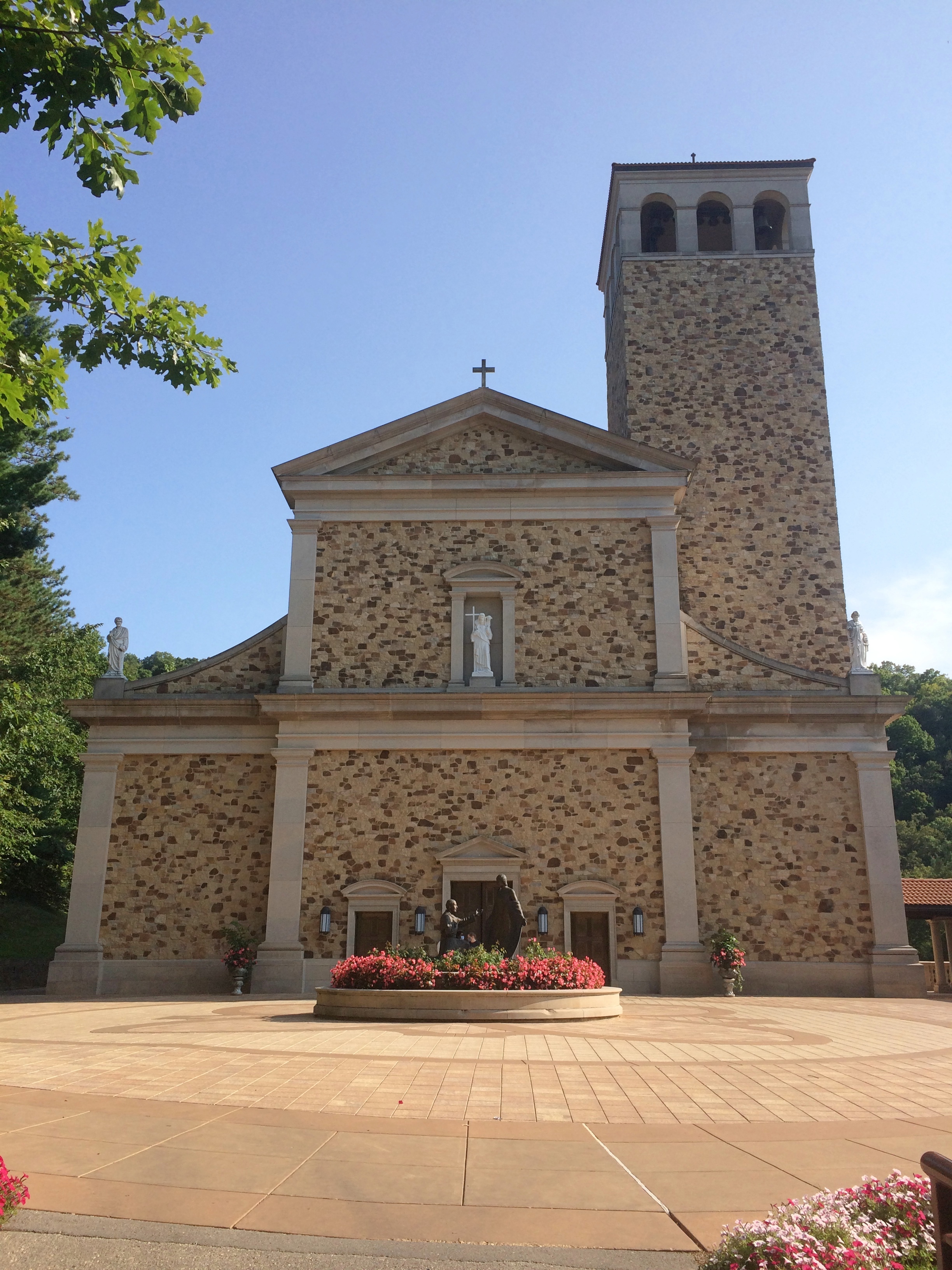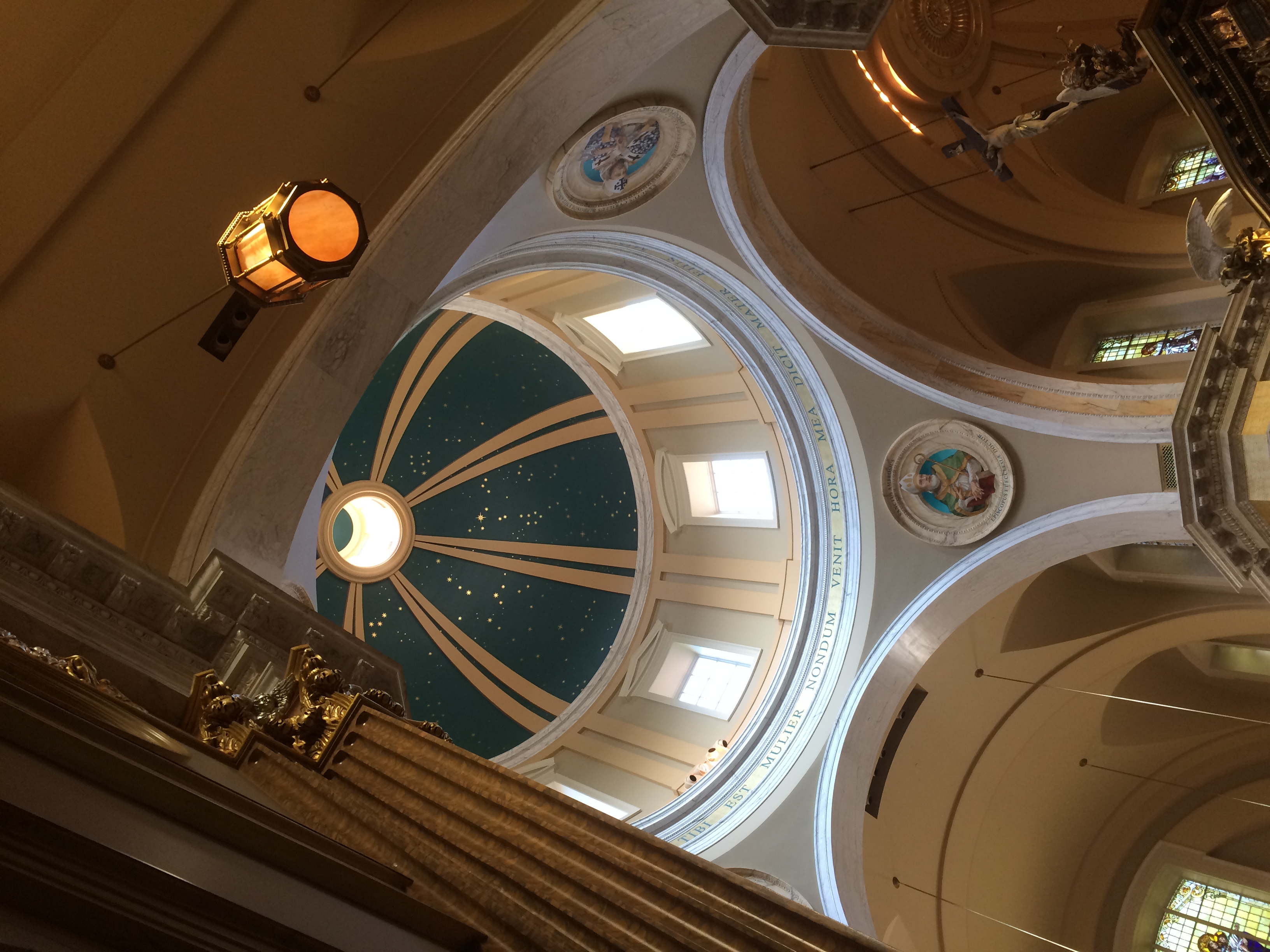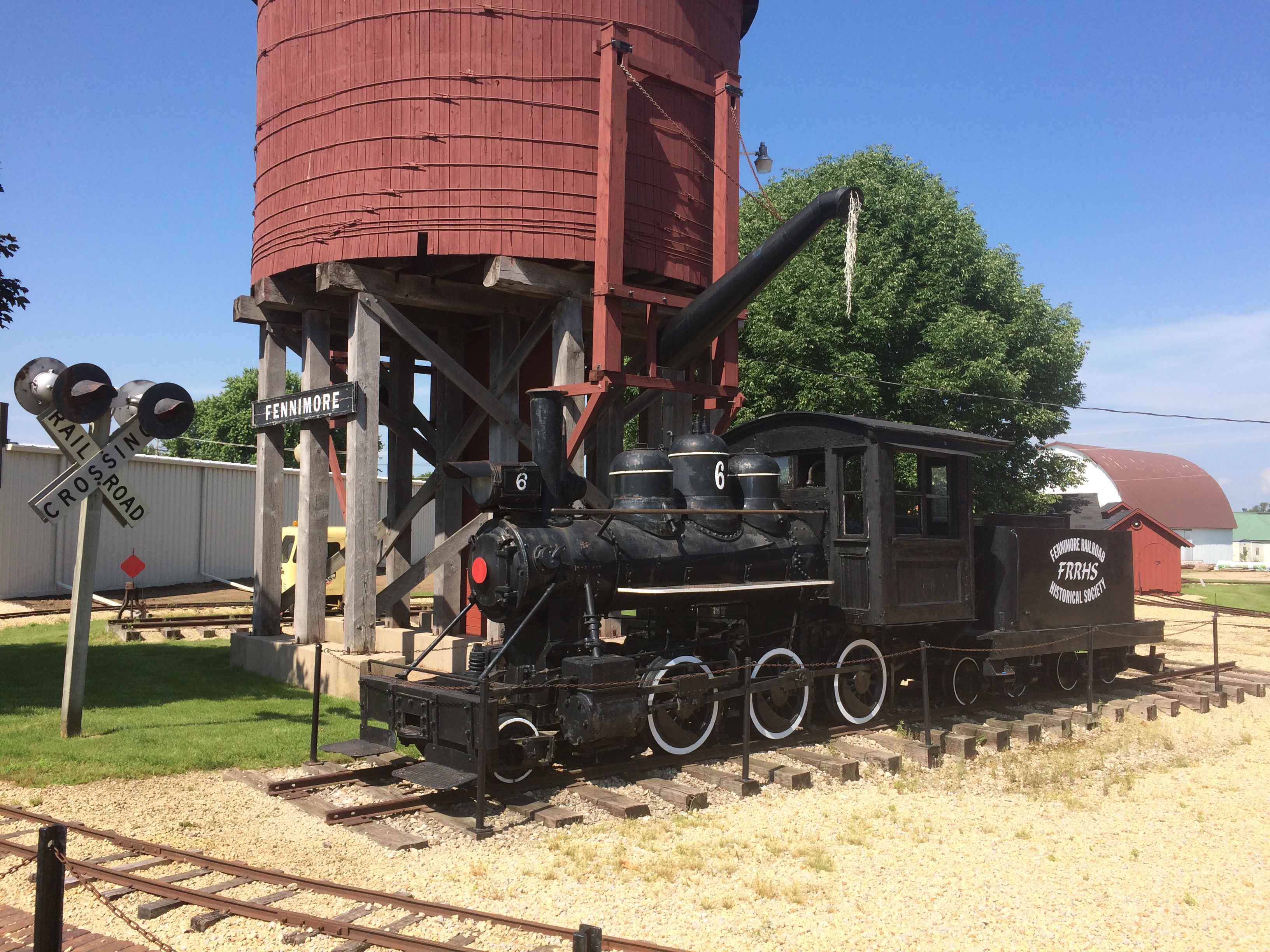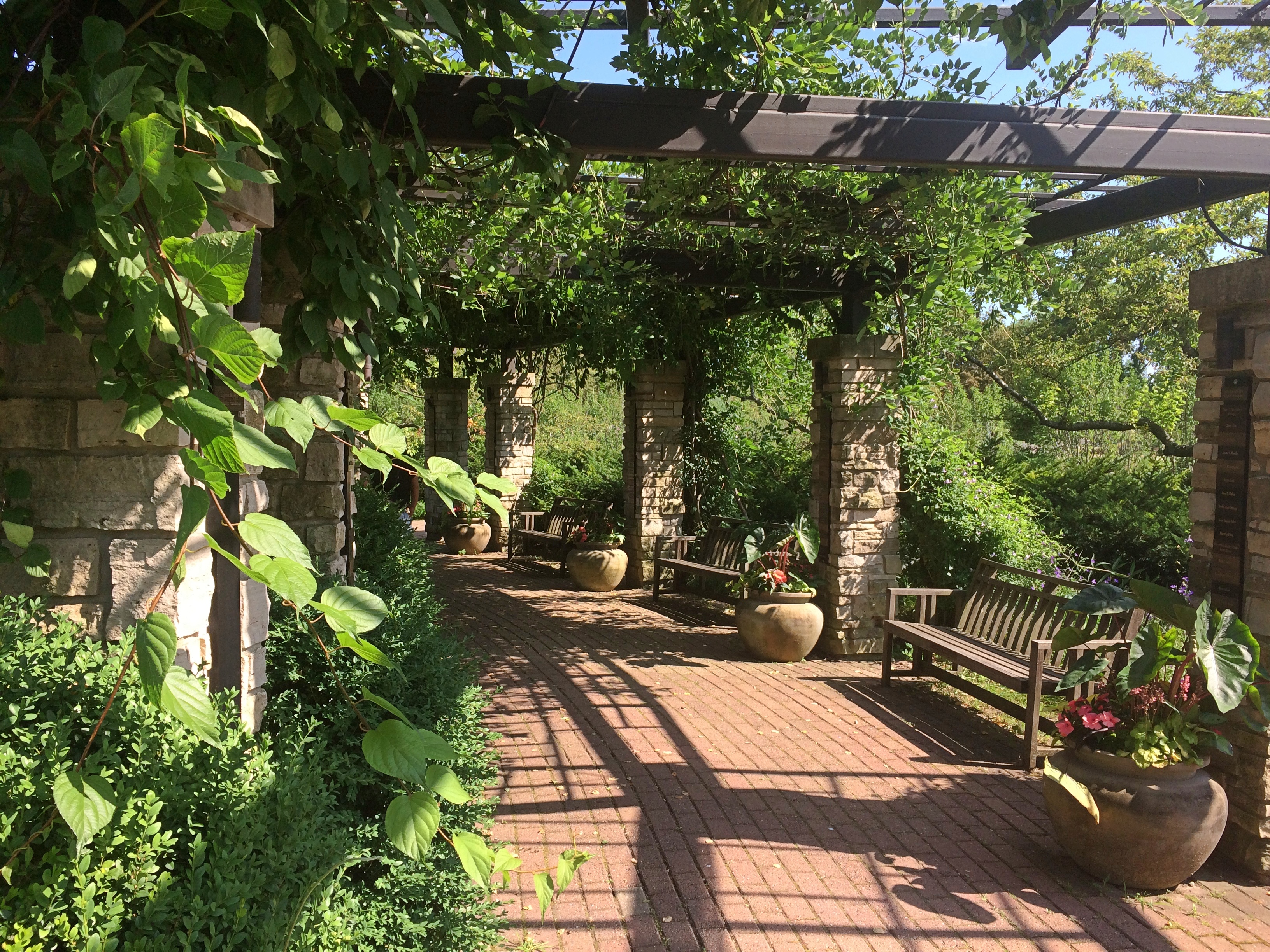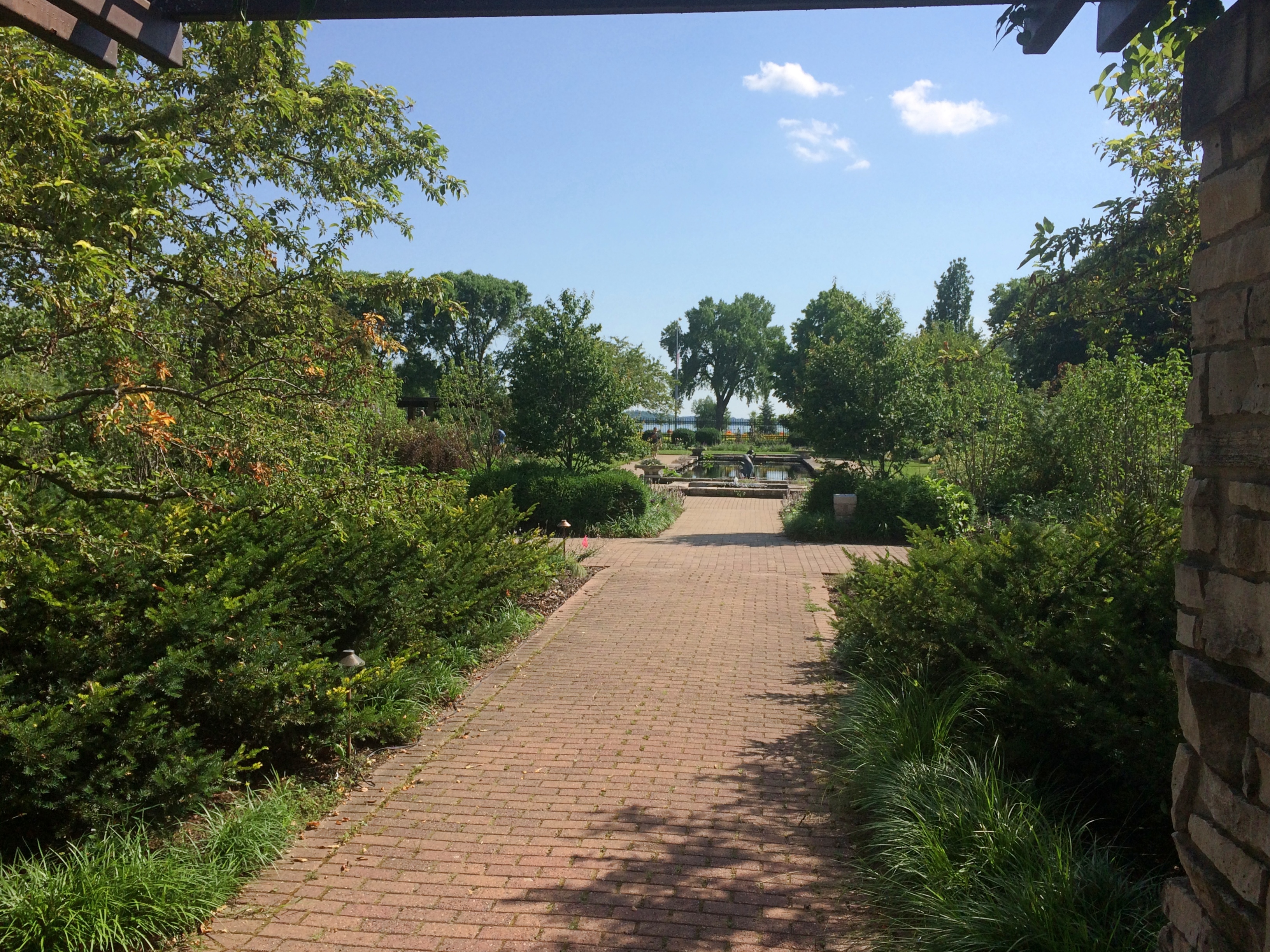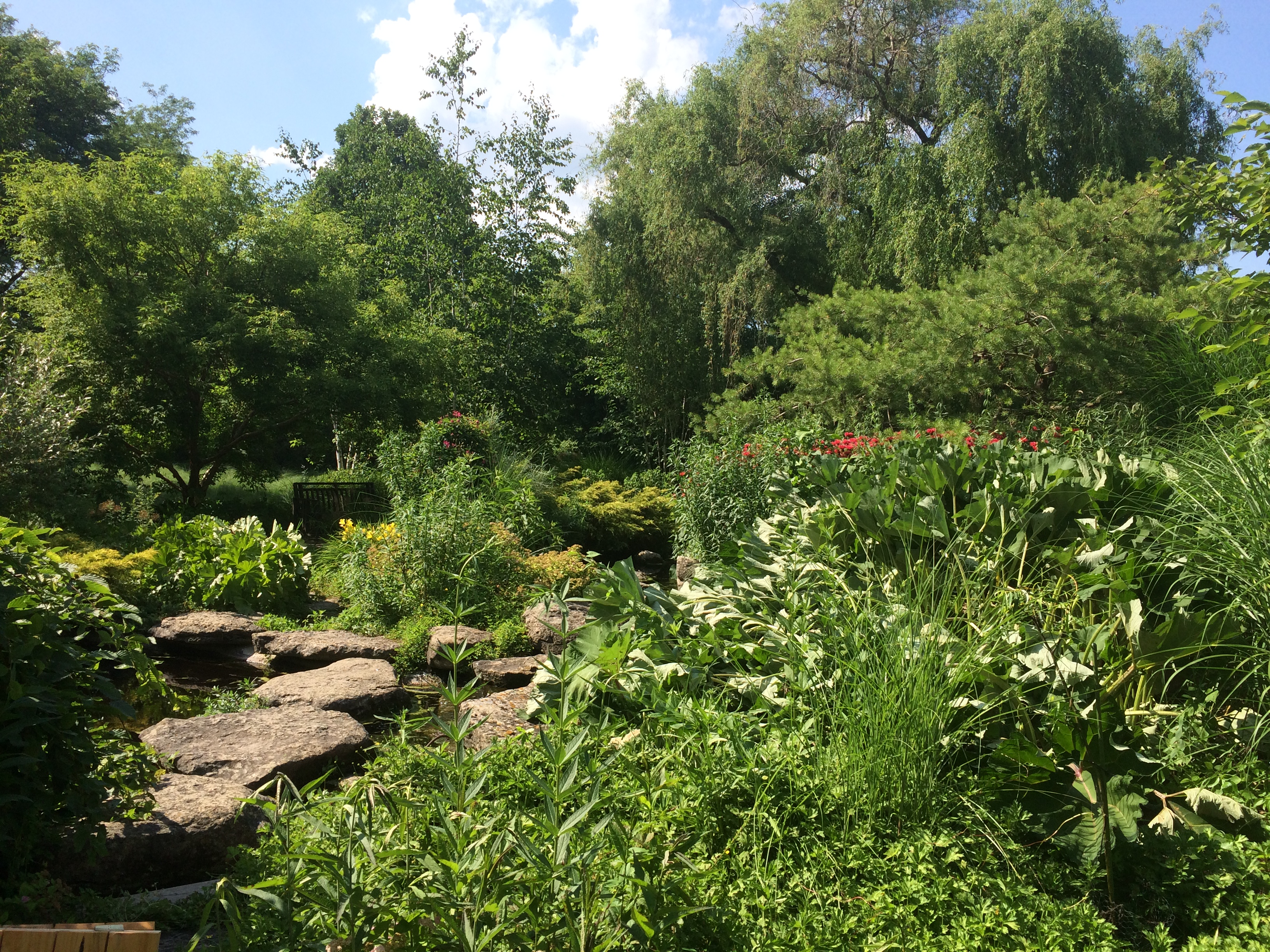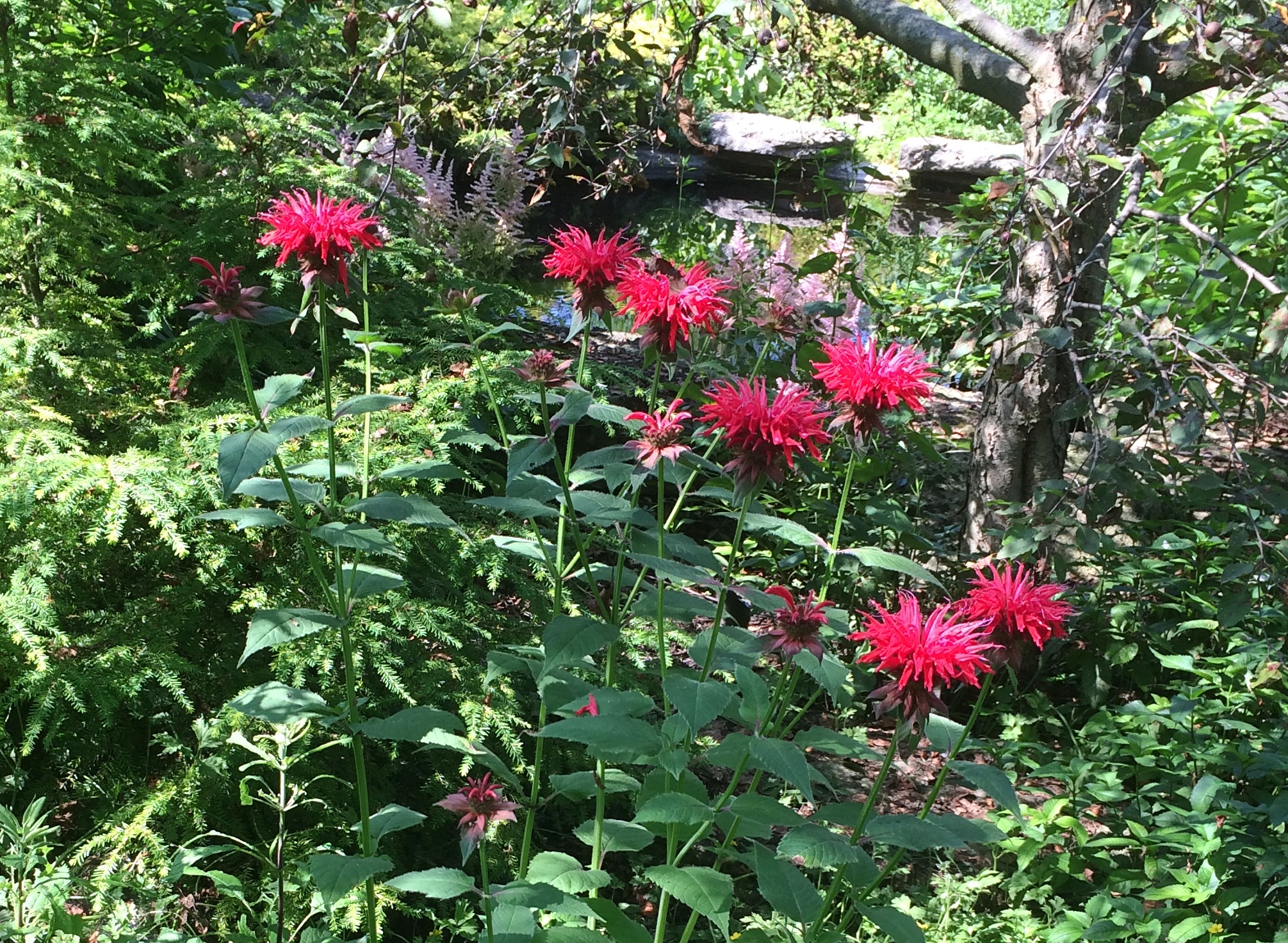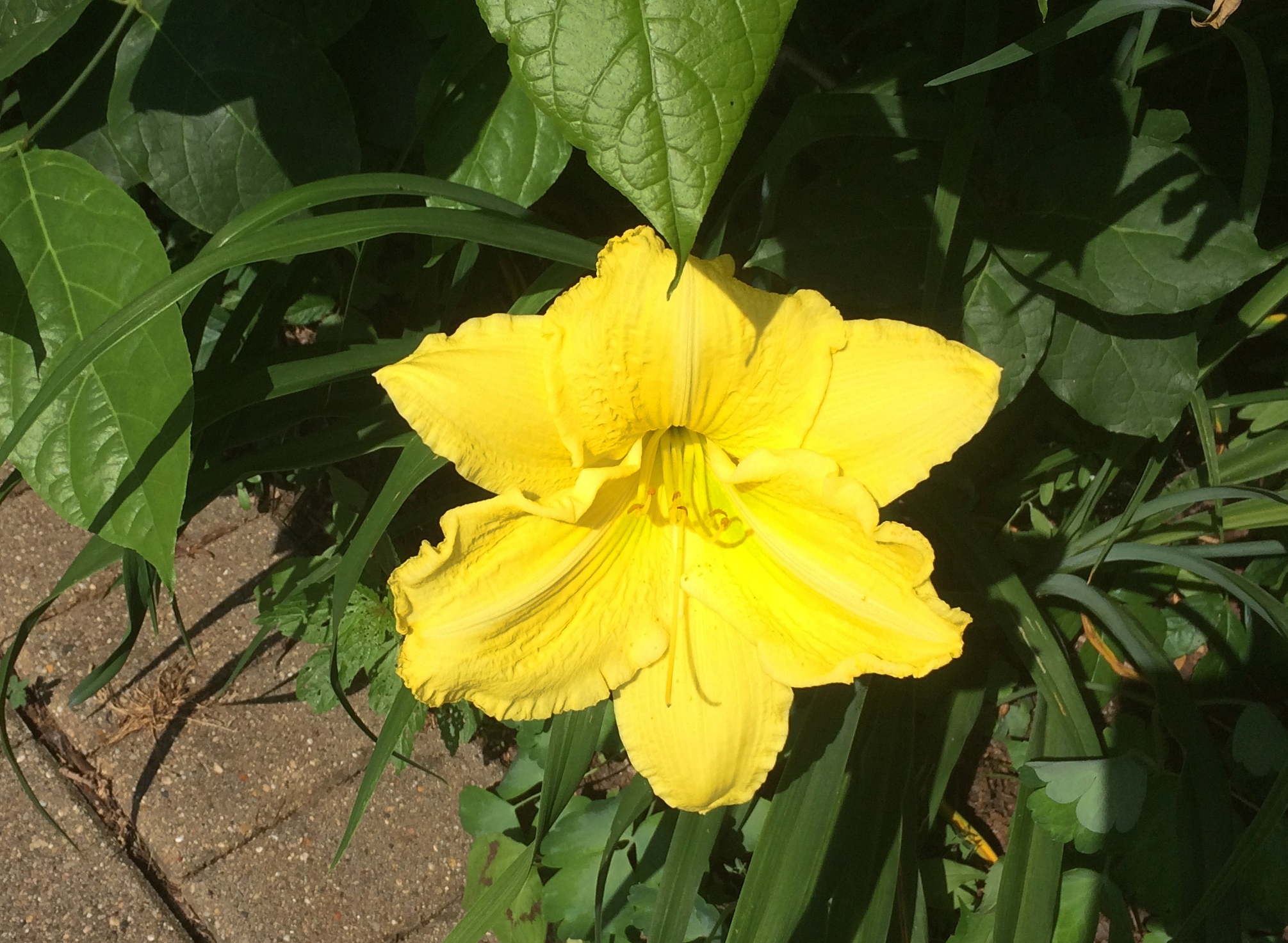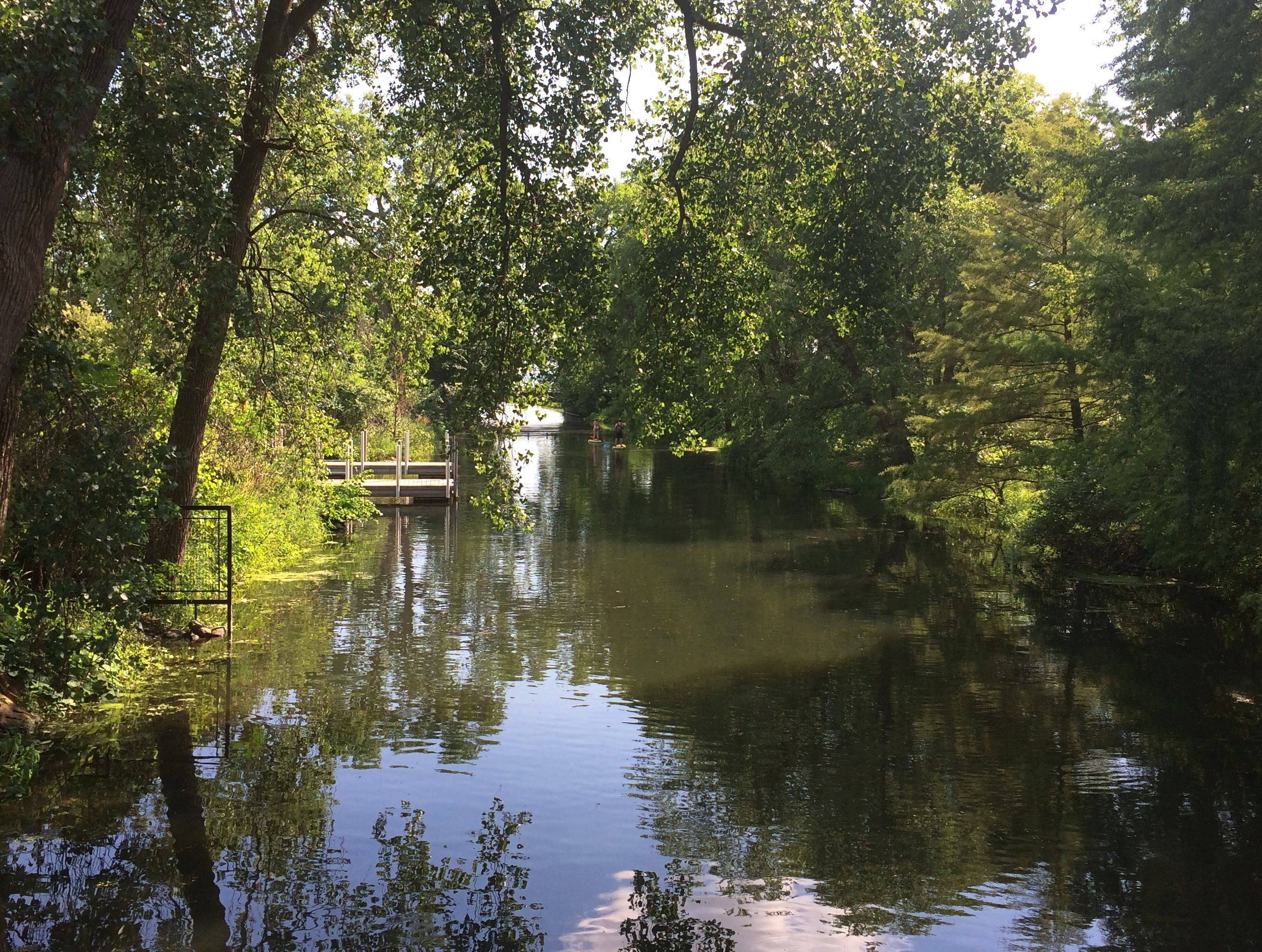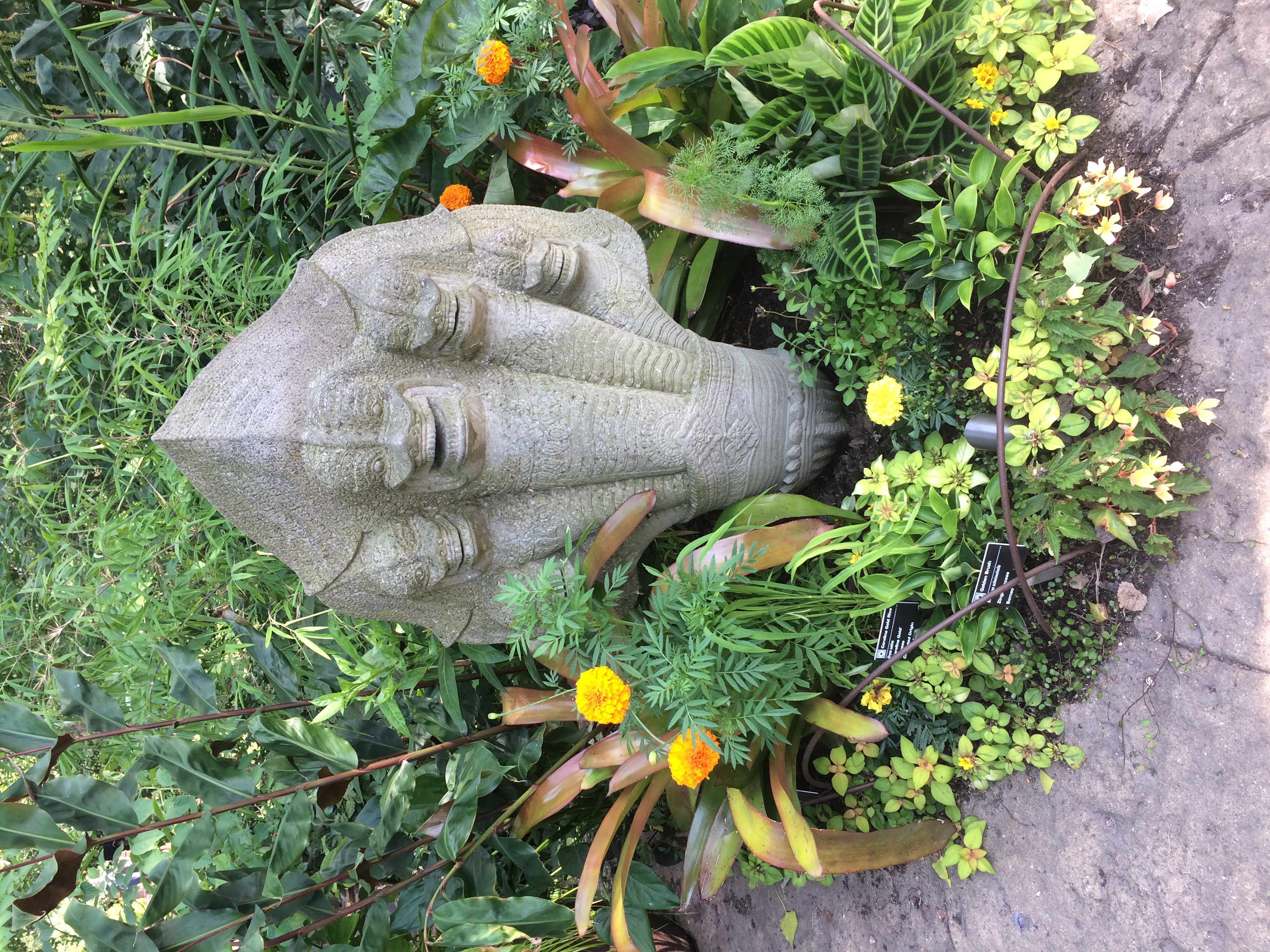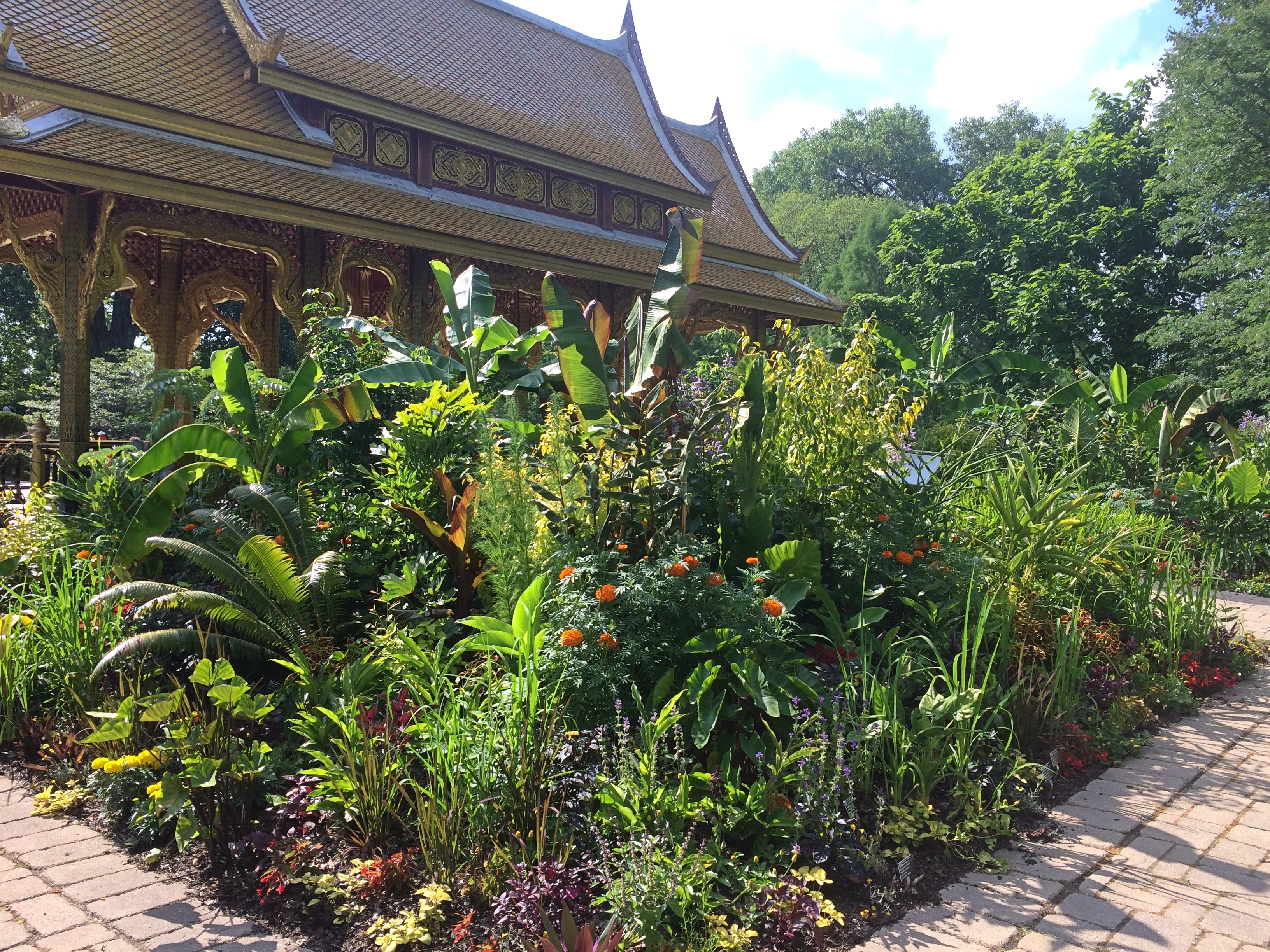Last year for the Labor Day weekend, we headed east to the shores of Lake Huron. This year, we headed west to La Crosse, Wisconsin, which has its own water feature, the various channels of the Mississippi River.
The trip was structured like our visit to Prairie du Chien in July: Friday night in Madison, a slowish drive on U.S. 14 to La Crosse the next day, where we spent Saturday night, and then a somewhat faster return on Sunday afternoon, mostly on I-90. La Crosse was the destination, but we also stopped at various places along the way there and back.
We visited a major Catholic shrine, looked down on La Crosse from a tall bluff, looked down on the Wisconsin River from another bluff, ate food obtained from drive-thrus more than once, swam in a hotel pool for the first time in ages, stopped at a large farm stand, slept on an island as a thunderstorm moved through the area, walked along the Mississippi, came very close to the border with Minnesota without entering that state, walked around downtown and a university campus, drove along an astonishingly beautiful Wisconsin Rustic Road northeast of La Crosse, spent time in the Bicycling Capital of America, and saw a couple of rural cemeteries, an installation of outsider art and the back lot of fiberglass statue manufacturer.
A good little trip. That’s what we can do these days.
I can report a number of changes in Wisconsin since July. Masks are now more emphasized, especially by businesses at their entrances, some citing local directives. More people seemed to be wearing them. Also, political yard signs have sprouted. It’s my impression that, simply in terms of signs, Trump has a slight edge in rural Wisconsin. But I also have to say there was no shortage of Biden signs in those rural stretches.
We stopped by whim a few places along U.S. 14. Such as at a historic marker just west of Mazomanie. The marker told us that a town had once prospered on the site.
VILLAGE OF DOVER
Beginning in 1844, nearly 700 settlers were brought into this area by the British Temperance & Emigration Society, organized the previous year in Liverpool, England. By 1850 Dover boasted a hotel, post office, cooper, blacksmith, shoemaker, wagon shop and stores. When the railroad chose Mazomanie for a depot site and made no stop in Dover, Doverites moved their houses into Mazomanie and Dover faded away to become a ghost town.
The site does look fairly undeveloped in our time, except for a small fence.
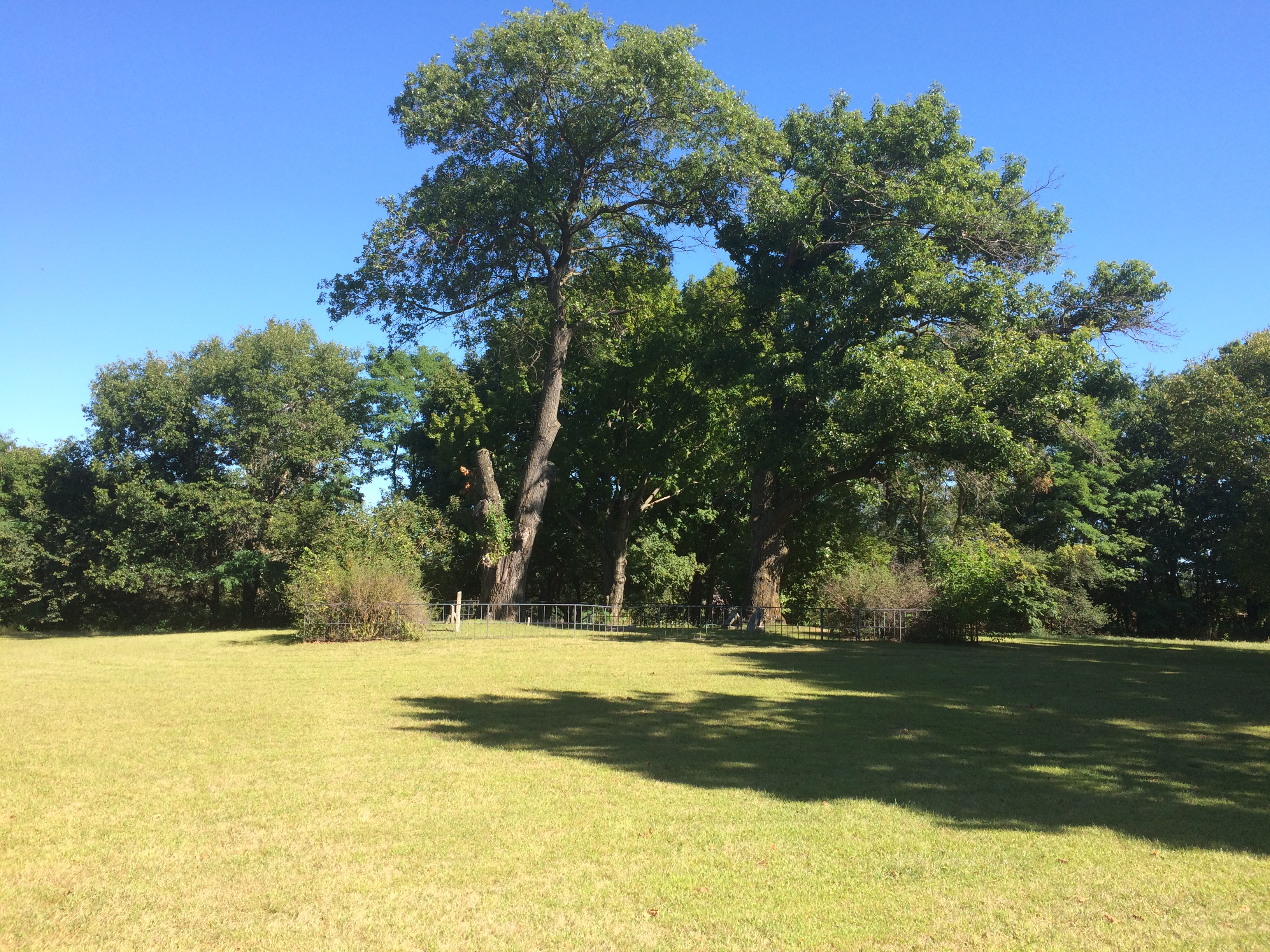 Behind the fence is something that the living residents of Dover probably never considered moving: a small slip of a cemetery.
Behind the fence is something that the living residents of Dover probably never considered moving: a small slip of a cemetery.
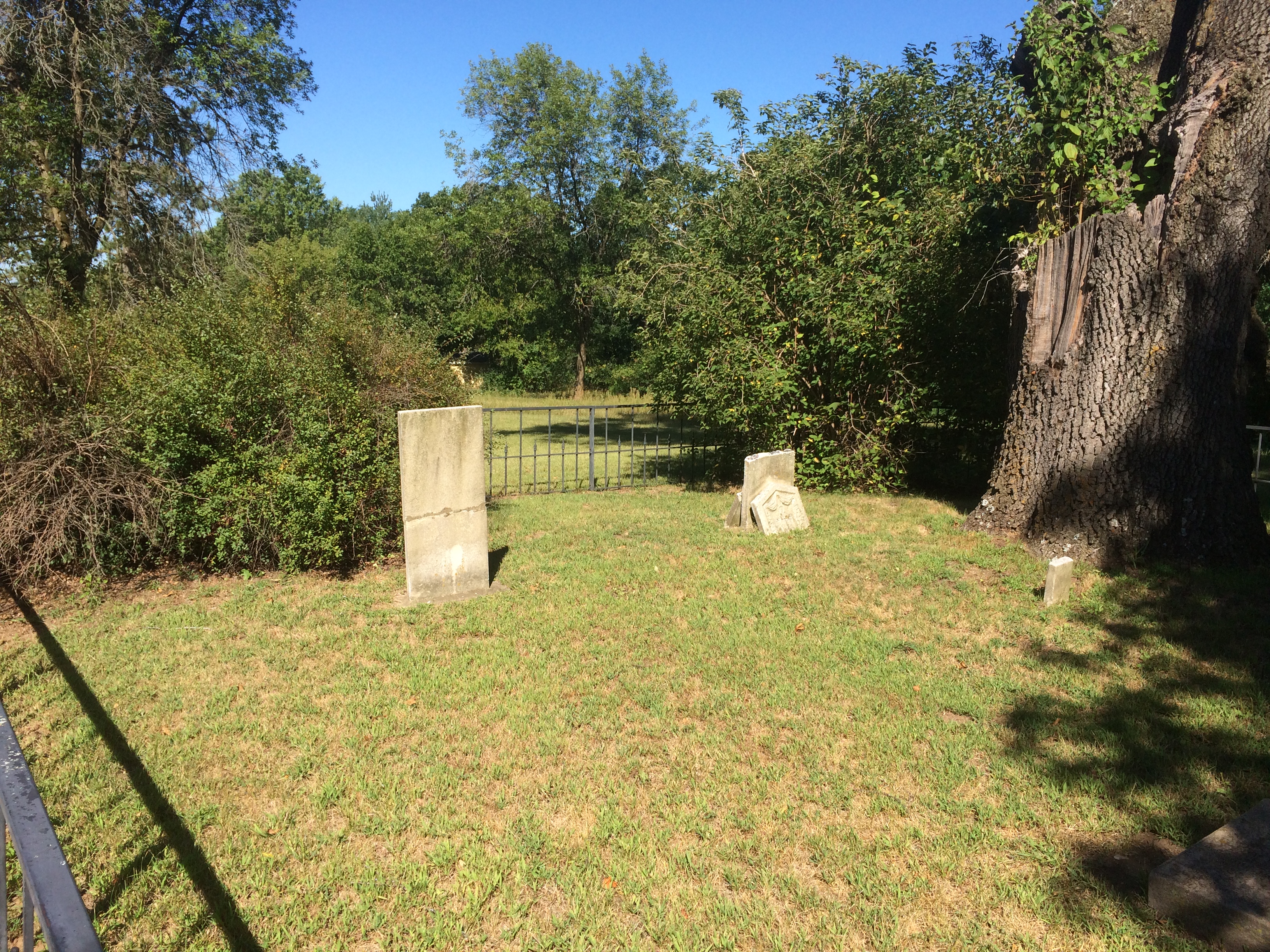
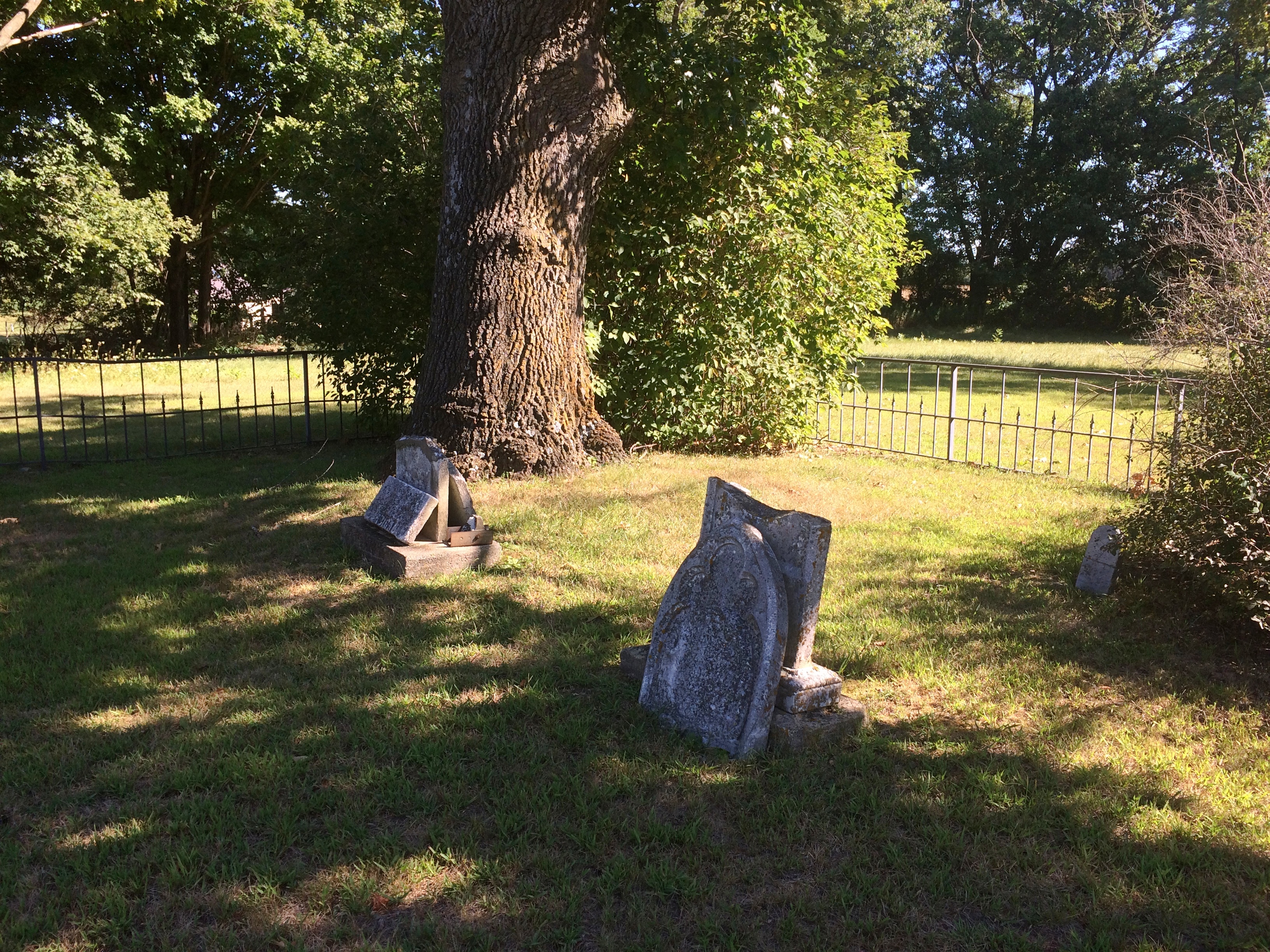 In Richland Center, seat of Richland County, we stopped for a few moments to take a look at the A.D. German Warehouse. It is an unusual-looking warehouse. The front:
In Richland Center, seat of Richland County, we stopped for a few moments to take a look at the A.D. German Warehouse. It is an unusual-looking warehouse. The front:
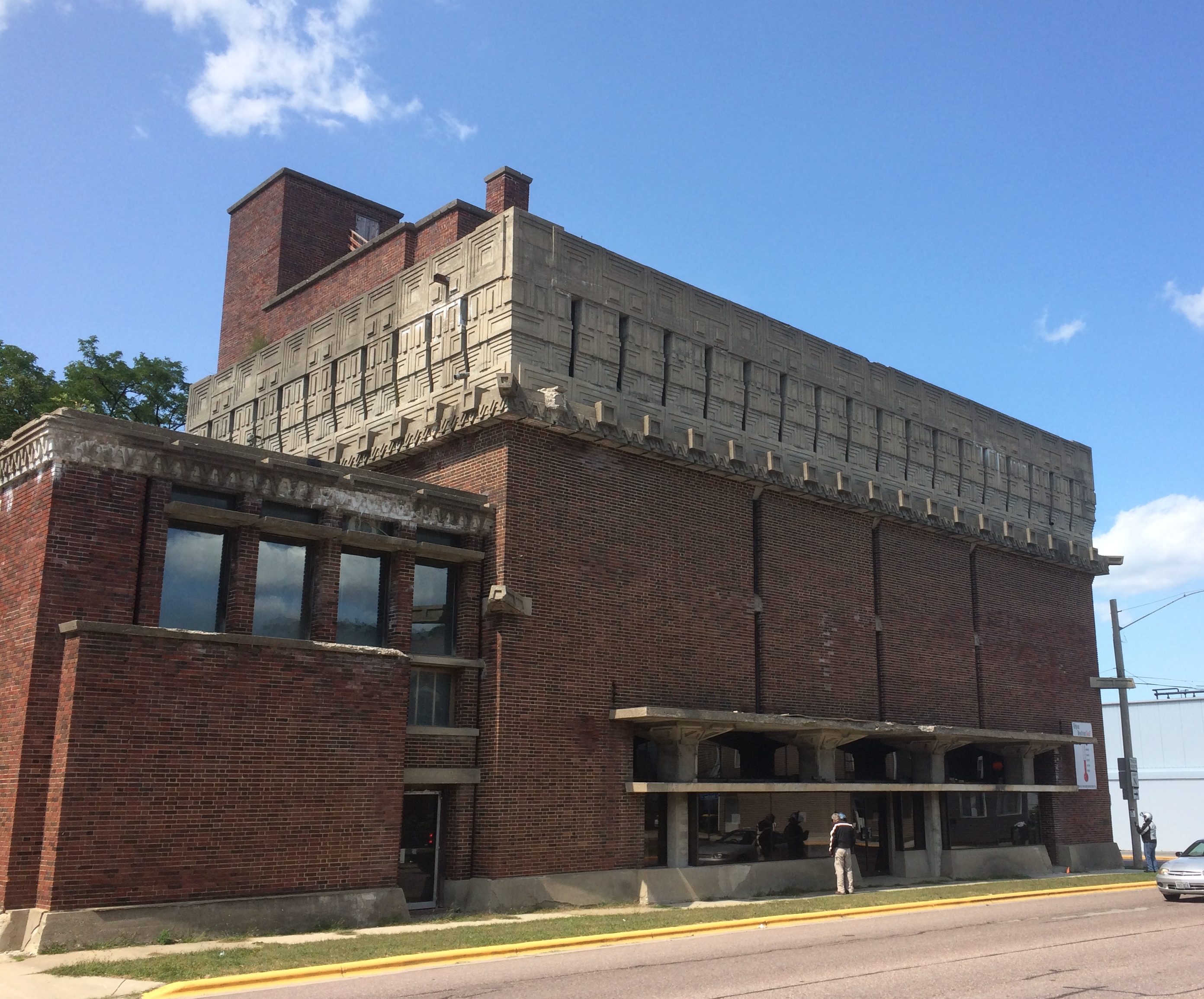
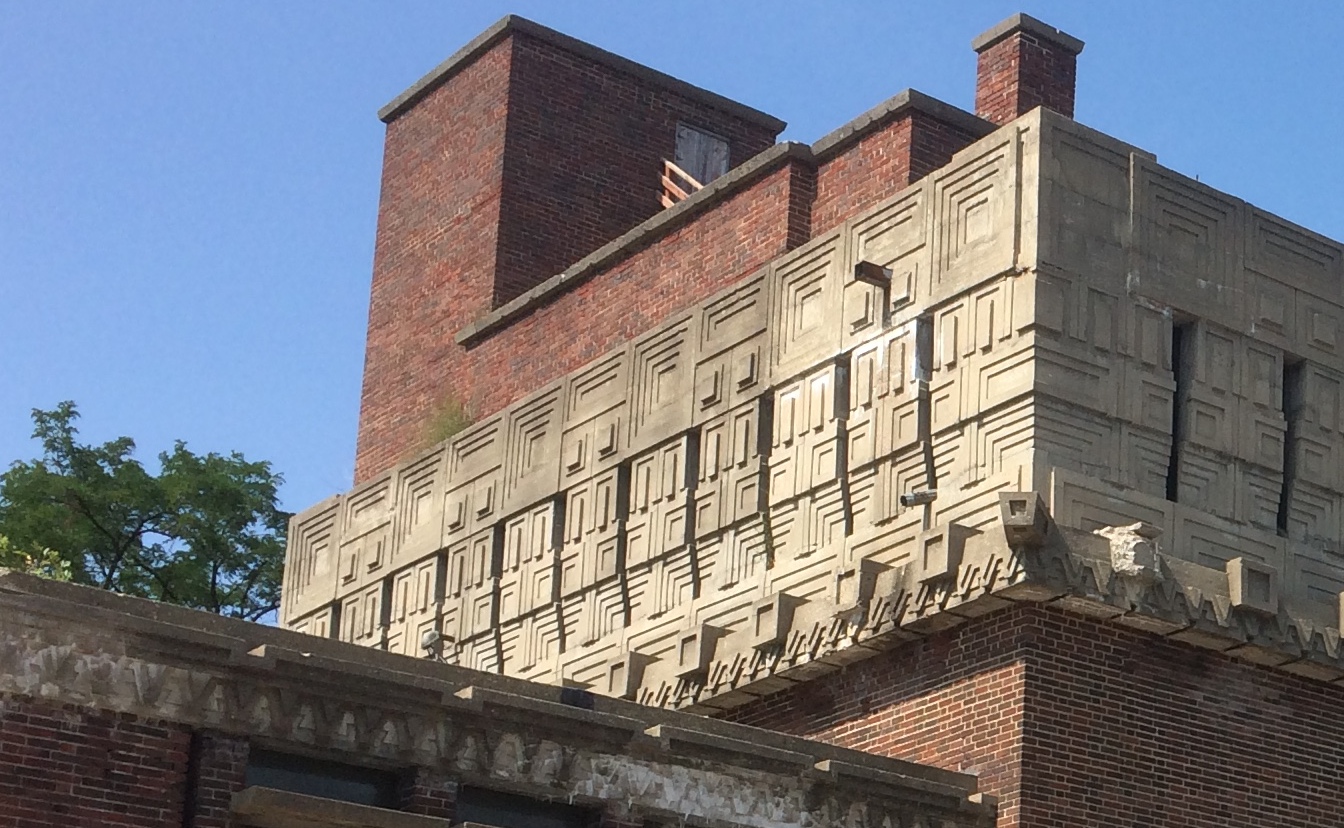 The back, including a building with a sign that says it is an older A.D. German Warehouse.
The back, including a building with a sign that says it is an older A.D. German Warehouse.
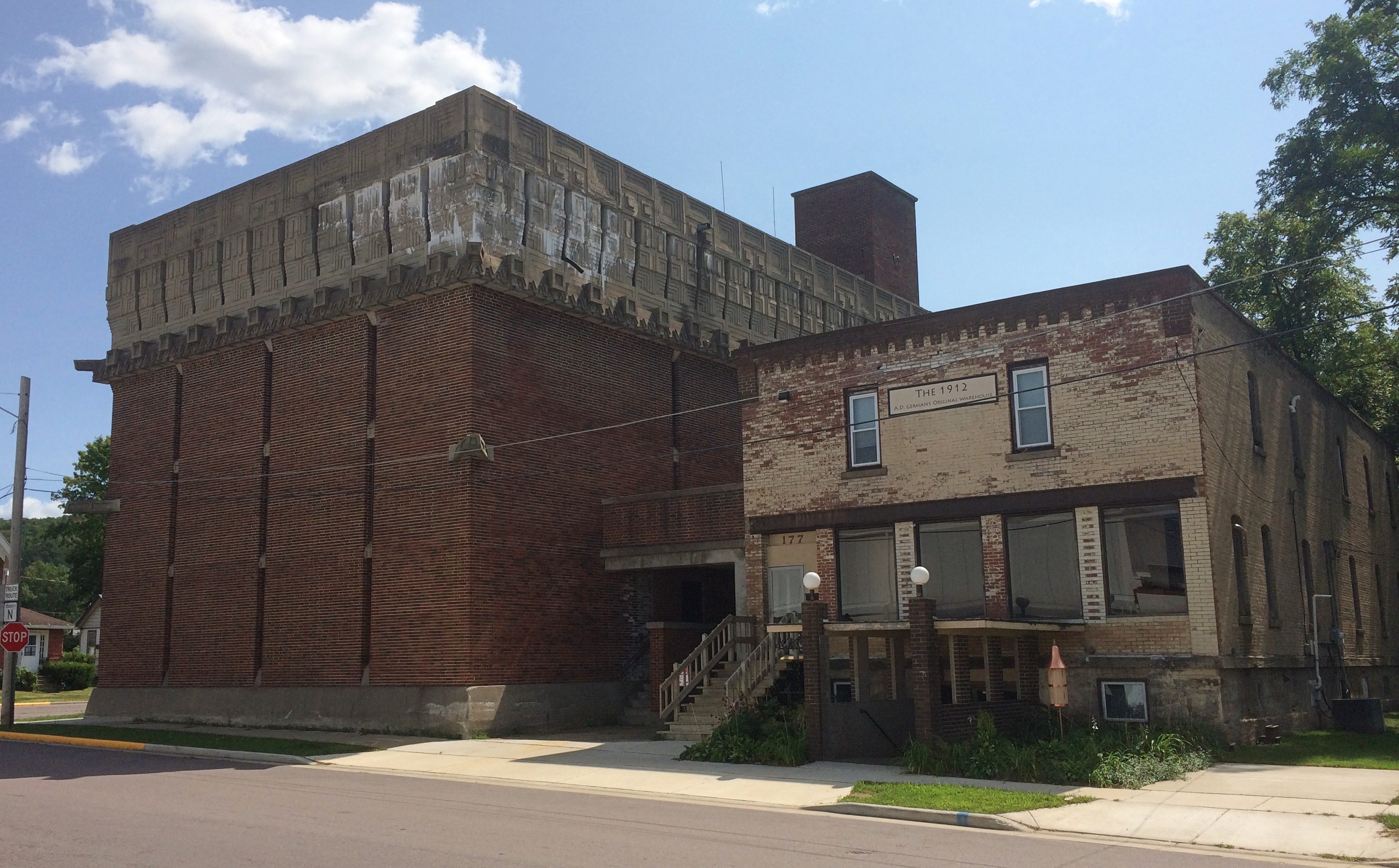 Unusual or not, the “new” A.D. German is known for one thing: being designed by Frank Lloyd Wright, and apparently his only warehouse.
Unusual or not, the “new” A.D. German is known for one thing: being designed by Frank Lloyd Wright, and apparently his only warehouse.
“The A.D. German Warehouse is an impressive brick structure topped by a magnificent concrete frieze,” says Wright in Wisconsin. “Generally considered to resemble a Mayan temple, this avant-garde warehouse and attached music room was built for A. D. German’s wholesale grocery business.”
A Mayan temple. The thought amuses me no end. It also makes me re-imagine modern warehouse/distribution buildings, those absolutely utilitarian linchpins of the modern economy. What if some of them had splashes of ornament taken from different times and places? Some friezes from the Parthenon. A touch of a Babylon ziggurat. Or some Mayan elements.
But no. That isn’t the sort of society we live in. You want to spend money on what? Just build the damn thing.
Speaking of which: “Construction was stopped with the building unfinished in 1921, after spending $125,000, which exceeded the original cost estimate of $30,000,” Wright in Wisconsin continues. “It is the only remaining commercial structure designed by Wright that still exists from this time period.”
No wonder he didn’t do any other warehouse commissions. Yet I’m glad to say that an effort is under way to restore the thing. Never mind that it’s a Wright. The world is just a little better place for having a Mayan-flavored warehouse somewhere outside the homeland of the Maya.
On the outskirts of Richland Center, there is a field flying more than 300 flags.
 It’s part of the American Legion Veterans Memorial Park, Bayard de Hart Post 13. Must be quite a sight when the wind is up. At the base of each flag is a stone plaque with the name and service details of a local veteran, living or dead.
It’s part of the American Legion Veterans Memorial Park, Bayard de Hart Post 13. Must be quite a sight when the wind is up. At the base of each flag is a stone plaque with the name and service details of a local veteran, living or dead.
There’s also a tank.
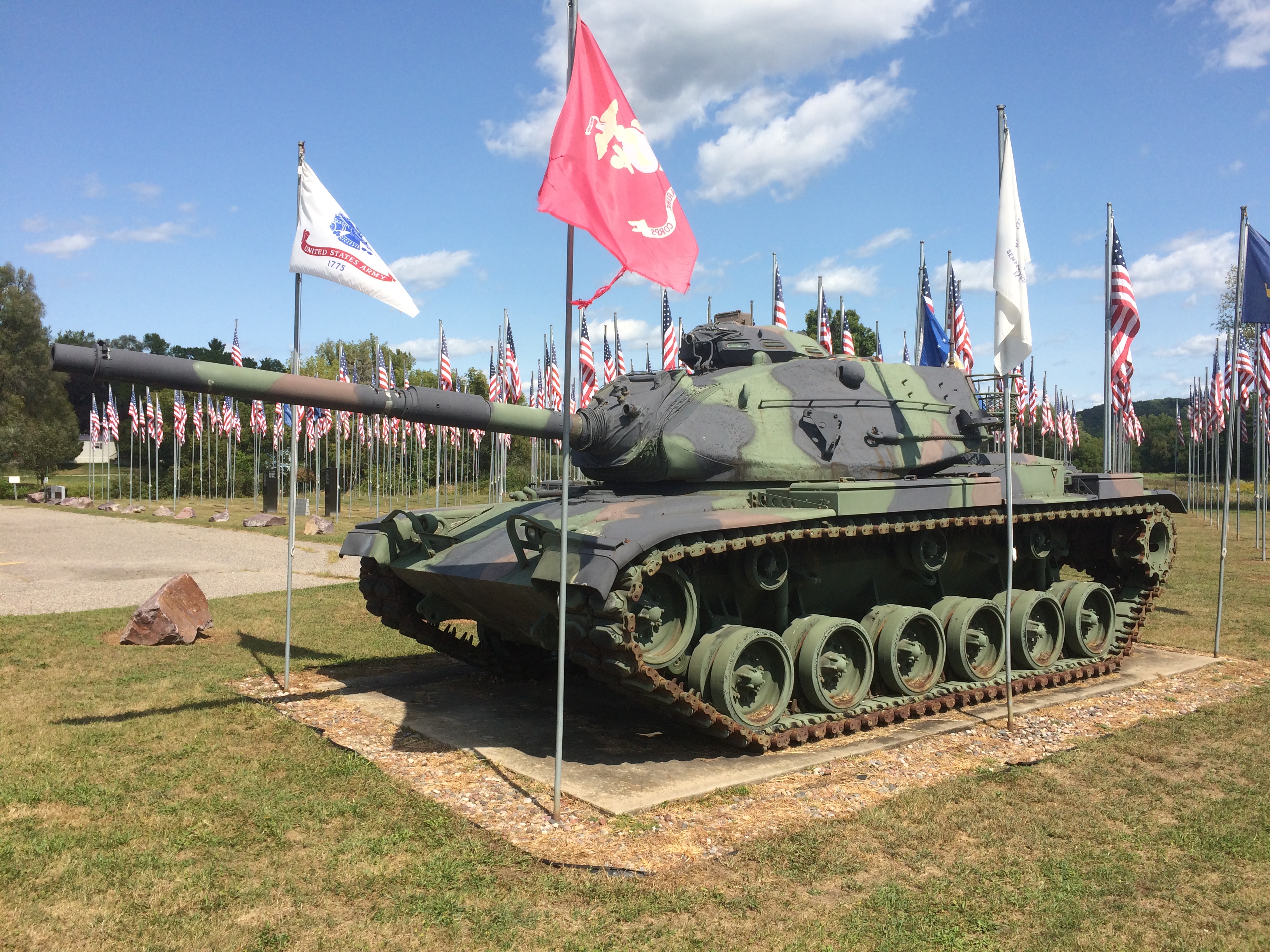 An M60 A3, a sign said, a kind of tank that last saw use in action (for the U.S.) during the first Gulf War.
An M60 A3, a sign said, a kind of tank that last saw use in action (for the U.S.) during the first Gulf War.
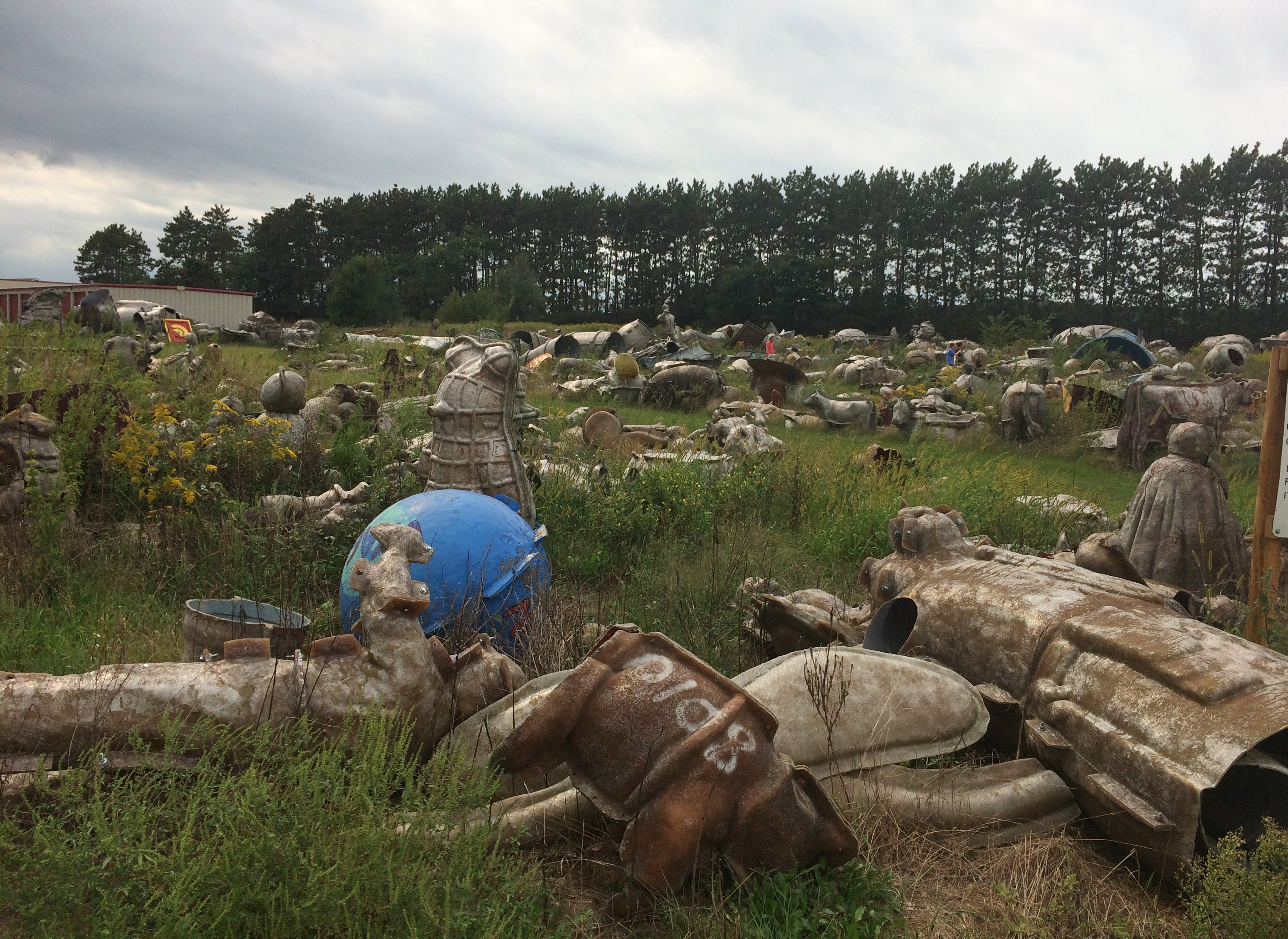 A large sign welcomes visitors, but warns them as well.
A large sign welcomes visitors, but warns them as well.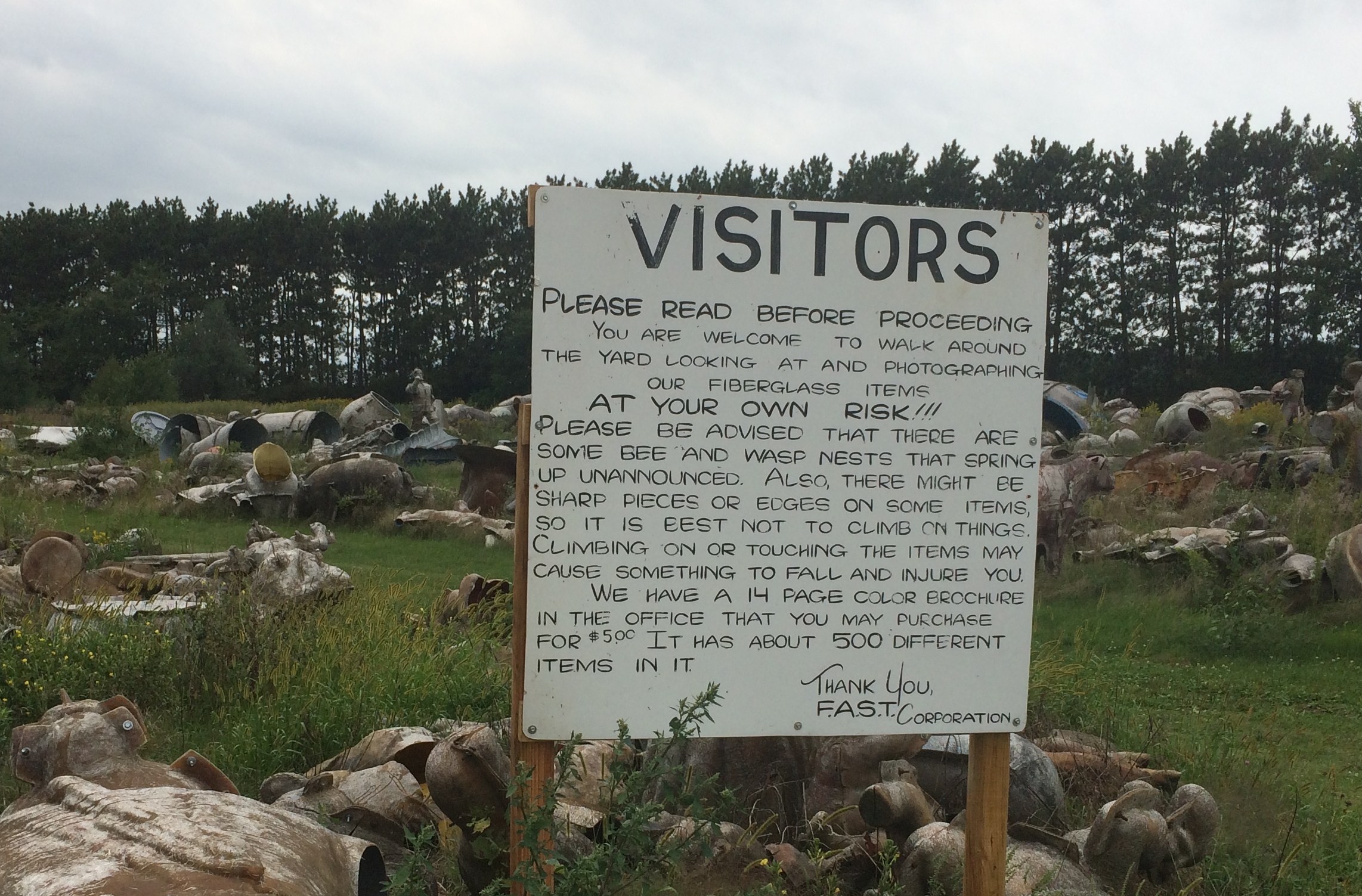 We heeded those warnings and didn’t climb the molds or disturb bee or wasp colonies. We merely looked around the weedy dumping ground, and were well rewarded by the whimsy of it all.
We heeded those warnings and didn’t climb the molds or disturb bee or wasp colonies. We merely looked around the weedy dumping ground, and were well rewarded by the whimsy of it all.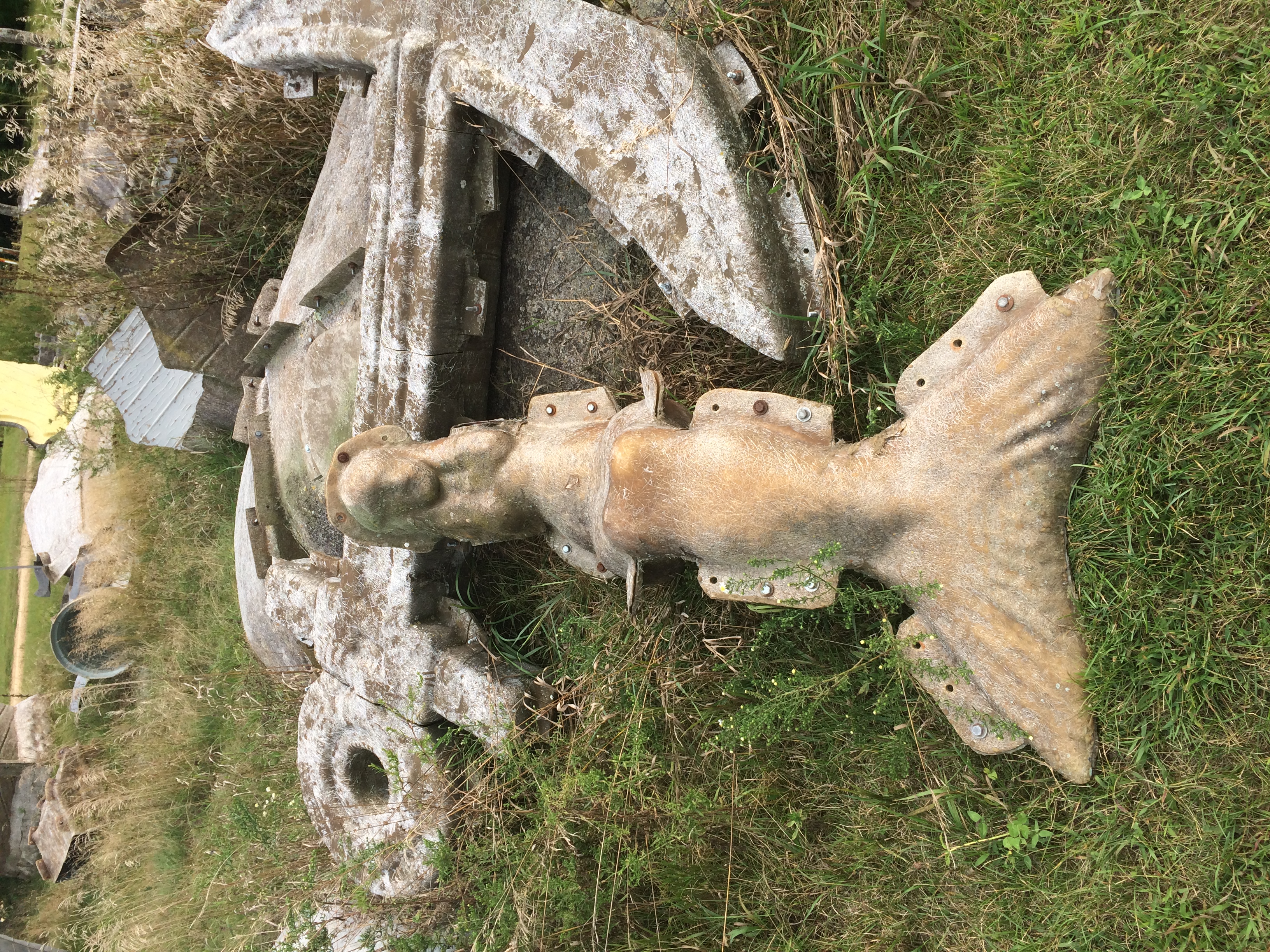
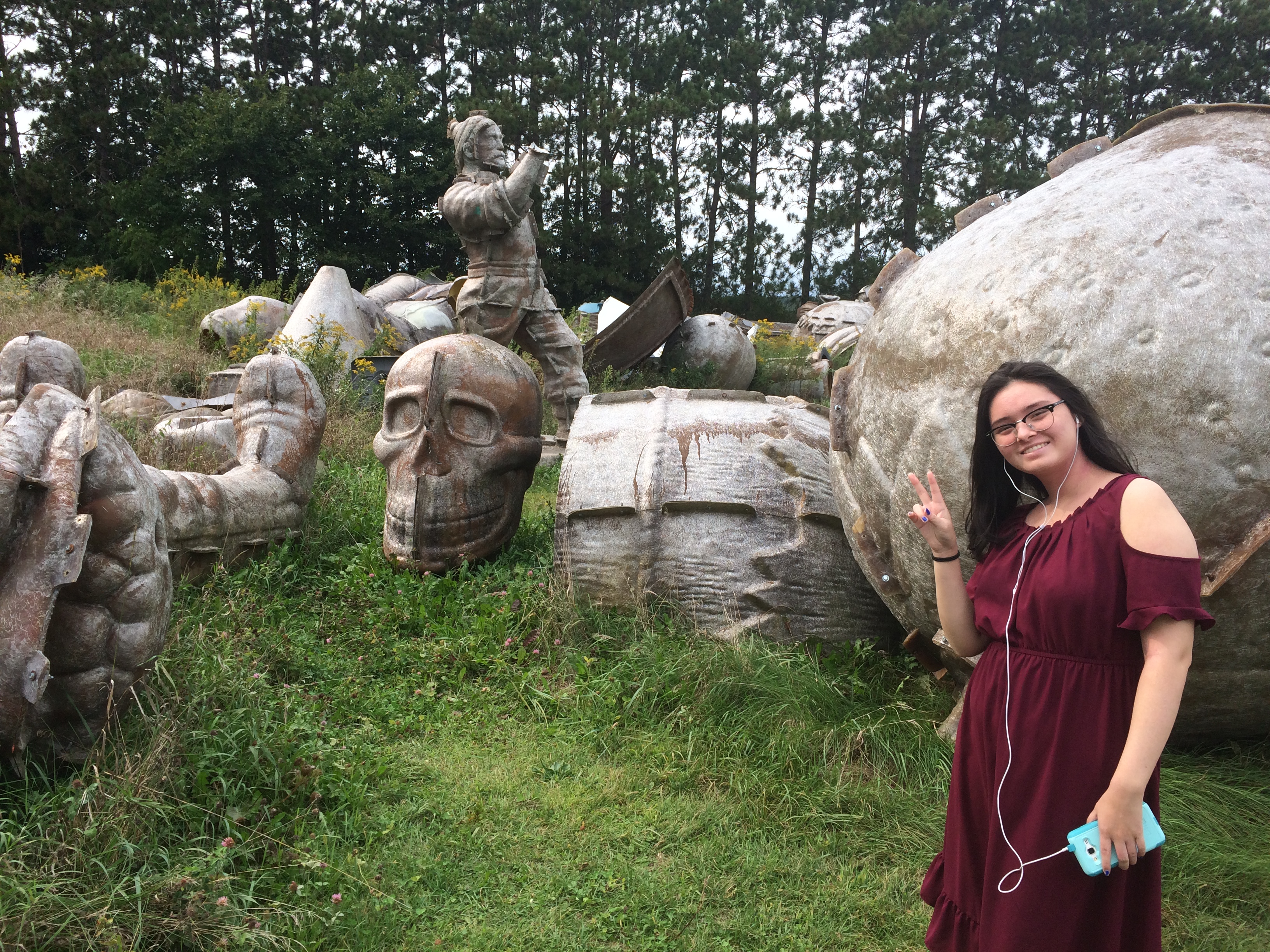 Look! A Big Boy. I explained to Ann what that was.
Look! A Big Boy. I explained to Ann what that was.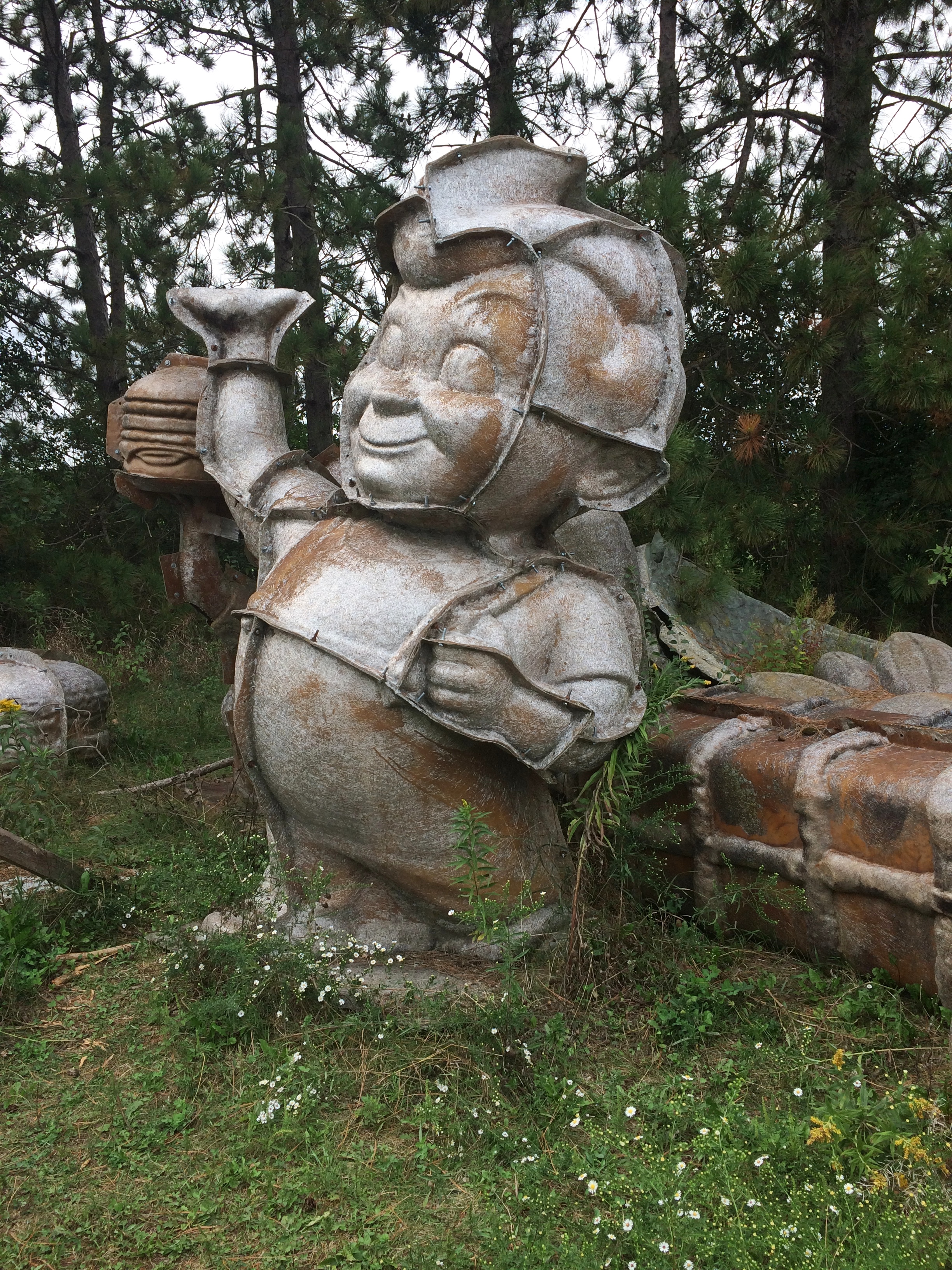 More oddities.
More oddities.
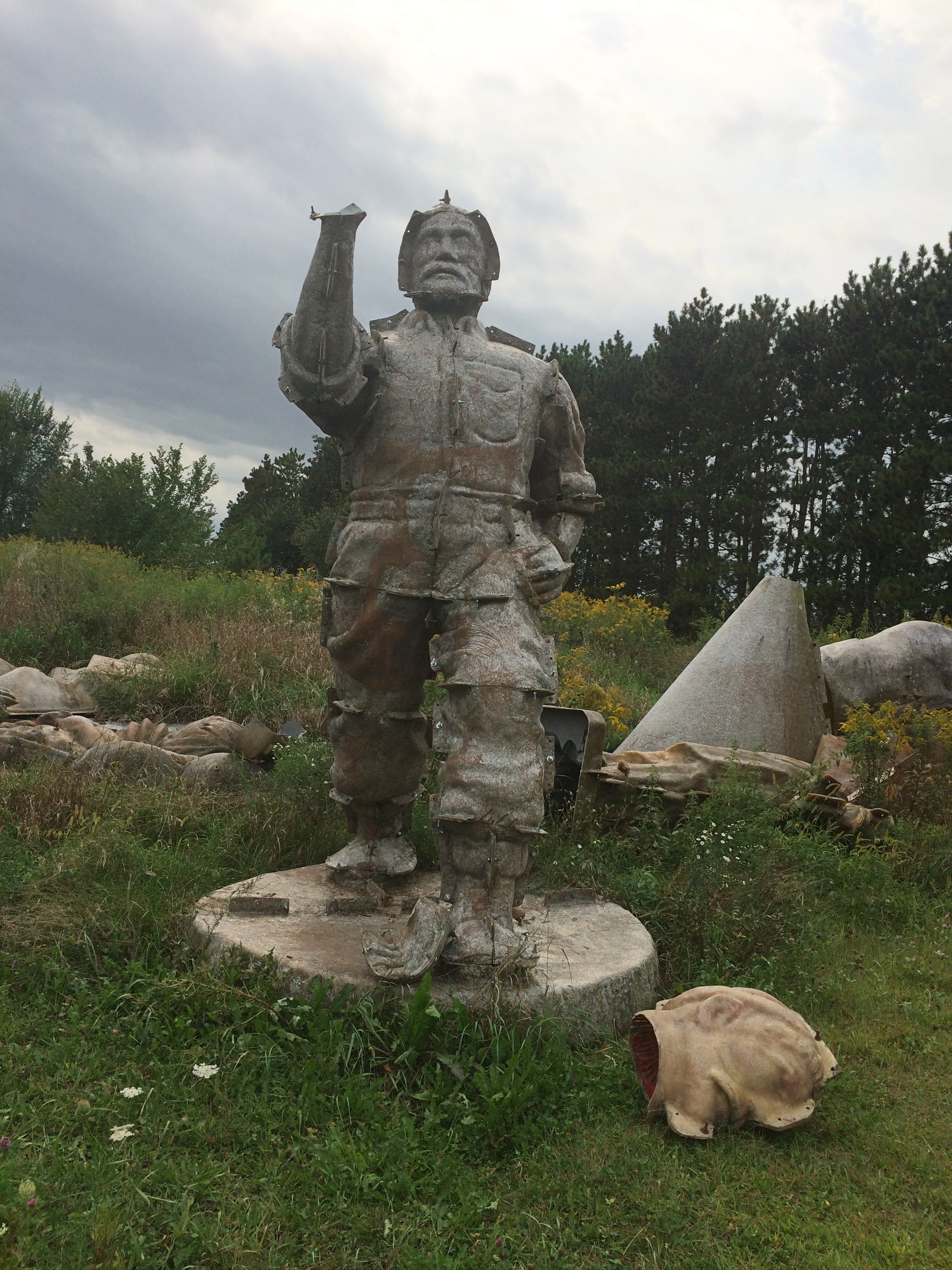 Old Scratch.
Old Scratch.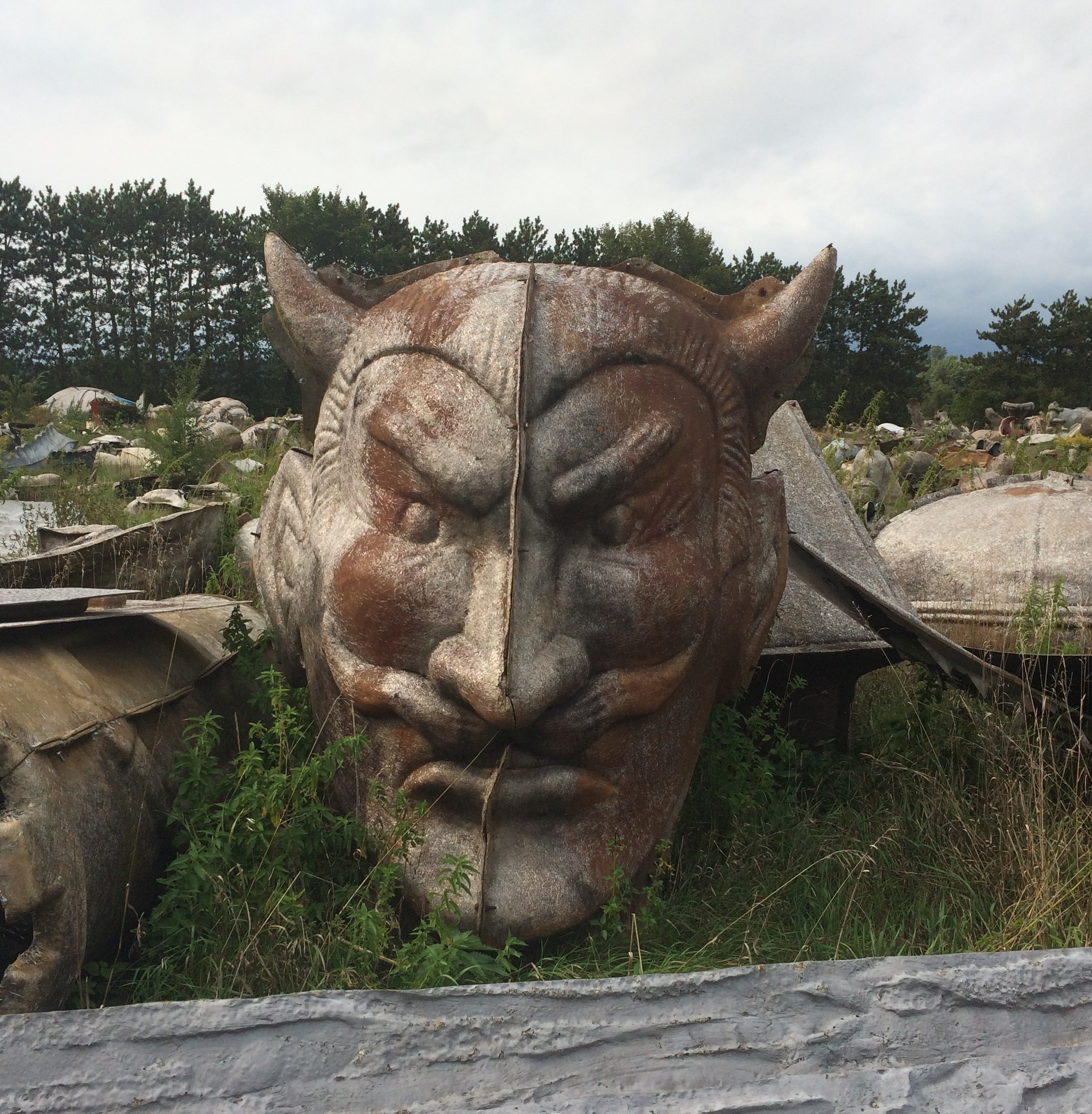 There was an old woman who lived in a shoe/She had so many children, she didn’t know what to do?
There was an old woman who lived in a shoe/She had so many children, she didn’t know what to do?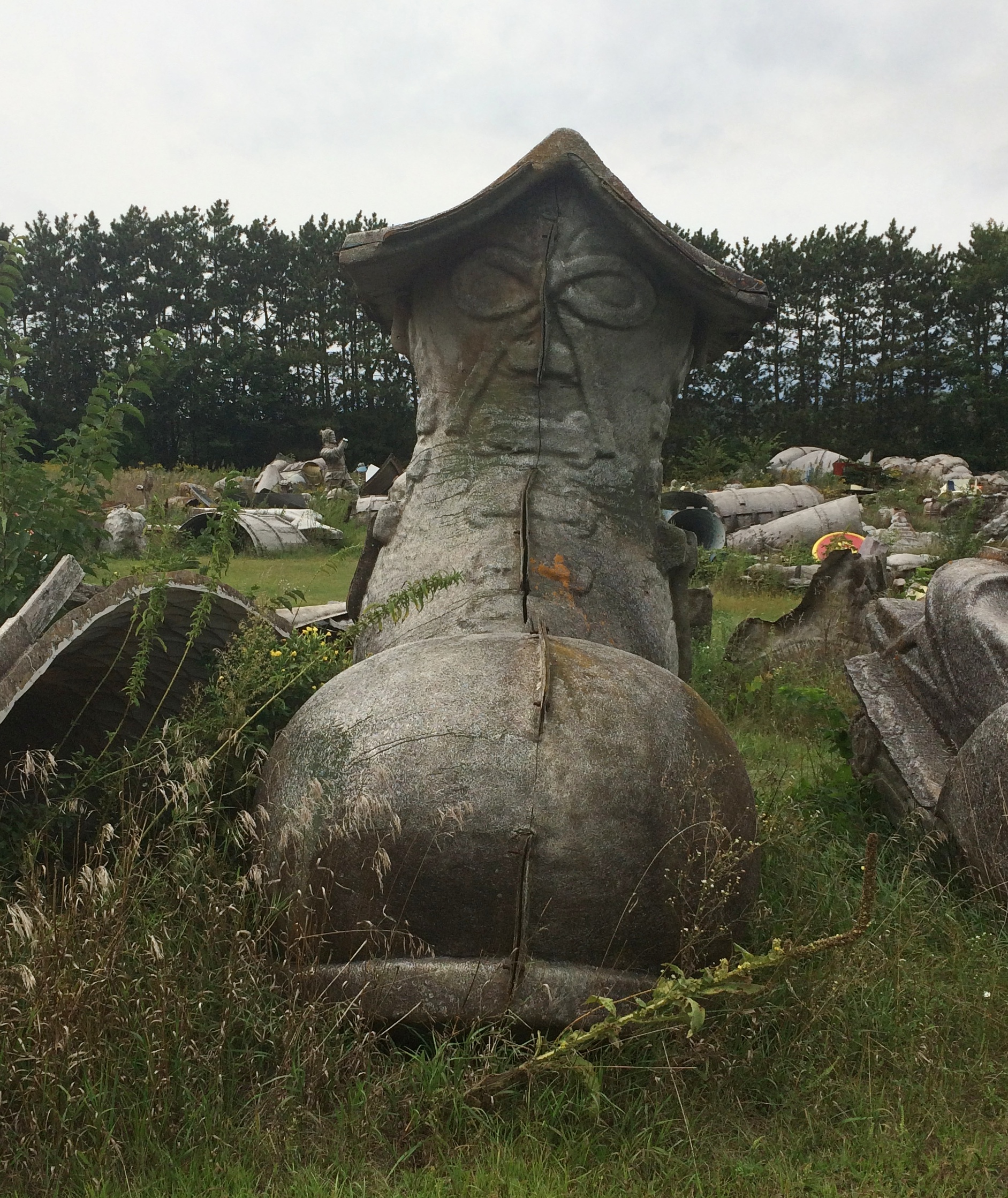 Also, the field sported a large number of animal casts.
Also, the field sported a large number of animal casts.
